Plant Descriptions – Wahlenbergia communis – Wurmbea biglandulosa
Wahlenbergia communis
Wahlenbergia gracilis
Wahlenbergia stricta
Waterhousea floribunda
Waterhousea unipunctata
Wedelia spilanthoides
Westringia amabilis
Westringia cephalantha
Westringia eremicola
Westringia fruiticosa
Westringia glabra
Westringia longifolia
Westringia sericea
Wikstroemia indica
Wilkiea austroqueenslandica
Wilkiea huegeliana
Wilkiea macrophylla
Wodyetia bifurcata
Wolffia angusta
Wollemia nobilis
Wollastonia uniflora
Woollsia pungens
Wrightia laevis
Wrightia pubescens
Wrightia saligna
Wurmbea biglandulosa
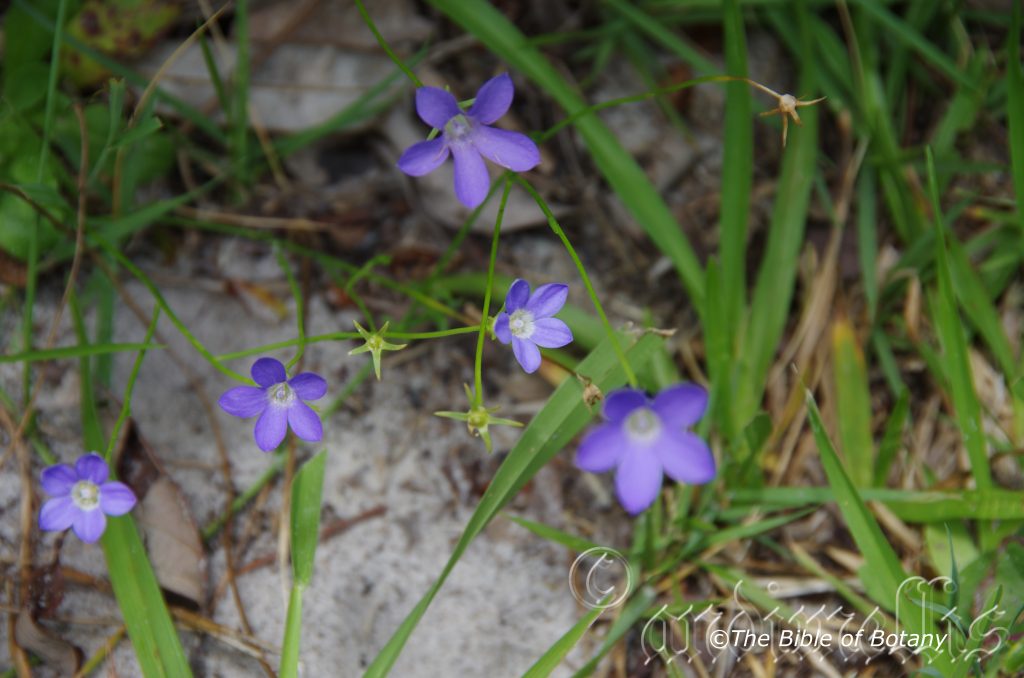
Yuraigir National Park NSW
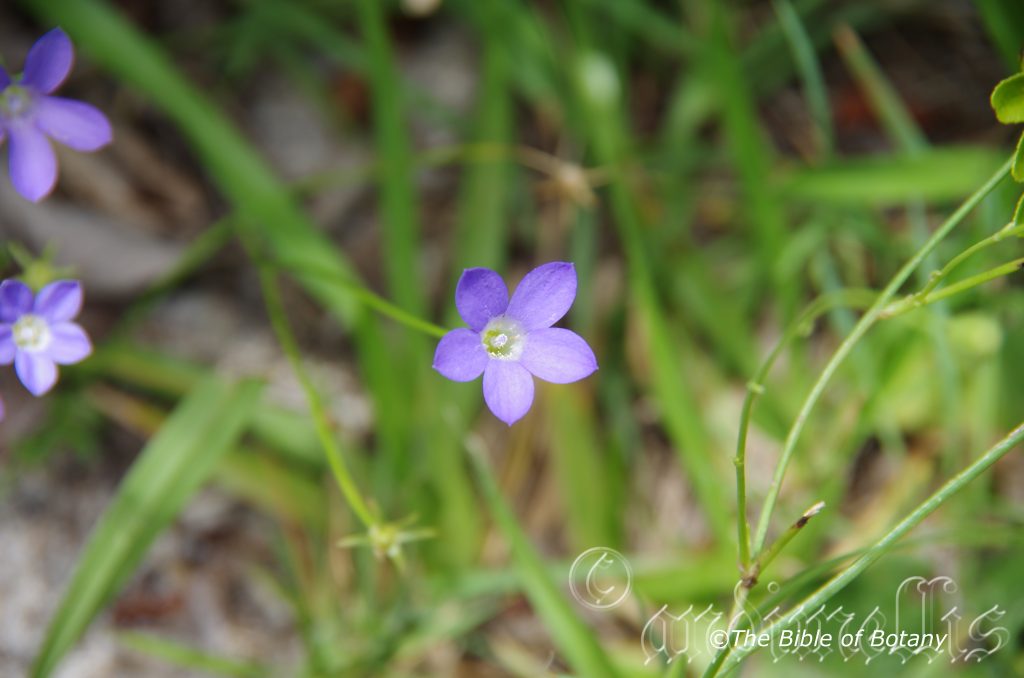
Yuraigir National Park NSW

Yuraigir National Park NSW

Yuraigir National Park NSW
Wahlenbergia communis
Classification:
Unranked: Eudicots
Class: Asterids
Order: Asterales
Family: Campanulaceae
Genus: Is named in honour of Goran Wahlenberge; 1780-1851, who was a Swedish botanist who specialized in plants from northern Sweden and the high country.
Specie: From Comunis which is Latin for gregarious or of a community. It refers to plants, which can form dense thickets where they grow in harmony with each other.
Sub specie:
Common Name: Tufted Bluebell.
Distribution:
Wahlenbergia communis is widespread south of a line from Shark Bay on the central west coast of Western Australia to Cape Melville in north eastern coastal Queensland with several populations further north on the Exmouth Peninsular. It is not found in the southern highlands of New South Wales and Victoria or the true deserts.
https://avh.ala.org.au/occurrences/search?taxa=Wahlenbergia+communis#tab_mapView
Habitat Aspect Climate:
Wahlenbergia communis prefer dappled shade to full sun at altitudes over 1350 meters. It is found on slopes in sub-alpine woodlands and subalpine grasses and heaths. The altitude ranges from 10 meters ASL to 1400 meters ASL.
The temperatures range from 3 degrees in July to 40 degrees in January.
The rainfall ranges from lows of 150mm to 2800mm average per annum.
Soil Requirements:
Wahlenbergia communis prefer sandy loams to medium clays or light silts to heavy silts. The soils are usually derived from decomposed sandstones, granites, brown basalts, black basalts, metamorphic rocks and alluvial deposits. The soils pH. ranges from 4.5pH to 7pH. It does not tolerate water logged soils. Non saline soils to moderately saline soils are tolerated.
Height & Spread:
Wild Plants: 0.5m to 0.8m by 0.2m to 0.4m when in flower.
Characteristics:
Wahlenbergia communis grows as a tufted perennial herb with glabrous stems or at times are sparsely covered in white hirsute hairs.
The alternate lower leaves are narrow oblanceolate while the upper leaves are linear. The leaves measure 5mm to 85mm in length by 0.5mm to 6mm in width. The leaves apexes are acute. The concolourous laminas are deep green to sea-green, semi glossy, and usually glabrous or at times sparsely covered in white hirsute hairs. The laminas are flat or at times slightly undulate while the margins are entire or small callus teeth. The laminas are flat or undulating near the margins and recurve slightly from the mid vein to the margins and decurve near the apex. The mid vein and main laterals are faintly visible from both laminas.
The inflorescences are erect or spreading simple cymes born on a long filiform peduncle from the base. The deep green to sea-green peduncle and pedicels are usually glabrous or at times sparsely covered in white hirsute hairs. The sparsely leafed peduncles measure 300mm to 600mm in length while the peduncles measure 45mm to 200mm in length.
The 5 erect, linear sepals are deep green to sea-green and glabrous or at times sparsely covered in white hirsute hairs externally. The sepals measure 2mm to 6.5mm in length. The pale blue, lilac, very deep purple or rarely white corolla tube measures 4mm to 8.5mm in length. The 5 oblong to broadly elliptical lobes are free or quincuncial. The lobes measure 6mm to 13mm in length.
The 5 pastel, yellow-green, inserted filaments are on one side of the corolla tube and are free for their entire length. The filaments measure 2mm to 6mm in length while the yellow, dorsifixed conical anthers measure 1mm to 1.5mm in length.
The usually white or at times white on the basal half and pale blue, lilac, very deep purple on the apical half style has a trifid, white stigma. The ovary is pale yellow-green. The pistil measures 4mm to 9mm in length. The flowers appear throughout the year under favourable conditions with a peak from late October to March.
The fruits are glabrous, elongated obconical capsules. The capsules are glabrous and measure 5mm to 10mm in length by 3.5mm to 6.5mm in diameter. The green capsules turn deep grey when ripe. The sepals are persistent on the apex of the ripe fruit.
The ovoidal to ellipsoidal, red-brown to reddish seeds measure 0.5mm to 0.7mm length by 0.25mm to 0.3mm in diameter.
Wildlife:
Wahlenbergia communis’s are unknown to the author.
The petals add colour to fish dishes and fruit salads but are often too beautiful to pick for a culinary delight.
Cultivation:
Wahlenbergia communis is another beautiful small herb that can be grown in association with other cool temperate to alpine specie on rocky sites especially those derived from granite. In cultivation it grows from 0.6 meters to 0.8 meters in height by 0.2 meters to 0.5 meters in diameter when grown in the open when in flower.
It grows exceptionally well on shallow soils where deep leaf litter keeps the soil cool and moisture at an even level. If these requirements are met it can cope with temperatures as low as minus 6 degrees and up to 34 degrees. It is not drought resistant so moisture should be maintained at all times but allow the soils to dry out between watering.
Add to the above, if it is given an adequate supply of water and a little native fertilizer on a regular basis the plants will respond with good flowering and fruit over a long period.
It is difficult to maintain outside sub alpine regions. It is particularly beautiful in small rockeries when mass planted in a formal or informal manner or in small clusters as fill in plants. Either way it accentuates the rocks, boulders and other garden features as well as other annuals and perennials especially when in flower and attracts great attention when it is at its flowering peak.
Propagation:
Seeds: The seeds of Wahlenbergia communis can be removed easily from the ripe capsules.
Sow fresh seeds directly into a seed raising mix, keeping them moist not wet. Do not over water as the seeds may rot off before germination takes place. Place the trays in a cool semi shaded area with 20mm to 30mm shade cloth in the bush house.
When the seedlings reach 30mm to 50mm in height, prick them out and plant them into 50mm native tubes using a good organic mix.
As the seedlings roots reach the bottom of the tubes plant them out into their permanent position. Do not delay.
Fertilize using Seaweed, fish emulsion or organic chicken pellets soaked in water and apply the liquid on an alternate basis. Fertilize every 2 months until the plants are well established then on an annual basis in September or March to maintain better health, vitality and flowering.
Further Comments from Readers:
“Hi reader, it seems you use The Bible of Botany a lot. That’s great as we have great pleasure in bringing it to you! It’s a little awkward for us to ask, but our first aim is to purchase land approximately 1,600 hectares to link several parcels of N.P. into one at The Pinnacles NSW Australia, but we need your help. We’re not salespeople. We’re amateur botanists who have dedicated over 30 years to saving the environment in a practical way. We depend on donations to reach our goal. If you donate just $5, the price of your coffee this Sunday, We can help to keep the planet alive in a real way and continue to bring you regular updates and features on Australian plants all in one Botanical Bible. Any support is greatly appreciated. Thank you.”
In the spirit of reconciliation we acknowledge the Bundjalung, Gumbaynggirr and Yaegl and all aboriginal nations throughout Australia and their connections to land, sea and community. We pay our respect to their Elders past, present and future for the pleasures we have gained.
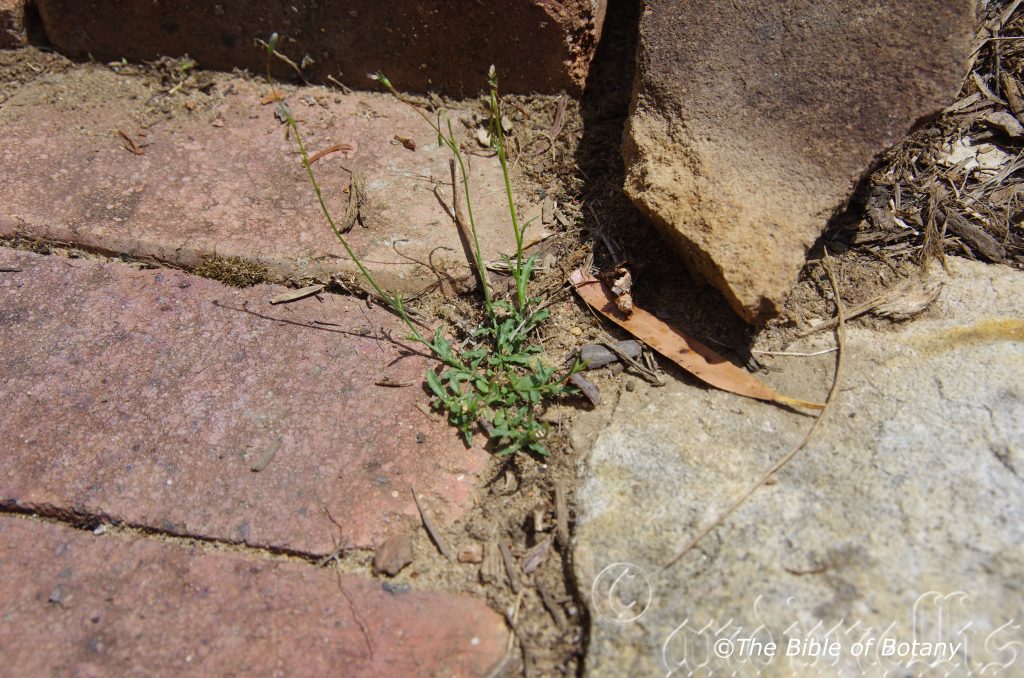
The Pinnacles NSW
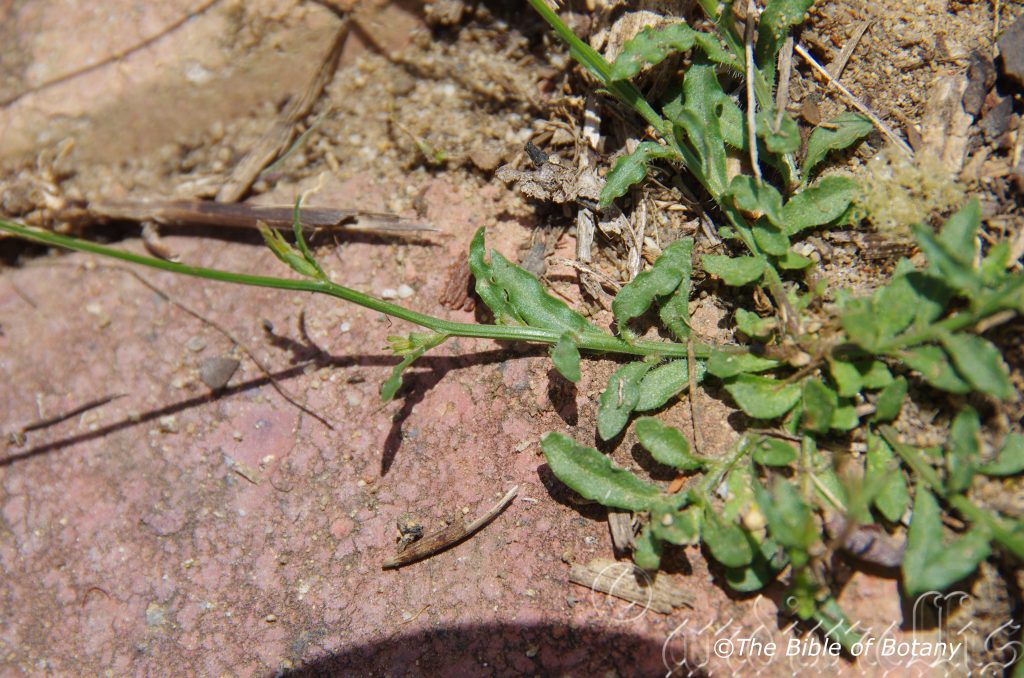
The Pinnacles NSW
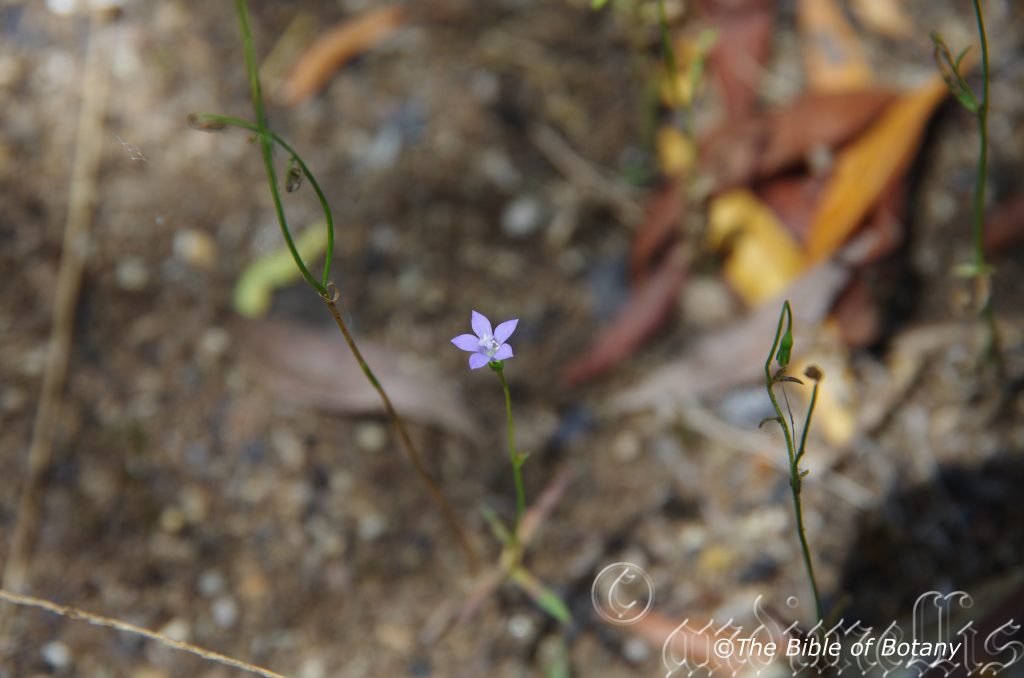
The Pinnacles NSW
Wahlenbergia gracilis
Canberra’s Floral Emblem
Classification:
Unranked: Eudicots
Class: Asterids
Order: Asterales
Family: Campanulaceae
Genus: Is named in honour of Goran Wahlenberge; 1780-1851, who was a Swedish botanist who specialized in plants from northern Sweden and
Family: Campanulaceae
Genus: Is named in honour of Goran Wahlenberge; 1780-1851, who was a Swedish botanist who specialized in plants from northern Sweden and the high country.
Specie: From Gracilis, which is Latin for slender and graceful and Us, which is Greek/Latin for the degree. It refers to plants, which are the more graceful and have more slender stems than other species in the genus.
Sub specie:
Common Name: Australian Bluebell or Sprawling Bluebell.
Distribution:
Wahlenbergia gracilis is mainly found in the eastern third of Australia with a sparse scattering of disjunct populations in the western half of the continent.
https://avh.ala.org.au/occurrences/search?taxa=Wahlenbergia+gracilis#tab_mapView
Habitat Aspect Climate:
Wahlenbergia gracilis prefer dappled shade to full sun. It grows in most type of habitats where seasonal moisture is available. The altitude ranges from 5 meters ASL to 1400 meters ASL.
The temperatures range from minus 6 degrees in July to 40 degrees in January.
The rainfall ranges from lows of 100mm to 3200mm average per annum.
Soil Requirements:
Wahlenbergia gracilis prefer sands to heavy clays or fine silts to heavy silts. The soils are usually derived from decomposed granites, sandstones, brown basalts, black basalts, metamorphic rocks, limestones, accumulated beach sands, accumulated coral sands or alluvial deposits. The soils pH. ranges from 5pH to 8pH. It does not tolerate water logged soils. Non saline soils to moderately saline soils are tolerated.
Height & Spread:
Wild Plants: 0.5m to 0.8m by 0.2m to 0.5m
Characteristics:
Wahlenbergia gracilis grows as a perennial tufted herb with glabrous stems or at times sparsely covered in white hirsute hairs.
The alternate or opposite basal leaves are obovate or oblanceolate merging to linear leaves as they progress up the stems. Wahlenbergia gracilis’s leaves measure 2mm to 60mm in length by 0.5mm to 10mm in width. The bases taper to the petioles while the apexes are obtuse to acute. The concolourous laminas are deep green to sea-green, and semi glossy. The basal leaves are glabrous or at times sparsely covered in white hirsute hairs while the upper leaves are glabrous. The leaf margins are entire or have small callus teeth. The laminas are flat or undulating near the margins and recurve slightly from the mid vein to the margins and decurve near the apex. The mid vein and main laterals are slightly prominent on the lower laminas and are faintly visible from the upper laminas. The petiole measures 0mm to 5mm in length.
The inflorescences of Wahlenbergia gracilis are erect or spreading simple cymes or weak loose panicles born on a long filiform peduncle from the base. The deep green to sea-green peduncle and pedicels are usually glabrous or at times sparsely covered in white hirsute hairs. The sparsely leafed peduncles measure 300mm to 600mm in length while the peduncles measure 40mm to 120mm in length.
The 5 erect, linear sepals are deep green to sea-green and glabrous or at times sparsely covered in white hirsute hairs externally. The sepals measure 1mm to 3mm in length. The usually blue or at times pink or rarely white corolla tube measures 1mm to 4.5mm in length. The 5 oblong to broadly elliptical lobes are free or at times quincuncial. The lobes measure 1.5mm to 6mm in length.
The 5 pastel, yellow-green, inserted filaments are on one side of the style and are free for their entire length. The filaments measure 1mm to 4mm in length while the lemon-yellow, dorsifixed sagittate anthers measure 0.5mm to 1.5mm in length.
The usually white or at times white on the basal half and pale blue or pale pink on the apical half style has a trifid, white stigma. The ovary is deep green to sea-green and is usually glabrous or sparsely covered in white hirsute hairs externally and glabrous internally. The ovary measure 1mm to 1.5mm in length by 1mm to 1.5mm in width. The pistil measures 4mm to 9mm in length. The flowers appear throughout the year under favourable conditions with a peak from late September to November.
Wahlenbergia gracilis’s fruits are elongated obconical capsules. The capsules are glabrous and measure 3mm to 7mm in length by 2mm to 3mm in diameter. The green capsules turn pale fawn-brown when ripe. The sepals are persistent on the apex of the ripe fruit.
Wildlife:
Wahlenbergia gracilis’s are unknown to the author.
The petals add colour to fish dishes and fruit salads but are often considered too beautiful to pick for a culinary delight.
Cultivation:
Wahlenbergia gracilis is another beautiful small herb that can be grown in association with other cool temperate to alpine specie on rocky sites especially those derived from granite. In cultivation it grows from 0.6 meters to 0.8 meters in height by 0.2 meters to 0.5 meters in diameter when grown in the open when in flower.
It grows exceptionally well on shallow soils where deep leaf litter keeps the soil cool and moisture at an even level. If these requirements are met it can cope with temperatures as low as minus 6 degrees and up to 34 degrees. It is not drought resistant so moisture should be maintained at all times but allow the soils to dry out between watering.
Add to the above, if it is given an adequate supply of water and a little native fertilizer on a regular basis the plants will respond with good flowering and fruit over a long period.
It needs to be treated as an annual. It is particularly beautiful in small rockeries planted in mass in a formal or an informal manner or in small clusters as fill in plants. Either way it accentuates the rocks, boulders and other garden features as well as other annuals and perennials when in flower and it attracts great attention when it is at its flowering peak.
Propagation:
Seeds: The seeds of Wahlenbergia gracilis can be removed easily from the capsules.
Sow freshly treated seeds directly into a seed raising mix, keeping them moist not wet. Do not over water as the seeds will rot off before germination takes place. Place the trays in a cool shaded area with 50mm shade cloth in the bush house. When the seedlings are 30mm to 50mm tall, prick them out and plant them into 50mm native tubes using a good organic mix.
As the seedlings roots reach the bottom of the tubes plant them out into their permanent position. Do not delay.
Fertilize using Seaweed, fish emulsion or organic chicken pellets soaked in water and apply the liquid on an alternate basis. Fertilize every month until the plants are well established to maintain better health, vitality and flowering.
Further Comments from Readers:
“Hi reader, it seems you use The Bible of Botany a lot. That’s great as we have great pleasure in bringing it to you! It’s a little awkward for us to ask, but our first aim is to purchase land approximately 1,600 hectares to link several parcels of N.P. into one at The Pinnacles NSW Australia, but we need your help. We’re not salespeople. We’re amateur botanists who have dedicated over 30 years to saving the environment in a practical way. We depend on donations to reach our goal. If you donate just $5, the price of your coffee this Sunday, We can help to keep the planet alive in a real way and continue to bring you regular updates and features on Australian plants all in one Botanical Bible. Any support is greatly appreciated. Thank you.”
In the spirit of reconciliation we acknowledge the Bundjalung, Gumbaynggirr and Yaegl and all aboriginal nations throughout Australia and their connections to land, sea and community. We pay our respect to their Elders past, present and future for the pleasures we have gained.
Wahlenbergia stricta
Classification:
Unranked: Eudicots
Class: Asterids
Order: Asterales
Family: Campanulaceae
Genus: Is named in honour of Goran Wahlenberge; 1780-1851, who was a Swedish botanist who specialized in plants from northern Sweden and the high country.
Specie: From Stricta, which is Latin for to draw tight. It refers to organs, which are stiff and rigid.
Sub specie: Wahlenbergia stricta subsp. alterna. From Altern?tum, which is Latin for for alternating, vacillating or to take turns in. It refers to structures or organs, which are placed alternatively.
Sub specie: Wahlenbergia subsp. stricta. From Stricta, which is Latin for to draw tight. It refers to organs, which are stiff and rigid.
Common Name: Australian Bluebell, Austral Bluebell or Tall Bluebell.
Distribution:
Wahlenbergia stricta is found south along the coastal plains from the Swan river Plain to the Unicup Nature Reserve and around Lake Unicup in far south west, Western Australia.
In the east it is found in a line south from Cardwell in far north eastern Queensland to Streaky Bay on southern Eyre Peninsular in southern South Australia.
It is also found on King Island in Bass Straight and the eastern half of Tasmania.
https://avh.ala.org.au/occurrences/search?taxa=Wahlenbergia+stricta#tab_mapView
Habitat Aspect Climate:
Wahlenbergia stricta prefer dappled shade to full sun at altitudes over 1350 meters. It is found on slopes in sub-alpine woodlands and amongst alpine herbs and grasses. The altitude ranges from 10 meters ASL to 2100 meters ASL.
The temperatures range from minus 7 degrees in July to 40 degrees in January.
The rainfall ranges from lows of 100mm to 2400mm average per annum.
Soil Requirements:
Wahlenbergia stricta prefer sands to heavy clays or fine silts to heavy silts. The soils are usually derived from decomposed granites, sandstones, brown basalts, black basalts, metamorphic rocks, limestones, accumulated beach sands, accumulated coral sands or alluvial deposits. The soils pH. ranges from 5pH to 8pH. It does not tolerate water logged soils. Non saline soils to moderately saline soils are tolerated.
Height & Spread:
Wild Plants: 0.2m to 0.9m by 0.2m to 0.5m.
Characteristics:
Wahlenbergia stricta grows as a tufted perennial herb with stems that are usually sparsely covered in white hirsute hairs or at times are glabrous.
The opposite or rarely whirled basal leaves of Wahlenbergia stricta are disjunctly alternate up the stem. The obovate or oblanceolate merging to linear leaves as they progress up the stems. The leaves measure 5mm to 70mm in length by 1.5mm to 14mm in width. The bases taper while the apexes are obtuse to acute. The concolourous laminas are deep green to sea-green, and dull to semi glossy. The leaves are sparsely covered in white hirsute hairs or at times glabrous. The leaf margins undulate and are entire or have small callus teeth. The laminas are flat or undulating near the margins and recurve slightly from the mid vein to the margins and decurve near the apex. The mid vein and main laterals are slightly prominent on the lower laminas and are faintly visible from the upper laminas.
The inflorescences of Wahlenbergia stricta are erect or spreading simple cymes or weak loose panicles born on a long filiform peduncle from the base. The deep green to sea-green peduncle and pedicels are usually glabrous or at times sparsely covered in white hirsute hairs. The sparsely leafed peduncles measure 300mm to 700mm in length while the peduncles measure 40mm to 120mm in length.
The 5 erect, linear sepals are deep green to sea-green and sparsely covered in white hirsute hairs externally or at times are glabrous externally. The sepals measure 3mm to 16mm in length. The usually blue or at times white corolla tube measures 4mm to 11mm in length. The 5 oblong to broadly elliptical lobes are free or contorted. The lobes measure 6mm to 20mm in length by 4mm to 10mm in width.
The 5 white filaments are on one half of the corolla and are free for their entire length. The filaments measure 4mm to 11mm in length while the yellow-fawn, dorsifixed linear anthers measure 2mm to 2.5mm in length.
The usually pastel green or at times pastel green on the basal half and pastel blue on the apical half style has a trifid, white stigma. The ovary is deep green to sea-green and is usually sparsely covered in white hirsute hairs externally or at times glabrous and glabrous internally. The ovary measure 1mm to 1.5mm in length by 1mm to 1.5mm in width. The pistil measures 7mm to 14mm in length. The flowers appear throughout the year under favourable conditions with a peak from late September to November.
Wahlenbergia stricta’s fruits are ellipsoidal to globose capsules. The capsules are usually sparsely covered in white hirsute hairs externally or at times glabrous and measure 3mm to 10mm in length by 2mm to 5mm in diameter. The green capsules turn pale fawn-brown when ripe. The sepals are persistent on the apex of the ripe fruit.
Confusing Subspecies varieties:
Wahlenbergia stricta subsp. alterna has leaves, which are mostly alternate with only the lowermost leaves being opposite. The leaves measure 5mm to 70mm in length by 1mm to 6mm in width. The corolla is usually white externally and blue internally while the style is usually exerted.
Wahlenbergia subsp. stricta has leaves, which are mostly opposite with only the uppermost being alternate. The leaves measure 5mm to 70mm in length by 1mm to 13mm in width. The corolla is usually blue externally and internally while the style is usually inserted.
Wildlife:
Wahlenbergia stricta’s are unknown to the author.
The petals add colour to fish dishes and fruit salads but are often too beautiful to pick for a culinary delight.
Cultivation:
Wahlenbergia stricta is another beautiful small herb that can be grown in association with other cool temperate to alpine specie on rocky sites especially those derived from granite. In cultivation it grows from 0.6 meters to 0.8 meters in height by 0.2 meters to 0.5 meters in diameter when grown in the open when in flower.
It grows exceptionally well on shallow soils where deep leaf litter keeps the soil cool and moisture at an even level. If these requirements are met it can cope with temperatures as low as minus 6 degrees and up to 34 degrees. It is not drought resistant so moisture should be maintained at all times, but allow the soil to dry out between watering.
Add to the above, if it is given an adequate supply of water and a little native fertilizer on a regular basis the plants will respond with good flowering and fruit over a long period.
It is difficult to maintain outside alpine regions so ensure it is exposed to as many frosts as possible. It is particularly beautiful in small rockeries planted in a formal manner in mass or an informal manner using small clusters as fill in plants. Either way it accentuates the rocks, boulders and other garden features as well as other annuals and perennials when not in flower and attracts the attention when it is at its flowering peak.
Propagation:
Seeds: The seeds of Wahlenbergia stricta can be removed easily from the capsules.
Sow freshly treated seeds directly into a seed raising mix, keeping them moist not wet. Do not over water as the seeds will rot off before germination takes place. Place the trays in a cool shaded area with 50mm shade cloth in the bush house. When the seedlings are 30mm to 50mm tall, prick them out and plant them into 50mm native tubes using a good organic mix.
As the seedlings roots reach the bottom of the tubes plant them out into their permanent position. Do not delay.
Fertilize using Seaweed, fish emulsion or organic chicken pellets soaked in water and apply the liquid on an alternate basis. Fertilize every month until the plants are well established to maintain better health, vitality and flowering.
Further Comments from Readers:
“Hi reader, it seems you use The Bible of Botany a lot. That’s great as we have great pleasure in bringing it to you! It’s a little awkward for us to ask, but our first aim is to purchase land approximately 1,600 hectares to link several parcels of N.P. into one at The Pinnacles NSW Australia, but we need your help. We’re not salespeople. We’re amateur botanists who have dedicated over 30 years to saving the environment in a practical way. We depend on donations to reach our goal. If you donate just $5, the price of your coffee this Sunday, We can help to keep the planet alive in a real way and continue to bring you regular updates and features on Australian plants all in one Botanical Bible. Any support is greatly appreciated. Thank you.”
In the spirit of reconciliation we acknowledge the Bundjalung, Gumbaynggirr and Yaegl and all aboriginal nations throughout Australia and their connections to land, sea and community. We pay our respect to their Elders past, present and future for the pleasures we have gained.
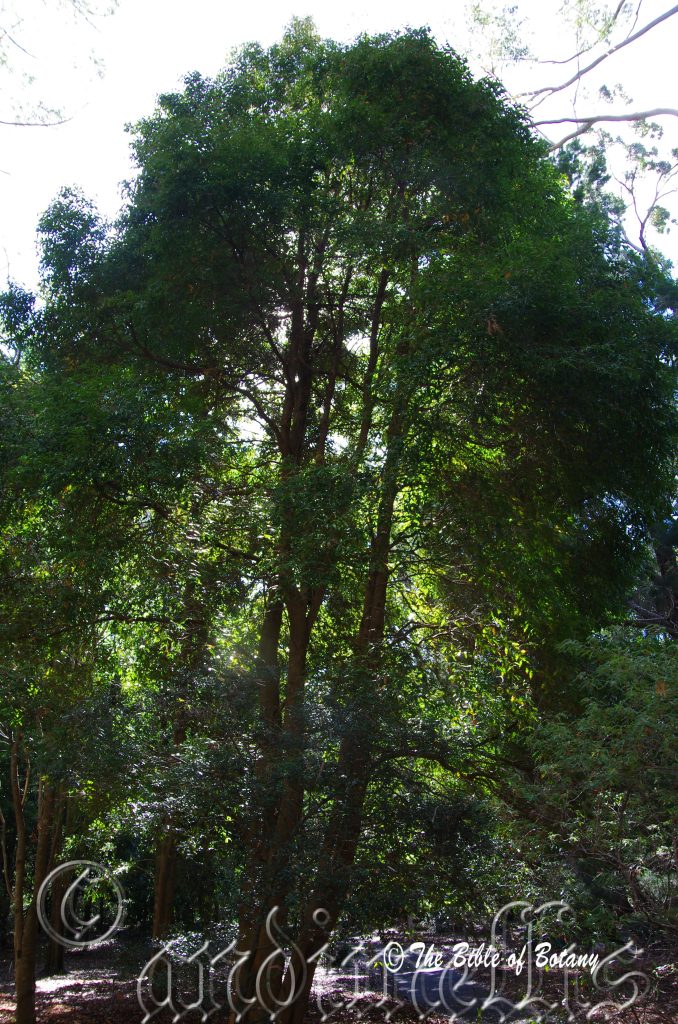
Bellinger NSW
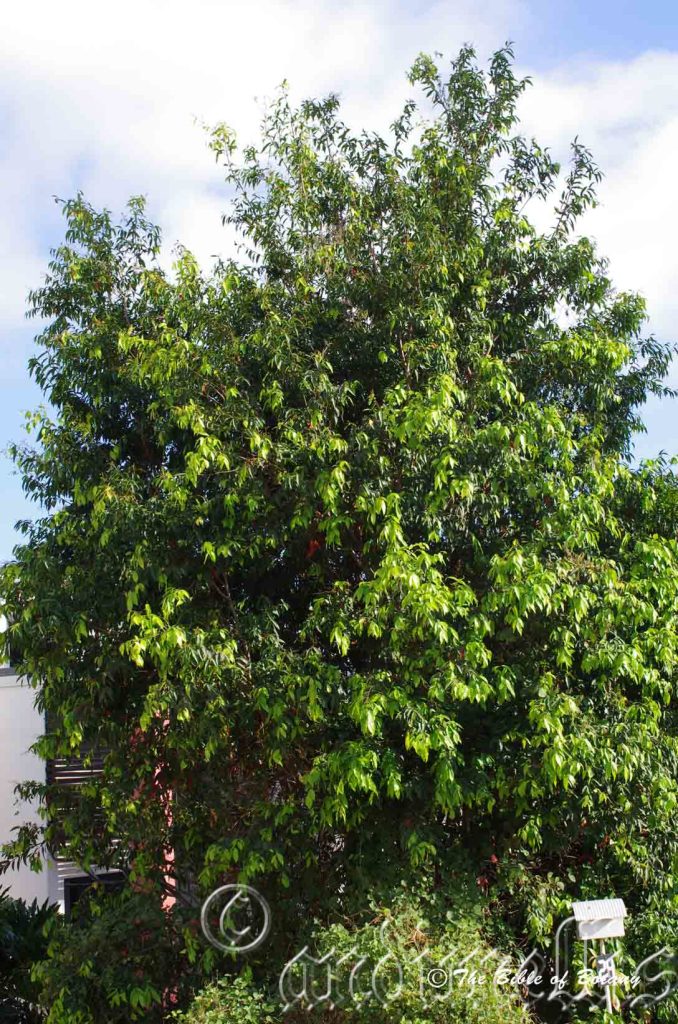
Norman Park Qld.

Norman Park Qld.
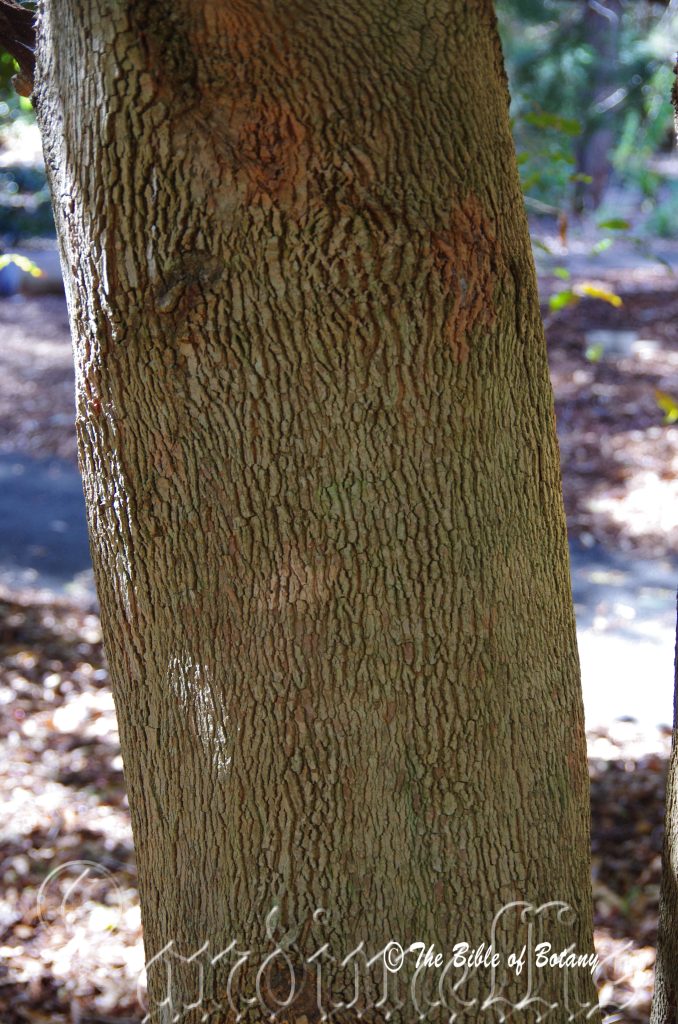
Bellinger NSW

Roma Street Floral Gardens Brisbane Qld

Norman Park Qld.

Norman Park Qld.
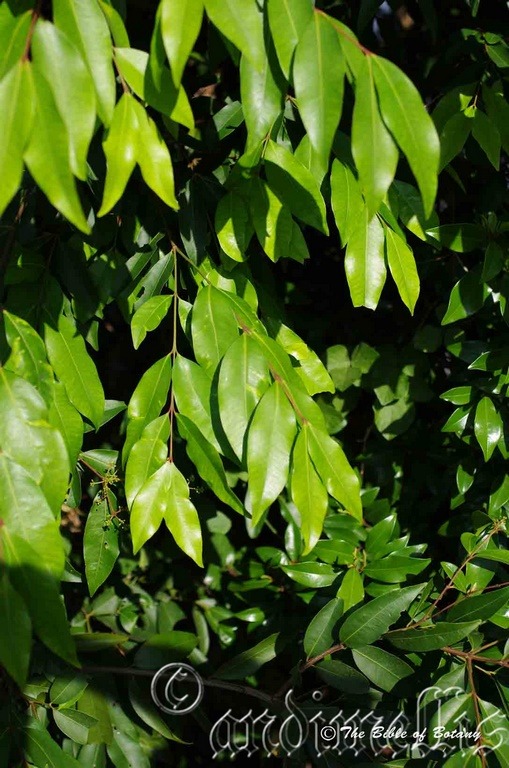
Norman Park Qld.
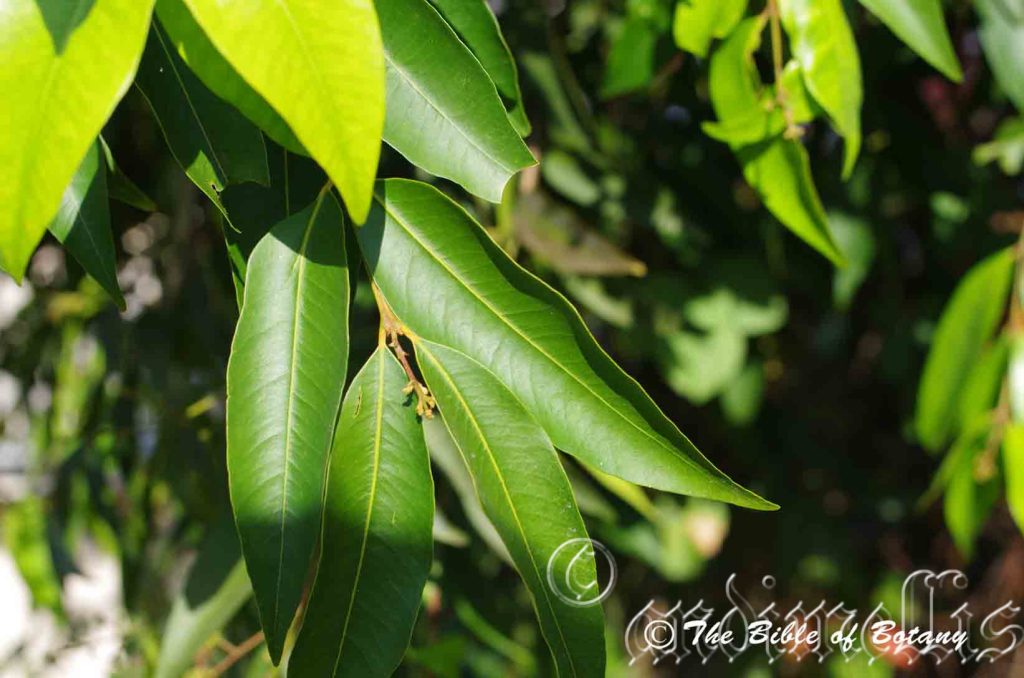
Norman Park Qld.
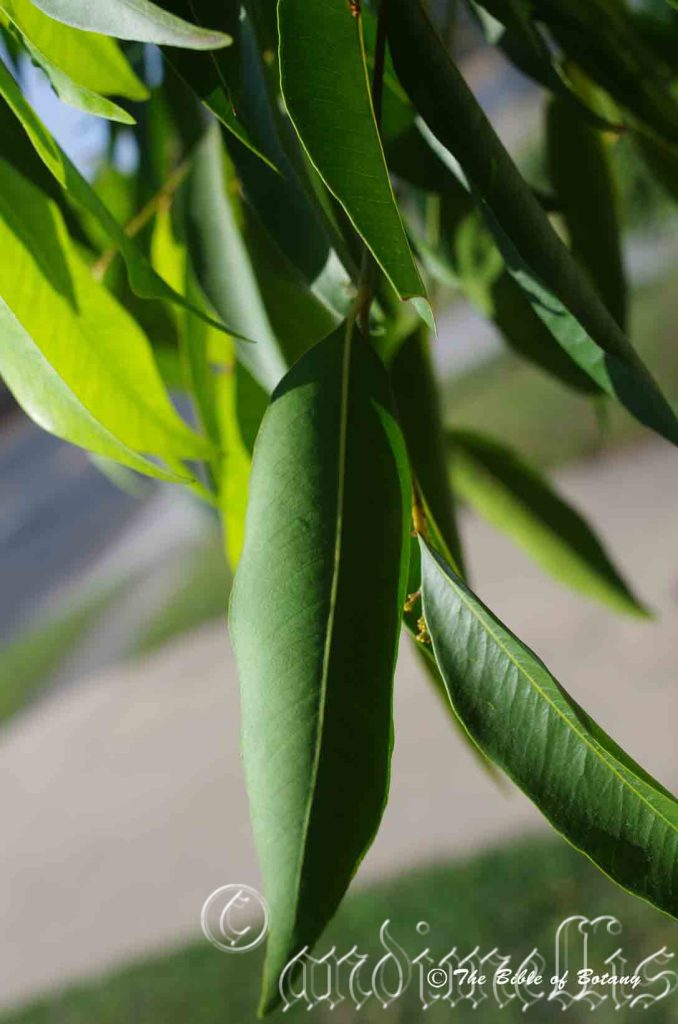
Norman Park Qld.

Grafton Library NSW

Grafton Library NSW
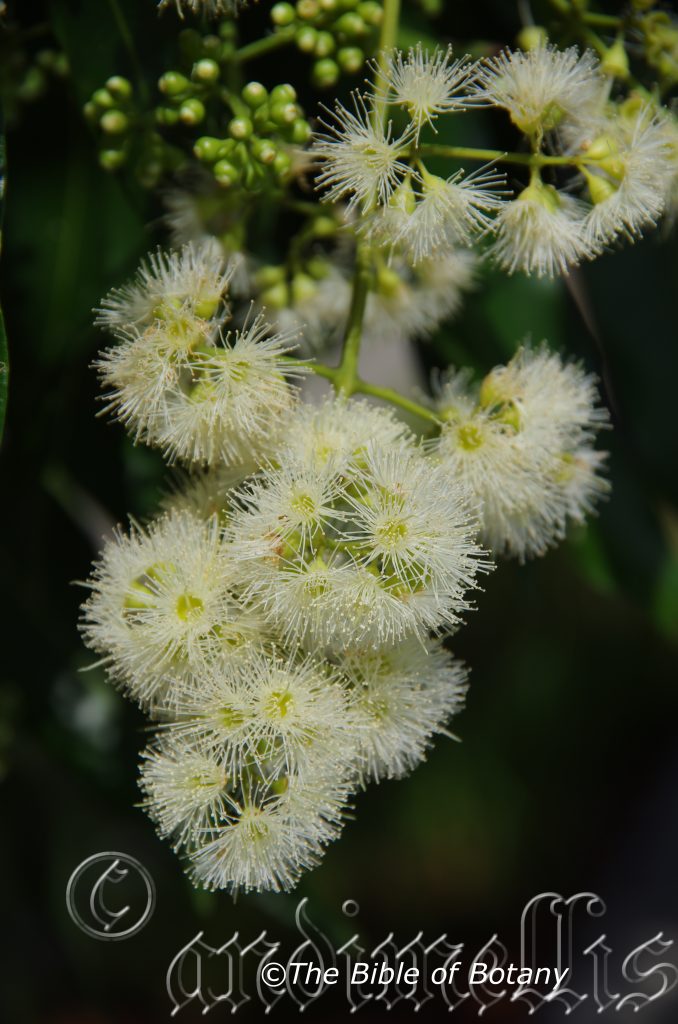
Grafton Library NSW
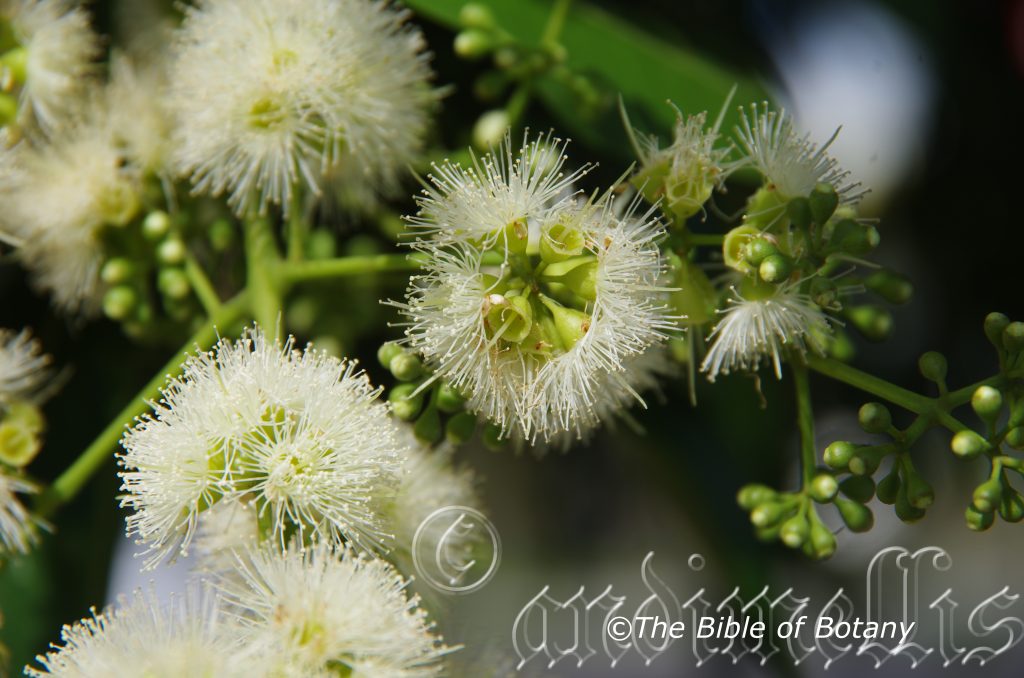
Grafton Library NSW
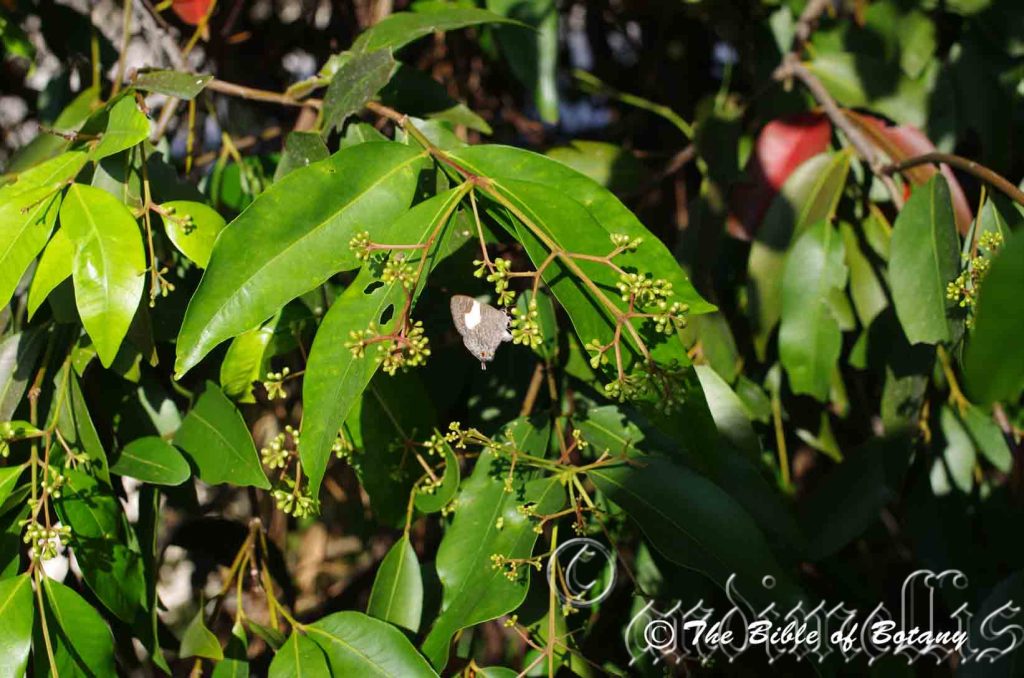
Norman Park Qld.
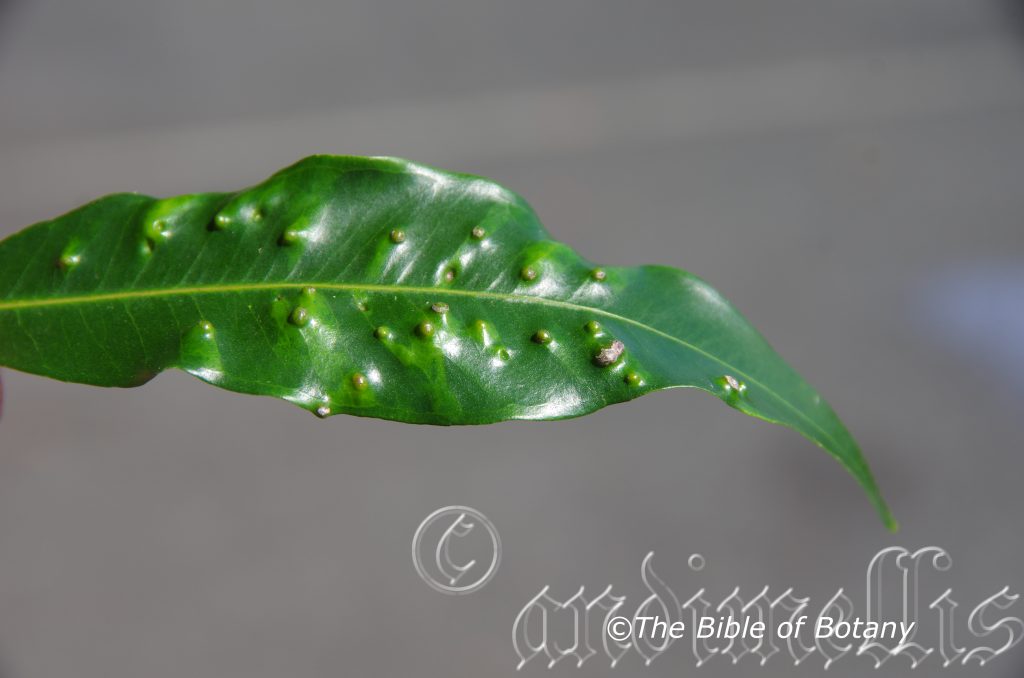
Grafton Library NSW

Grafton Library NSW
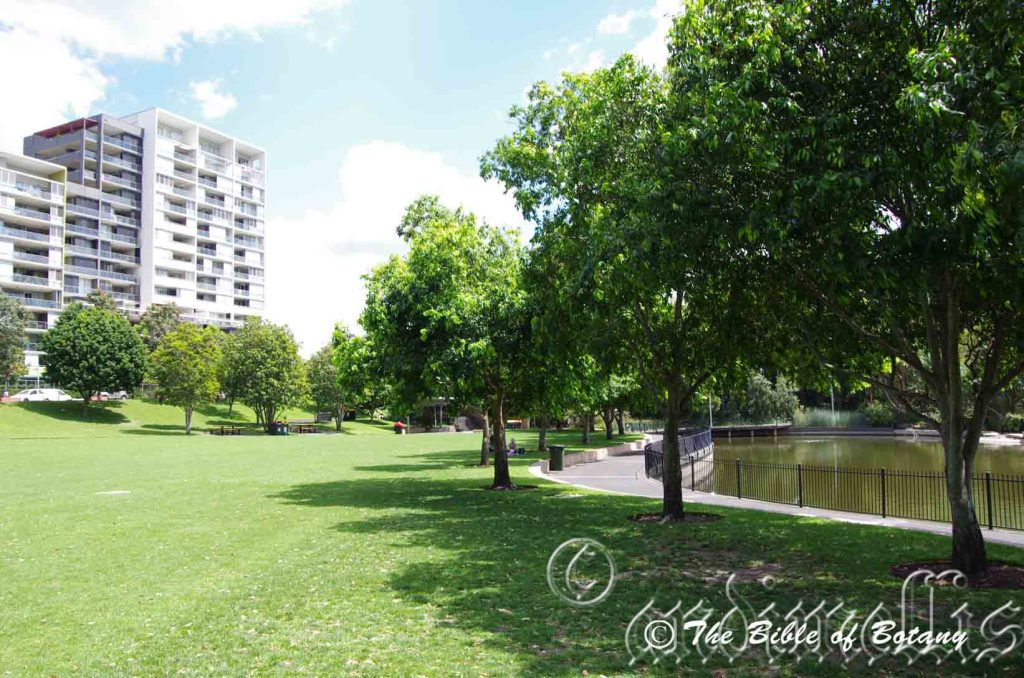
Roma Street Floral Reserve Qld.
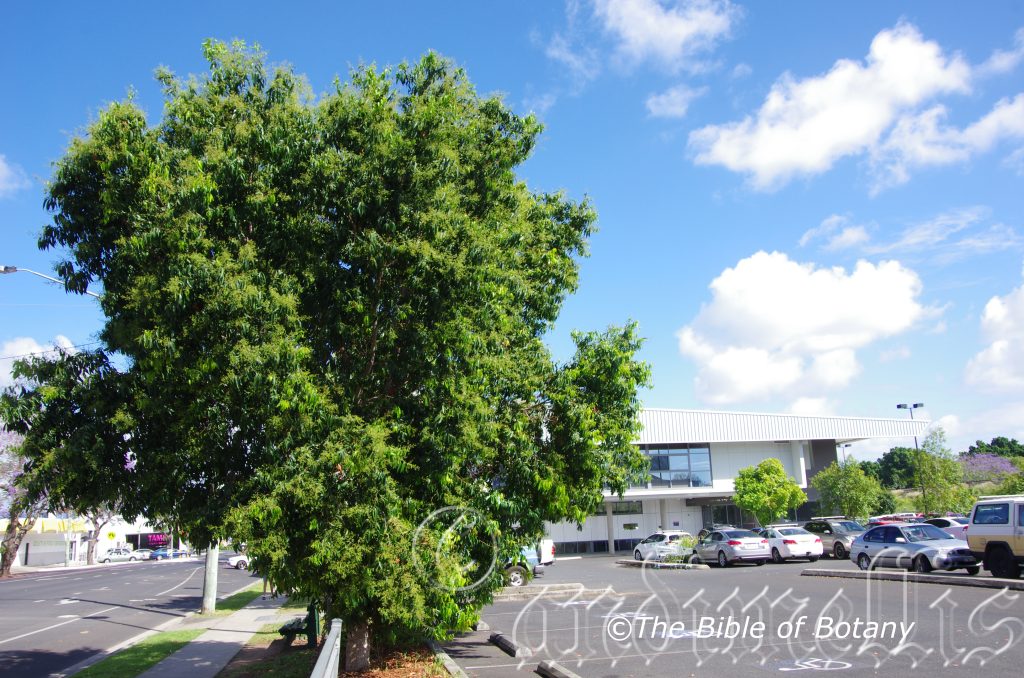
Grafton Library NSW
Waterhousea floribunda
Classification:
Unranked: Eudicots
Class: Rosids
Order: Myrtales
Family: Myrtaceae
Subfamily: Myrtoideae
Tribe: Syzygieae
Genus: Is named in honour of John Teast Waterhouse; 1824-1883, who was an Australian botanist
Specie: From Fl?ris, which is Latin for a flower or Fl?s, which is Roman for the Goddess of spring and flowers and Bundus, which is Latin for abundant or plenty. It refers to plants, which bear flowers that are in prolific numbers when in flower or plants, which are more floriferous than other species in the genus.
Sub specie:
Common Name: Weeping Lilly Pilly or Weeping Myrtle
Distribution:
Waterhousea floribunda is found south from Cairns in far north east Queensland to Narrabeen in New South Wales. It is found on and east of the Great Dividing Range to the coast.
https://avh.ala.org.au/occurrences/search?taxa=Waterhousea+floribunda#tab_mapView
Habitat:
Aspect / Climate:
Waterhousea floribunda prefers dappled shade to full sun. It grows along creeks and streams in riparian zones. The altitude ranges from 10 meters ASL to 400 meters ASL.
The temperatures range from 2 degrees in July to 36 degrees in January.
The rainfall ranges from lows of 1000mm to 3200mm average per annum.
Soil Requirements:
Waterhousea floribunda prefers better quality sandy loams to medium clays or fine silts to heavy silts on creek meanders. The soils are usually derived from decomposed brown basalts, black basalts, metamorphic rocks, shale or alluvial deposits. The soils pH. ranges from 5pH to 6.5pH. It tolerates seasonal water logged soils and periodic flooding. Non saline soils to moderately saline soils are tolerated.
Height & Spread:
Wild Plants: 20m to 30m by 8m to 10m.
Characteristics:
Waterhousea floribunda grows as a medium to large tree with deep grey fissured to flaky bark.
The opposite lanceolate to narrow elliptic leaves of Waterhousea floribunda measure 55mm to 160mm in length by 15mm to 50mm in width. The glabrous petiole measures 2mm to 7mm in length. The bases are cuneate while the apexes are acuminate. The discolourous laminas are deep green, glabrous, semi glossy on the upper laminas while the lower laminas are paler and dull. The laminas are covered in numerous fine oil glands, gently recurve upwards near the margins and decurve gently downwards near the apex. The leaf margins are entire and undulate. The mid vein, pinnate lateral veins and intramarginal veins are prominent on the lower laminas and are distinctly visible from the upper laminas.
The inflorescences of Waterhousea floribunda are panicles born from the terminals. The mid green to deep grass-green peduncles, rachises and pedicels are glabrous. The peduncles measure 40mm to 70mm in length while the rachises 8mm to 20mm in length and the pedicels measure 2mm to 3mm in length. The mid green to deep green sepals are minute. The white, cohering petals are shed as a single unit and measure 1.5mm to 2mm in length.
The stamens are the most prominent parts of the flowers and measure 3mm to 7.5mm in length. The filiform filaments are white while the fawnish–yellow, obloidal dorsifixed anthers measure 0.3mm in length by 0.2mm in width.
The white pistil is glabrous while the ovary is green. The pistil measures 6mm to 10mm in length. The flowers appear from August to October.
Waterhousea floribunda’s fruits are globose capsules. The glabrous capsules measure 10mm to 16mm in length by 12mm to 20mm in diameter. The green capsules remain green but take on a reddish tinge when ripe. The orbicular, erect orifice contains the persistent style or remnant of the style on the ripe fruit. The erect ridge of the orifice measures 1mm to 2mm in height.
Wildlife:
Waterhousea floribunda’s are attractive to most nectar feeding birds, butterflies and pollen flies.
The fruits are probably eaten by larger honey eaters and fruit eating pigeons.
Cultivation:
Waterhousea floribunda is a superb small to medium tree for cultivating in a suburban rainforest garden, specimen shade tree or park tree. In cultivation it grows much smaller from 8 meters to 12 meters in height by 10 meters to 12 meters in diameter when grown in the open or taller and narrower when grown as a rain forest tree.
It grows exceptionally well on deep fertile soils where deep leaf litter keeps the soil cool and moisture at an even level. If these requirements are met it can cope with temperatures as low as minus 2 degrees and up to 36 degrees once established. It is not drought resistant and drought will cause set back and decline in the glossiness of the foliage so it is best to keep the moisture level even at all times.
Add to the above, if it is given an adequate supply of water and a little native fertilizer on a regular basis the plants will respond with good flowering and fruit over a long period.
It makes a reasonable tree for the placement of epiphytic orchids and ferns which like relatively dense shade.
It can also be used as a bonsai plant where the bright pink to bright red leaves would add interest.
Propagation:
Seeds: Seeds of Waterhousea floribunda can be removed easily from the capsules.
Sow freshly treated seeds directly into a seed raising mix, keeping them moist not wet. Do not over water as the seeds will rot off before germination takes place. Place the trays in a cool shaded area with 50mm shade cloth in the bush house.
When the seedlings are 30mm to 50mm tall, prick them out and plant them into 50mm native tubes using a good organic mix.
As the seedlings roots reach the bottom of the tubes plant them out into their permanent position. Do not delay.
Fertilize using Seaweed, fish emulsion or organic chicken pellets soaked in water and apply the liquid on an alternate basis. Fertilize every 2 months until the plants are well established then on an annual basis in September or March to maintain better health, vitality and flowering.
Further Comments from Readers:
“Hi reader, it seems you use The Bible of Botany a lot. That’s great as we have great pleasure in bringing it to you! It’s a little awkward for us to ask, but our first aim is to purchase land approximately 1,600 hectares to link several parcels of N.P. into one at The Pinnacles NSW Australia, but we need your help. We’re not salespeople. We’re amateur botanists who have dedicated over 30 years to saving the environment in a practical way. We depend on donations to reach our goal. If you donate just $5, the price of your coffee this Sunday, We can help to keep the planet alive in a real way and continue to bring you regular updates and features on Australian plants all in one Botanical Bible. Any support is greatly appreciated. Thank you.”
In the spirit of reconciliation we acknowledge the Bundjalung, Gumbaynggirr and Yaegl and all aboriginal nations throughout Australia and their connections to land, sea and community. We pay our respect to their Elders past, present and future for the pleasures we have gained.
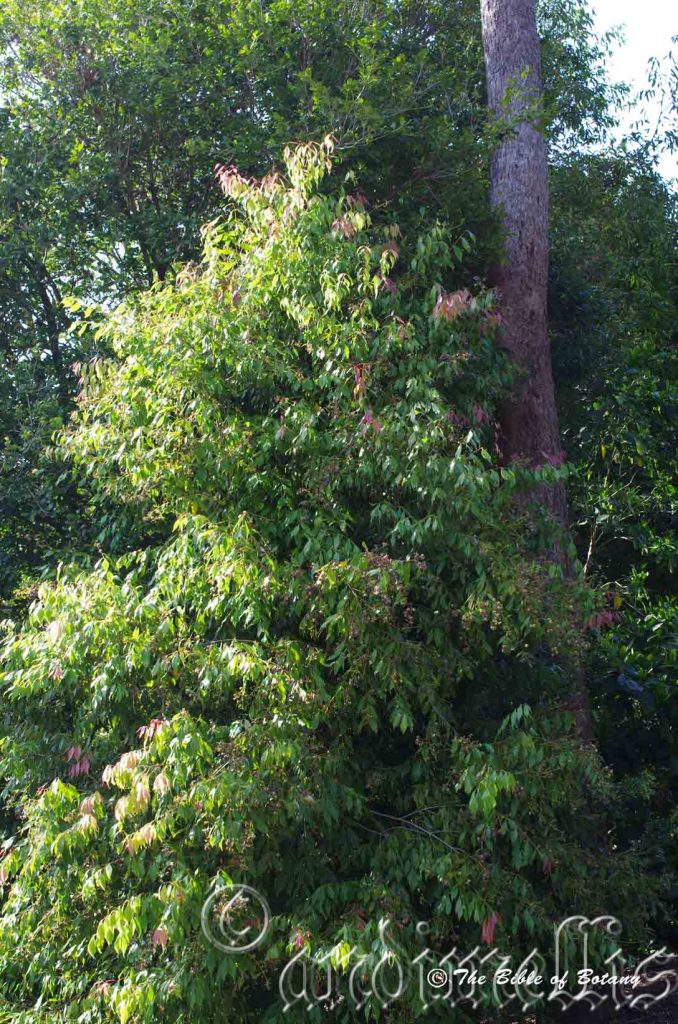
Mount Cootha Botanical Gardens Qld
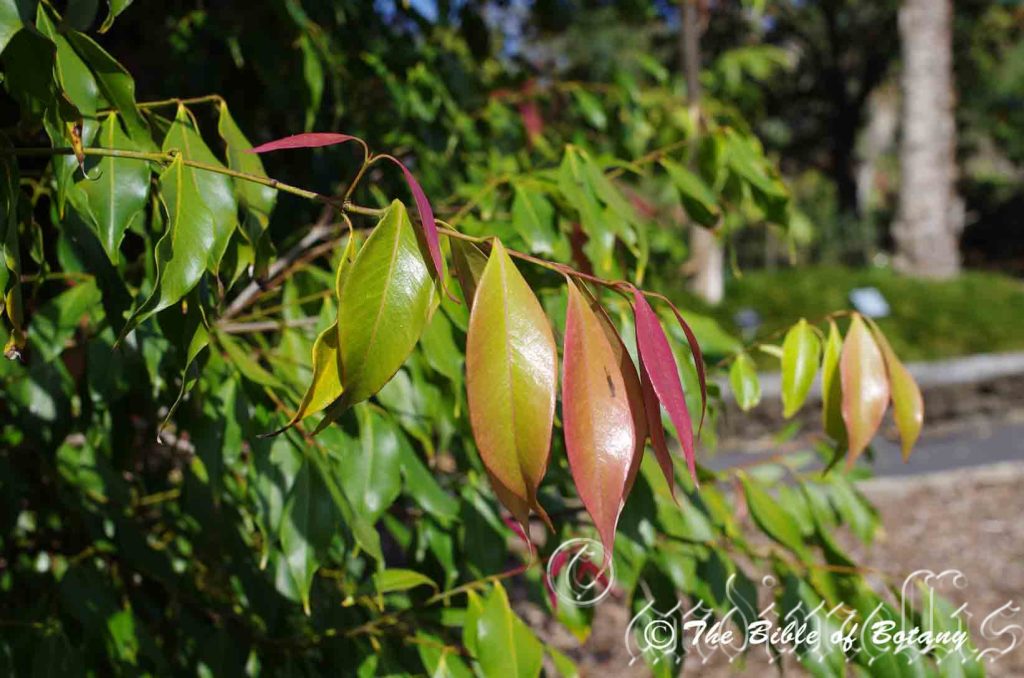
Mount Cootha Botanical Gardens Qld
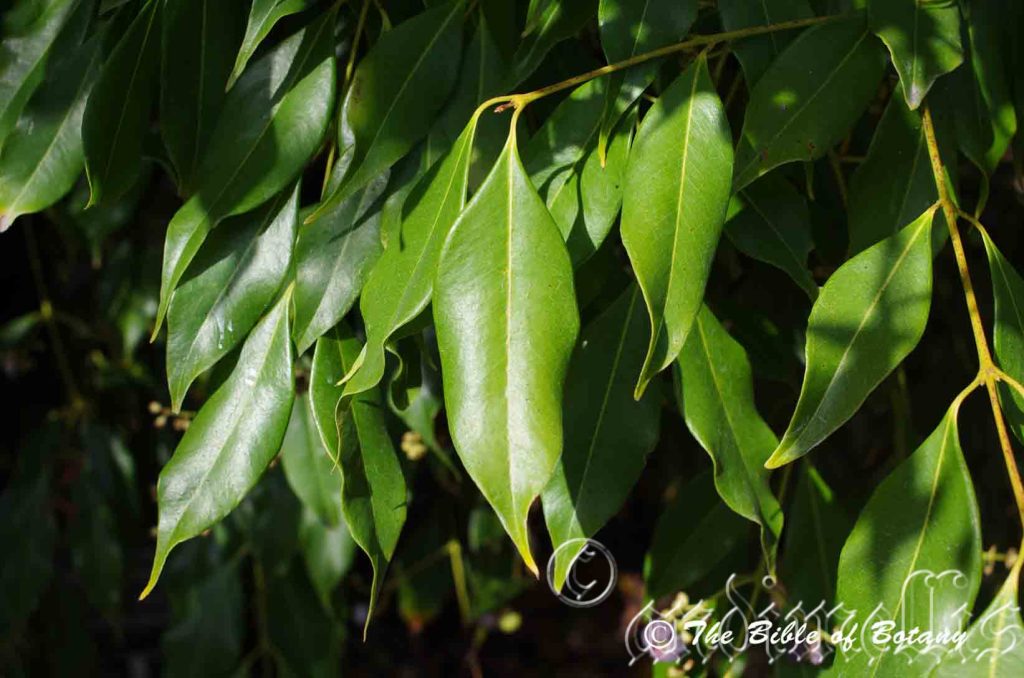
Mount Cootha Botanical Gardens Qld
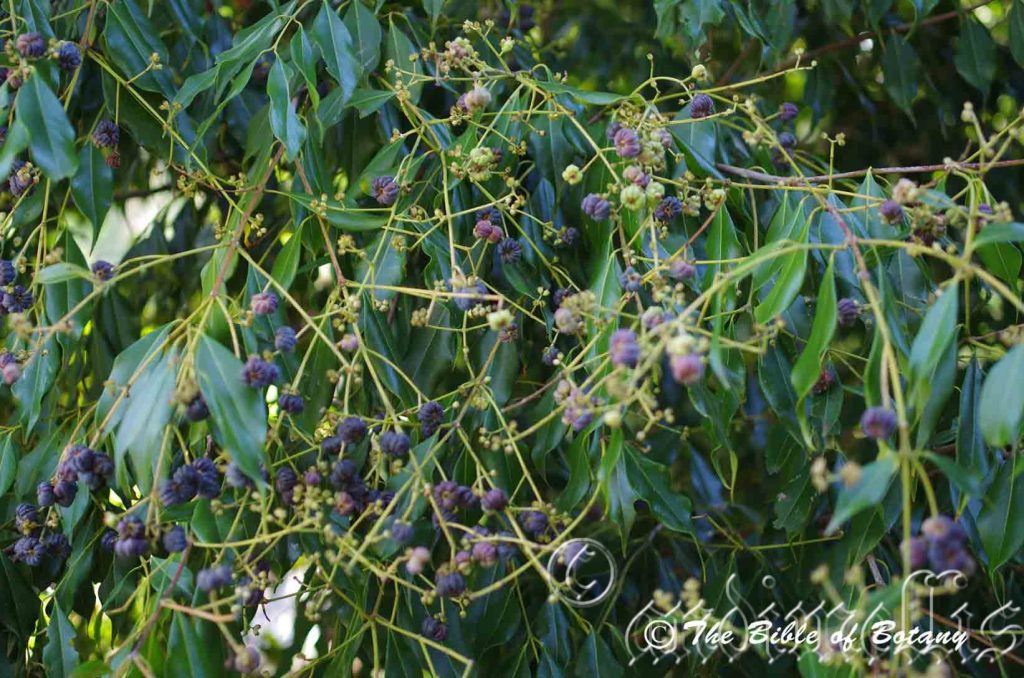
Mount Cootha Botanical Gardens Qld

Mount Cootha Botanical Gardens Qld
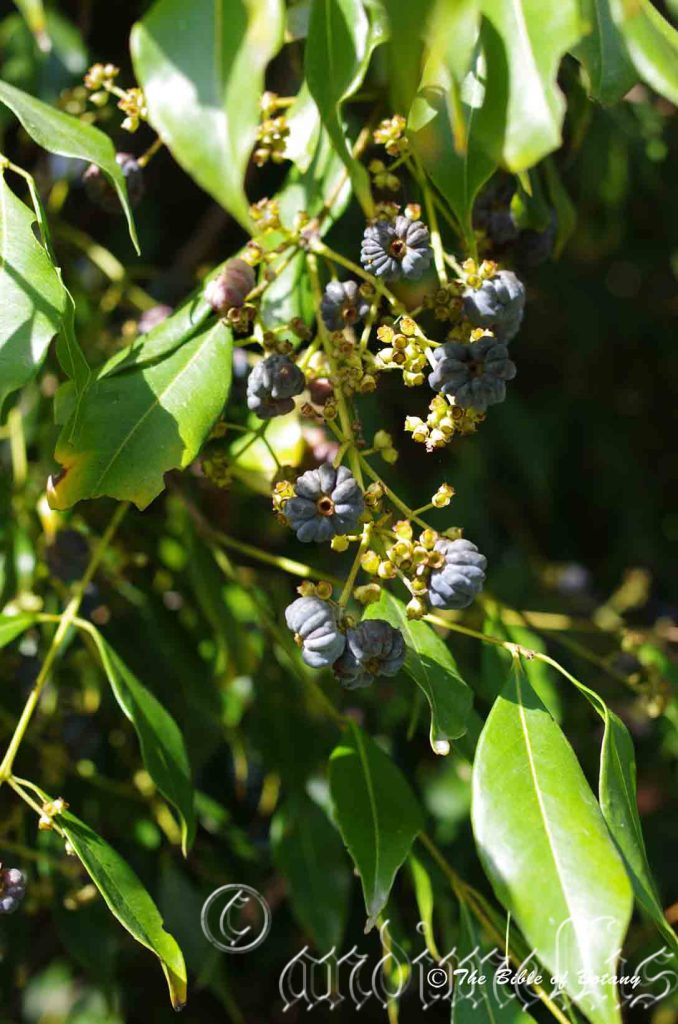
Mount Cootha Botanical Gardens Qld
Waterhousea unipunctata
Classification:
Unranked: Eudicots
Class: Rosids
Order: Myrtales
Family: Myrtaceae
Subfamily: Myrtoideae
Tribe: Syzygieae
Genus: Is named in honour of John Teast Waterhouse; 1824-1883, who was an Australian botanist.
Specie: From Oîos, which is Ancient Greek or ?num, which is Latin for one or a single unit and Punctate, which is Latin for a dot or spot. It refers to fruits, which have a single large depressions at the base.
Sub specie:
Common Name: Watergum, Satinash, Rolypoly or Rolypoly Satinash.
Distribution:
Waterhousea unipunctata is found south from near Cooktown to the Paluma National Park in far north eastern Queensland.
https://avh.ala.org.au/occurrences/search?taxa=Waterhousea+unipunctata#tab_mapView
Habitat Aspect Climate:
Waterhousea unipunctata prefers dappled shade to full sun. It grows in well-developed tropical rainforests. The altitude ranges from 10 meters ASL to 1200 meters ASL.
The temperatures range from 8 degrees in July to 36 degrees in January.
The rainfall ranges from lows of 150mm to 3200mm average per annum.
Soil Requirements:
Waterhousea unipunctata prefers better quality loams to medium clays. The soils are usually derived from decomposed brown basalts, black basalts, metamorphic rocks or shale. The soils pH. ranges from 5pH to 6.5pH. It tolerates seasonal water logged soils with periodic flooding. Non saline soils to moderately saline soils are tolerated.
Height & Spread:
Wild Plants: 16m to 20m by 8m to 12m.
Characteristics:
Waterhousea unipunctata grows as a medium tree with deep grey fissured to flaky bark.
The opposite obovate to oblanceolate leaves of Waterhousea unipunctata’s measure 60mm to 120mm in length by 20mm to 47mm in width. The petiole measures 10mm to 18mm in length. The bases are cuneate to broad cuneate while the apexes are narrow acuminate to acuminate. The discolourous laminas are deep green to sea-green, glabrous and semi glossy on the upper laminas while the lower laminas are paler and dull. The laminas strongly undulate and gently to strongly decurve downwards near the apex. The leaf margins are entire. The mid vein is prominent on the lower lamina and is depressed on the upper lamina while the while the pinnate lateral veins are slightly prominent on the lower laminas and are visible from the upper laminas. The 1 to 14 oil glands in each reticulation are barely visible to the naked eye.
The inflorescences of Waterhousea unipunctata are panicles born from the terminals and the upper leaf axils. The elliptical, minute caducous bracts are mid green to deep green. The mid yellow-green peduncles, rachises and pedicels are glabrous. The peduncles measure 0mm to 10mm in length while the rachises 40mm to 60mm in length and the pedicels measure 2.5mm to 5mm in length.
The hypanthium measures 1.5mm to 3.5mm in diameter. The 5 round-triangular sepals measure 0.3mm to 1mm in length. The mid yellow-green sepals are minute. The white, orbicular, cohering petals are shed as a single unit and measure 1.5mm to 2.2mm in length. There are 30 to 80 minute oil glands on each petal.
The stamens are the most prominent parts of the flowers and measure 3mm to 7mm in length. The filiform filaments are white while the fawnish–yellow, obloidal dorsifixed anthers measure 0.2mm to 0.3mm in length by 0.2mm to 0.3mm in diameter.
The white pistil is glabrous while the ovary is green. The pistil measures 3mm to 5mm in length. The flowers appear from August to October.
Waterhousea unipunctata’s fruits are strongly polar, depressed spherical capsules. The capsules are glabrous and measure 8mm to 12mm in length by 11mm to 17mm in diameter. The green capsules deep purple-blue when ripe. There are 12 to 16 usually 14 longitudinal ribs extending to the apical orifice. The sepals are persistent on the apex of the ripe fruit. There is a single seed which is slightly smaller than the fruit.
Wildlife:
Waterhousea unipunctata’s are attractive to most nectar feeding birds, butterflies and pollen flies. The fruits are probably eaten by larger honey eaters and fruit eating pigeons.
Cultivation:
Waterhousea unipunctata is a superb small to medium tree for cultivating in a suburban rainforest garden, specimen shade tree or park tree. In cultivation it grows from 10 meters to 15 meters in height by 10 meters to 15 meters in diameter when grown in the open or taller and narrower when grown as a rain forest tree.
It grows exceptionally well on deep fertile soils where deep leaf litter keeps the soil cool and moisture at an even level. If these requirements are met it can cope with temperatures as low as minus 2 degrees and up to 36 degrees once established. It is not drought resistant and drought will cause set back and decline in the glossiness of the foliage so it is best to keep the moisture level even at all times.
Add to the above, if it is given an adequate supply of water and a little native fertilizer on a regular basis the plants will respond with good flowering and fruit over a long period.
It makes a reasonable tree for the placement of epiphytic orchids and ferns which like relatively dense shade.
Propagation:
Seeds: The seeds of Waterhousea unipunctata can be removed easily from the capsules.
Sow freshly treated seeds directly into a seed raising mix, keeping them moist not wet. Do not over water as the seeds will rot off before germination takes place. Place the trays in a cool shaded area with 50mm shade cloth in the bush house. When the seedlings are 30mm to 50mm tall, prick them out and plant them into 50mm native tubes using a good organic mix.
As the seedlings roots reach the bottom of the tubes plant them out into their permanent position. Do not delay.
Fertilize using Seaweed, fish emulsion or organic chicken pellets soaked in water and apply the liquid on an alternate basis. Fertilize every 2 months until the plants are well established then on an annual basis in September or March to maintain better health, vitality and flowering.
Further Comments from Readers:
“Hi reader, it seems you use The Bible of Botany a lot. That’s great as we have great pleasure in bringing it to you! It’s a little awkward for us to ask, but our first aim is to purchase land approximately 1,600 hectares to link several parcels of N.P. into one at The Pinnacles NSW Australia, but we need your help. We’re not salespeople. We’re amateur botanists who have dedicated over 30 years to saving the environment in a practical way. We depend on donations to reach our goal. If you donate just $5, the price of your coffee this Sunday, We can help to keep the planet alive in a real way and continue to bring you regular updates and features on Australian plants all in one Botanical Bible. Any support is greatly appreciated. Thank you.”
In the spirit of reconciliation we acknowledge the Bundjalung, Gumbaynggirr and Yaegl and all aboriginal nations throughout Australia and their connections to land, sea and community. We pay our respect to their Elders past, present and future for the pleasures we have gained.
Westringia amabilis
Classification:
Unranked: Eudicots
Class: Asterids
Order: Lamiales
Family: Lamiaceae
Subfamily: Prostantheroideae
Genus: Is named in honour of Johan Westring; 1753-1833, who was a Swedish botanist who specialized in Lichens.
Specie: From Amabilis, which is Latin for to be deserving of Love or beautiful. It refers to plants, which are more beautiful than other species in the genus.
Sub specie:
Common Name:
Distribution:
Westringia amabilis is found south from Mapleton in southern coastal Queensland to Coorabakh National Park near Taree in central eastern New South Wales.
https://avh.ala.org.au/occurrences/search?taxa=Westringia+amabilis#tab_mapView
Habitat Aspect Climate:
Westringia amabilis prefers dappled shade to full sun. It grows in dry sclerophyll forests or moist Eucalyptus forests. The altitude ranges from 10 meters ASL to 860 meters ASL.
The temperatures range from minus 3 degrees in August to 38 degrees in February.
The rainfall ranges from lows of 800mm to 1600mm average per annum.
Soil Requirements:
Westringia amabilis prefers coarse sands, fine sands, and sandy loams to medium clays. The soils are usually derived from granites or at times black basalts. The soils pH. ranges from 4.5pH to 7.5pH. It does not tolerate water logged soils. Non saline soils to moderately saline soils are tolerated.
Height & Spread:
Wild Plants:1m to 3m by 1.5m to 3m.
Characteristics:
Westringia amabilis grows as a medium moderately dense shrub with mid grey-green to mid green stems. The stems are glabrous to sparsely covered in white hirsute hairs.
The ovate to narrow ovate leaves of Westringia amabilis are in whorls of 3.They measure 16mm to 25mm in length by 4mm to 9mm in width. The mid grey-green to mid green petiole is sparsely to moderately covered in white in hirsute hairs. The petioles measure 1.5mm to 2mm in length. The bases are cuneate while the apexes are broad acute. The concolourous laminas are mid grey-green to mid green, and glabrous to sparsely covered in white to pale grey hirsute hairs. The laminas are flat or decurve slightly near the margins and decurve downwards or recurve upwards near the apex. The margins are entire. The mid vein is slightly prominent on the lower lamina.
The inflorescences of Westringia amabilis are born singularly from the leaf axils. The mid grey-green to mid green bracteoles measure 3.5mm to 4.5mm in length. The flowers are sessile.
The grey-green to mid green calyx tube and lobes are usually sparsely or rarely densely covered in white hirsute hairs externally and are glabrous internally. The calyx tube measures 3mm to 3.5mm in length. The 5 triangular to narrow triangular lobes measure 3mm to 5mm in length by 1mm to 3mm in width. The pale mauve to white, with fine reddish to brownish dotted internally corolla tubes measure 3mm to 6mm in length. The corolla is covered in short, white pulverulent hairs externally and longer hairs internally within the throat. The upper emarginate lobe measures 4mm to 6mm in length by 4mm to 6mm in width. The 2 broad oblong lateral lobes apexes are broad emarginate or truncate. The lateral lobes measure 5mm to 6.5mm in length by 2.5mm to 4mm in width. The lower lobe is broad oblong with a broad emarginate apex and measures 6.5mm to 10mm in length by 5mm to 6.6mm in width.
The 2 upper exserted stamens are fertile while the lower 2 are sterile. The white filaments have are 2 spots, one on the basal quarter and the other at the base of the apical half. The filaments measure 4.5mm to 6mm in length. The white to deep fawn, dorsifixed, spherical anthers measure 1mm in diameter.
The white style is located between the two upper stamens and is covered in white retrorse hairs near the base. The stigma is white and glabrous while the lime green to grey-green ovary is covered in white retrorse hairs. The pistil measures 12mm to 16mm in length. The flowers appear throughout the year with a peak from September through to early December.
Westringia amabilis’s fruits are globose to urceolate capsules. The capsules are sparsely covered in soft, white pulverulent hairs and measure 3mm to 5mm in length by 2mm to 2.5mm in diameter. The mid green capsules turn grey when ripe. The calyx and calyx lobes are persistent while the calyx surrounds the ripe fruit. The small black seeds are hard.
Wildlife:
Westringia amabilis’s flowers support many small butterflies, native bees and pollen flies when in flower.
Cultivation:
Westringia amabilis is a beautiful, small to medium shrub that can be grown in association with other dry sclerophyll forest trees and shrubs and semi-arid plants. In fact it could be called Mr. Versatility as it is so versatile. In cultivation it grows from 2 meters to 3 meters in height by 2 meters to 3 meters in diameter when grown in the open.
It grows exceptionally well on lighter soils where deep leaf litter keeps the soil cool and moisture at an even level. If these requirements are met they can cope with temperatures as low as minus 2 degrees and up to 40 degrees. It is moderately drought resistant once established but once their thresh hold is reached will turn up their toes very quickly. This is also the case in areas where the soil remains wet for prolonged periods.
It is ideal for along driveways, formal English style gardens, bush gardens, heath gardens and large rockeries. Add to the above, if it is given an adequate supply of water on well drained, sunny locations and a little native fertilizer on a regular basis the plants will respond with good flowering throughout the year.
Westringia amabilis would make outstanding contribution to a drier heath garden. Here it can be used as the taller growing plant scattered throughout the heath scene. When you design a flat heath garden which Westringia amabilis is well suited don’t use contours to display the plants as heath lands are almost always flat or have a slight rise. Plants must be planted close together and be short so you can see over the tallest ones with the exception of one or two plants at the most. These will be feature plants. The idea is to achieve a feeling of expansive flatness. This can be achieved with using Westringia amabilis’s green linear leaves and having them contrasting with finer pale green or soft grey to glaucous coloured foliages. Use a lot of procumbent plants like Carpobrotus edulis, Hibbertia procumbens or Hibbertia linearis or if the garden is further inland try some of the smaller Verticordia specie, Sturt’s Desert Pea, Willdampia formosa or Sturt’s Desert Rose, Gossypium sturtianum. Mix it with other smaller shrubs so none of them dominate the scene but blend in to give a mosaic of foliage colours that you oversee. Here I immediately think of Actinotis helianthi or Grevillea thelemanniana for two great contrasting foliage plants with different growth habits.
The shrubs can be tip pruned or heavily pruned to any shape once established which makes them excellent plants for topiary work.
The shrubs can be tip pruned or heavily pruned to any shape once established and require some pruning to maintain dense habit.
It makes a very good hedge row and screens.
Propagation:
Seeds: The seeds of Westringia amabilis can be removed easily from the fruits.
Sow fresh seeds directly into a seed raising mix, keeping them moist not wet. Do not over water as the seeds will rot off before germination takes place. Place the trays in a cool shaded area with 50mm shade cloth in the bush house. When the seedlings are 20 to 25 mm tall, prick them out and plant them into 50mm native tubes using a good organic mix.
As the seedlings roots reach the bottom of the tubes plant them out into their permanent position. Do not delay.
Cuttings: Fortunately Westringia amabilis cuttings strike easy. Use 100mm to 150mm long tip cuttings or lateral shoots from the present season’s growth. Take them in warmer months of the year. Remove half the leaves from the bottom section being careful not to tear the bark.
1 Prepare the cutting mix by adding two thirds sharp clean river sand, one third peat or one third perlite. These ingredients must be sterilized,
2 Select good material from non diseased plants,
3 Select semi green stems for cuttings,
4 Place the cutting on a flat, hard surface, and make a clean cut down one side of the cutting at the base for 10mm with a sharp sterile knife or razor blade. – This scarification of the node will increase the chances of roots emerging from this spot. Now remove all but one or two the leaves, leaving the apex leaves in tact. If the leaves are very large in proportion to the stem, cut off the apical halves.
5 Fill a saucer with water, and place a little medium strength rooting hormone into another container like a milk bottle top. Dip the node end of the cutting into the water and then into the rooting hormone. Tap off any excess hormone,
6 Use a small dipple stick or old pencil to poke a hole into the soilless potting mix. Ensure the hole is slightly larger than the stem diameter and be careful not to wipe the rooting hormone off the cuttings base. Place 2 to 4 cuttings in each of the 50mm native tubes,
7 I like to place the tubes in bucket with holes drilled in the bottom to allow excess water to drain out. A plastic bag that fits over the bucket is ideal to help maintain temperature and moisture. Place in a semi shaded, warm position like under 50mm shade cloth.
8 When the cuttings have struck, open the bag to allow air circulation for a few days to a week,
9 Once hardened off remove the cuttings from the bag and allow to further hardening for a few more days to a week,
10 Transplant into a good potting mix to grow on.
Fertilize using seaweed, fish emulsion or organic chicken pellets soaked in water on an alternate basis. Fertilize every two months until the plants are established then twice annually in early September or March to maintain health, vitality and better flowering.
Further Comments from Readers:
“Hi reader, it seems you use The Bible of Botany a lot. That’s great as we have great pleasure in bringing it to you! It’s a little awkward for us to ask, but our first aim is to purchase land approximately 1,600 hectares to link several parcels of N.P. into one at The Pinnacles NSW Australia, but we need your help. We’re not salespeople. We’re amateur botanists who have dedicated over 30 years to saving the environment in a practical way. We depend on donations to reach our goal. If you donate just $5, the price of your coffee this Sunday, We can help to keep the planet alive in a real way and continue to bring you regular updates and features on Australian plants all in one Botanical Bible. Any support is greatly appreciated. Thank you.”
In the spirit of reconciliation we acknowledge the Bundjalung, Gumbaynggirr and Yaegl and all aboriginal nations throughout Australia and their connections to land, sea and community. We pay our respect to their Elders past, present and future for the pleasures we have gained.
Westringia cephalantha
Classification:
Unranked: Eudicots
Class: Asterids
Order: Lamiales
Family: Lamiaceae
Subfamily: Prostantheroideae
Genus: Is named in honour of Johan Westring; 1753-1833, who was a Swedish botanist who specialized in Lichens.
Specie: From Kephal?, which is Ancient Greek for a head and ántha/ánthos, which are Ancient Greek for the male reproductive organ of a flower or the flower. It refers to flowers, which resemble small heads that form at intervals around the spike or at the apex of stems.
Sub specie: Westringia cephalantha subsp. caterva. From Caterva, which is Latin for a crowd or to band together. It refers to plants, which crowd together in their habitats or organs, which crowd together along the stems.
Sub specie: Westringia cephalantha subsp. cephalantha. From Kephal?, which is Ancient Greek for a head and ántha/ánthos, which are Ancient Greek for the male reproductive organ of a flower or the flower. It refers to flowers, which resemble small heads that form at intervals around the spike or at the apex of stems.
Common Name: Coastal Rosemary or Native Rosemary.
Distribution:
Westringia cephalantha subsp. caterva is found between Toolibin, Coolgardie, inland from Esperance in the south west corner of Western Australia.
Westringia cephalantha subsp. cephalantha is found between Koolanooka Hills, northern end of Plumridge Lakes Reserve and the Bremer Range in the south west corner of Western Australia.
https://avh.ala.org.au/occurrences/search?taxa=Westringia+cephalantha#tab_mapView
Habitat Aspect Climate:
Westringia cephalantha prefers dappled shade to full sun. It grows on slopes, plains or low sand dunes in mallee scrubs. It encroaches into the western areas of the Great Victoria Desert. The altitude ranges from 20 meters ASL to 350 meters ASL.
The temperatures range from 3 degrees in July to 40 degrees in January.
The rainfall ranges from lows of 100mm to 500mm average per annum.
Soil Requirements:
Westringia cephalantha prefer most types of coarse sands to medium clays. The soils are usually derived from decomposed sandstones, lateritic sandstones or old accumulated beach sands. The soils pH. ranges from 5pH to 6.5pH. It does not tolerate water logged soils. Non saline soils to the high end of moderately saline soils are tolerated as are salt laden winds.
Height & Spread:
Wild Plants: 0.3m to 1.5m by 0.5m to 1.2m.
Characteristics:
Westringia cephalantha grows as a medium open shrub with mid grey-green to mid green stems. The stems are glabrous to sparsely covered in white hirsute hairs.
The linear leaves of Westringia cephalantha are in whorls of 3 and measure 16mm to 20mm in length by 3mm to 5mm in width. The yellowish-green petiole is glabrous and measure 0.5mm to 1.5mm in length. The bases taper to the petiole while the apexes are broad acute with a short mucronate tip. The concolourous laminas are deep green to mid green, and glabrous. The laminas are flat and decurve near the margins and decurve slightly downwards near the apex. The margins are entire. The mid vein is slightly prominent on the lower lamina.
The inflorescences of Westringia cephalantha are born in clusters from the apex of the stems. The mid green bracteoles measure 3.5mm to 4.5mm in length. The flowers are sessile. The grey-green to mid green calyx tube and lobes are glabrous.
The calyx tube measures 3mm to 3.5mm in length. The 5 triangular to narrow triangular lobes measure 3mm to 5mm in length by 1mm to 3mm in width. The white corolla tubes measure 3mm to 6mm in length. The corolla is glabrous externally and densely covered in long, white pilose hairs internally within the throat of the corolla. The upper emarginate lobe measures 4mm to 6mm in length by 4mm to 6mm in width. The 2 broad oblong lateral lobes apexes are almost truncate apex. The lateral lobes measure 5mm to 6.5mm in length by 2.5mm to 4mm in width. The lower lobe is broad oblong with a broad truncate apex and measures 6.5mm to 10mm in length by 5mm to 6.6mm in width.
The 2 upper exserted stamens are fertile while the lower 2 are sterile. The white filaments are sparsely covered in soft white hirsute hairs on the basal half and measure 4.5mm to 6mm in length. The white to deep fawn, dorsifixed, cylindrical anthers measure 1mm in diameter.
The white style is located between the two upper stamens and is covered in short, soft, white hirsute hairs on the basal half. The stigma is white and galbrous. The pistil measures 6mm to 7mm in length. The flowers appear from July through to early January.
Westringia cephalantha fruits are globose to urceolate capsules. The capsules are glabrous and measure 3mm to 5mm in length by 2mm to 2.5mm in diameter. The mid green capsules turn grey when ripe. The calyx and calyx lobes are persistent while the calyx surrounds the ripe fruit. The small black seeds are hard.
Wildlife:
Westringia cephalantha’s flowers are very attractive to small butterflies, native bees and pollen flies when little else is around.
Cultivation:
Westringia cephalantha is a magnificent small to medium shrub that should be grown in association with other dune and semi-arid plants. In fact that could be called Mr. Versatility it is so versatile. In cultivation it will grow from 1.2 meters to 1.8 meters in height by 1 meter to 1.5 meters in diameter when grown in the open.
It grows exceptionally well on lighter soils where deep leaf litter keeps the soil cool and moisture at an even level. If these requirements are met they can cope with temperatures as low as minus 2 degrees and up to 40 degrees. It is moderately drought resistant once established but once their thresh hold is reached will turn up their toes very quickly. This is also the case in areas where the soil remains wet for prolonged periods.
It is ideal for along driveways, English style gardens, bush gardens, heath gardens and large rockeries. Add to the above, if it is given an adequate supply of water on well drained, sunny locations and a little native fertilizer on a regular basis the plants will respond with good flowering throughout the year.
Westringia cephalantha would make outstanding contribution to a drier heath garden. Here it can be used as the taller growing plant scattered throughout the heath scene. When you design a flat heath garden which Westringia cephalantha is well suited don’t use contours to display the plants as heath lands are almost always flat or have a slight rise. Plants must be planted close together and be short so you can see over the tallest ones with the exception of one or two plants at the most. These will be feature plants. The idea is to achieve a feeling of expansive flatness. This can be achieved with using the Westringia cephalantha’s green linear leaves and having them contrasting with finer pale green or soft grey to glaucous coloured foliages. Use a lot of procumbent plants like Carpobrotus edulis, Hibertia procumbens or Hibbertia linearis or try some of the smaller Verticordia species. Mix them with other smaller shrubs so none of them dominate the scene but blend in to give a mosaic of foliage colours that you oversee. Here I immediately think of Actinotis helianthi or Grevillea thelemanniana for two great contrasting foliage plants with different growth habits.
The shrubs can be tip pruned or heavily pruned to any shape once established which makes them excellent plants for topiary work.
The shrubs can be tip pruned or heavily pruned to any shape once established and require some pruning to maintain dense habit.
It makes a very good hedge row and screens.
Propagation:
Seeds: Seeds of Westringia cephalantha can be removed easily from the fruits.
Sow freshly treated seeds directly into a seed raising mix, keeping them moist not wet. Do not over water as the seeds will rot off before germination takes place. Place the trays in a cool shaded area with 50mm shade cloth in the bush house. When the seedlings are 20 to 25 mm tall, prick them out and plant them into 50mm native tubes using a good organic mix.
As the seedlings roots reach the bottom of the tubes plant them out into their permanent position. Do not delay.
Cuttings: Fortunately Westringia cephalantha cuttings strike relatively easy. Use 100mm to 150mm long tip cuttings or lateral shoots from the present season’s growth. Take them in warmer months of the year. Remove half the leaves from the bottom section being careful not to tear the bark.
1 Prepare the cutting mix by adding two thirds sharp clean river sand, one third peat or one third perlite. These ingredients must be sterilized,
2 Select good material from non diseased plants,
3 Select semi green stems for cuttings,
4 Place the cutting on a flat, hard surface, and make a clean cut down one side of the cutting at the base for 10mm with a sharp sterile knife or razor blade. – This scarification of the node will increase the chances of roots emerging from this spot. Now remove all but one or two the leaves, leaving the apex leaves intact. If the leaves are very large in proportion to the stem, cut off the apical halves.
5 Fill a saucer with water, and place a little medium strength rooting hormone into another container like a milk bottle top. Dip the node end of the cutting into the water and then into the rooting hormone. Tap off any excess hormone,
6 Use a small dipple stick or old pencil to poke a hole into the soilless potting mix. Ensure the hole is slightly larger than the stem diameter and be careful not to wipe the rooting hormone off the cuttings base. Place 2 to 4 cuttings in each of the 50mm native tubes,
7 I like to place the tubes in bucket with holes drilled in the bottom to allow excess water to drain out. A plastic bag that fits over the bucket is ideal to help maintain temperature and moisture. Place in a semi shaded, warm position like under 50mm shade cloth.
8 When the cuttings have struck, open the bag to allow air circulation for a few days to a week,
9 Once hardened off remove the cuttings from the bag and allow to further hardening for a few more days to a week,
10 Transplant into a good potting mix to grow on.
Fertilize using seaweed, fish emulsion or organic chicken pellets soaked in water on an alternate basis. Fertilize every two months until the plants are established then twice annually in early September or March to maintain health, vitality and better flowering.
Further Comments from Readers:
“Hi reader, it seems you use The Bible of Botany a lot. That’s great as we have great pleasure in bringing it to you! It’s a little awkward for us to ask, but our first aim is to purchase land approximately 1,600 hectares to link several parcels of N.P. into one at The Pinnacles NSW Australia, but we need your help. We’re not salespeople. We’re amateur botanists who have dedicated over 30 years to saving the environment in a practical way. We depend on donations to reach our goal. If you donate just $5, the price of your coffee this Sunday, We can help to keep the planet alive in a real way and continue to bring you regular updates and features on Australian plants all in one Botanical Bible. Any support is greatly appreciated. Thank you.”
In the spirit of reconciliation we acknowledge the Bundjalung, Gumbaynggirr and Yaegl and all aboriginal nations throughout Australia and their connections to land, sea and community. We pay our respect to their Elders past, present and future for the pleasures we have gained.
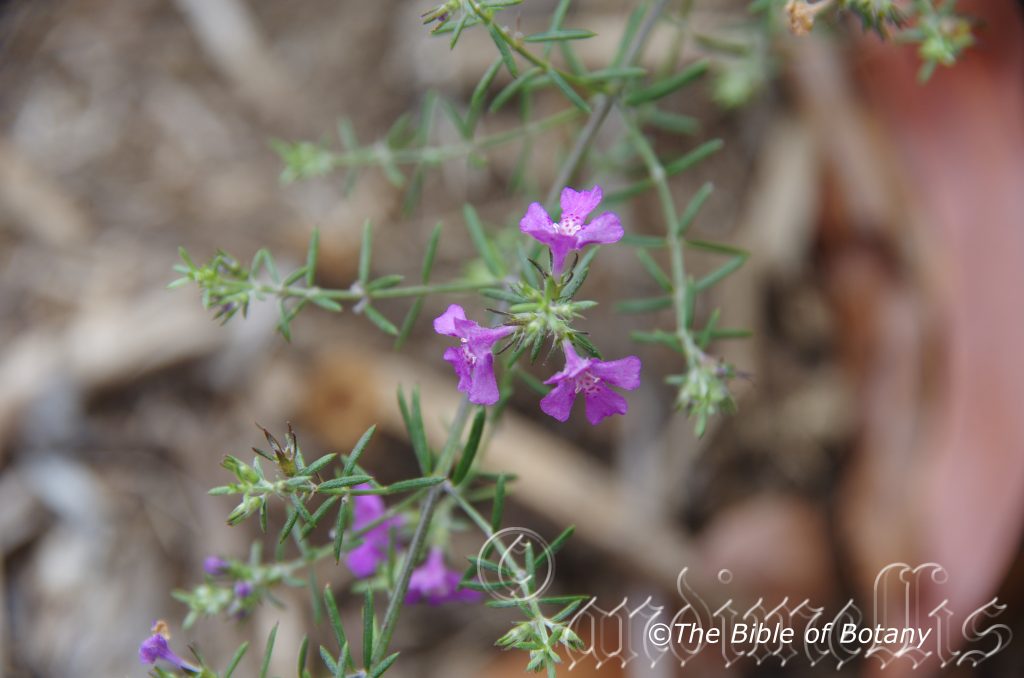
Author’s Garden The Pinnacles NSW

Author’s Garden The Pinnacles NSW
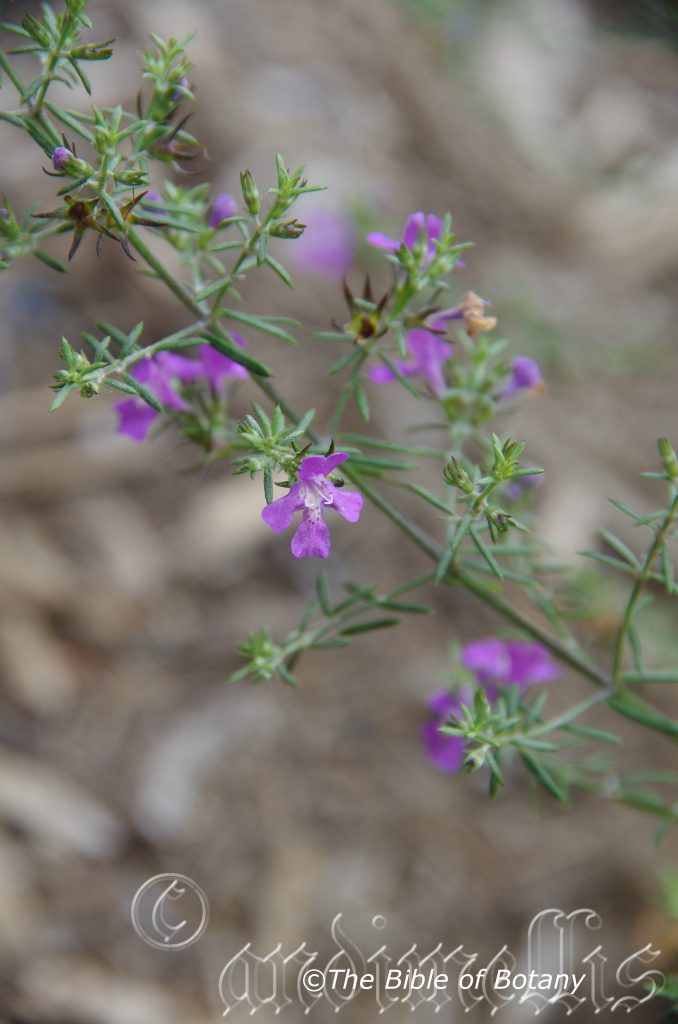
Author’s Garden The Pinnacles NSW

Author’s Garden The Pinnacles NSW
Westringia eremicola
Classification:
Unranked: Eudicots
Class: Asterids
Order: Lamiales
Family: Lamiaceae
Subfamily: Prostantheroideae
Genus: Is named in honour of Johan Westring; 1753-1833, who was a Swedish botanist who specialized in Lichens.
Specie: From êmos, which is Ancient Greek for wasteland or a desert and Pólos, which is Ancient Greek or later C?l? which is Latin for to live at or reside at. It refers to plants, which prefer desert habitats or rugged areas usually devoid of other plants.
Sub specie: Westringia eremicola var. eremicola. From êmos, which is Ancient Greek for wasteland or a desert and Pólos, which is Ancient Greek or later C?l? which is Latin for to live at or reside at. It refers to plants, which prefer desert habitats or rugged areas usually devoid of other plants.
Westringia eremicola var. quaterna. From Quartene, which is Latin for four things. It refers to the leaves, which are clustered in fours, usually has a square cross section on the stems and at times has four narrow wings.
Common Name:
Distribution:
Westringia eremicola is found south from Bulburin National Park in south eastern Queensland to Nuyts Archipelago on Fenelon Island south west of Ceduna in southern coastal South Australia.
https://avh.ala.org.au/occurrences/search?taxa=Westringia+eremicola#tab_mapView
Habitat:
Aspect / Climate:
Westringea eremicola prefers full sun to light dappled shade. It prefers to grow in mallee type country. The altitude ranges from 30 meters ASL to 650 meters ASL.
The temperatures range from minus 5 degrees in August to 45 degrees in January.
The rainfall ranges from lows of 200mm to 1100mm average per annum.
Soil Requirements:
Westringea eremicola prefers coarse sands, fine sands, sandy loams, peaty sands or light silts. The soils are usually derived from decomposed sandstones, accumulated peaty beach sands or dry ephemeral alluvial deposits. The soils pH. ranges from 4.5pH to 7.5pH. It does not tolerate water logged soils. Non saline soils to very saline soils are tolerated.
Height & Spread:
Wild Plants: 1m to 1.5m by 1m to 2m.
Characteristics:
Westringea eremicola grows as a small shrub with slender, erect to slightly arching, pale grey to pale grey-brown, slightly scabrous stems. The younger stems are dull green to purple-green. The stems are moderately to densely hairy with simple, white, appressed or antrorse hairs.
The narrow elliptic to linear green leaves of Westringea eremicola are in whorls of 3 or 4. They measure 8mm to 20mm in length by 0.8mm to 1.5mm in width. The petiole is paler and is moderately to densely hairy with simple, white, appressed or antrorse hairs. The petiole measures 0.5mm to 0.7mm in length. The base tapers slightly, while the apex is narrow acute. The discolourous laminas are grey-green to sea-green, and moderately to densely hairy with simple, white, appressed or antrorse hairs on the upper lamina, while the lower lamina is paler and moderately to densely covered in white antrorse hairs. The leaf margins are entire and decurve strongly so that the lower surface almost concealed. The mid veins are slightly prominent on the lower laminas.
Plants east of the Great Dividing Range in far south eastern New South Wales and eastern Victoria maybe a different variety as the leaves are consistently longer.
The inflorescences of Westringea eremicola are born from the leaf axis. The flowers are sessile. The bracteoles measure 1mm to 2mm in length. The green calyx tubes are moderately to densely hairy with simple, white, appressed or antrorse hairs externally. The calyx tube measures 2.5mm to 4mm in length, while the narrow triangular lobes measure 1.5mm to 3mm in length by 0.8mm to 2mm in width. The lilac, mauve or purple or rarely white corollas are usually sparsely covered in white antrorse hairs externally and usually with orange to orange-brown dots. The inner surface is densely covered within the throat with white, tomentose hairs and sparsely hairy on basal part of lobes becoming glabrous near the apex. The corolla tube measures 5mm to 6.5mm in length, while the 4 lobes are sparsely covered in white, retrorse hairs externally. The oblong to slightly obovate lateral lobes measure 3 mm to 3.5mm in length. The upper lobe is the longest, has 4 or 5 shallow lobes and measures 2.6mm to 2.8mm in length by 2.6mm to 3mm in width.
The white, glabrous staminal filaments measure 1.5mm to 3mm in length, while the oblong pale cream to white, basifixed anthers dehisce longitudinally and measure 0.8mm to 1.5mm in length.
The white, staminodal filaments are sparsely covered in tomentose hairs more so near the base and measure 0.5 to 1.3mm in length. The white, sterile ovate anthers measure 0.6mm to 0.8mm in length.
The lilac, mauve or purple or rarely white, glabrous pistils are a deeper colour near the base and turn white near the bifid stigma. The style measures 6.5mm to 7mm length, while the stigma lobes measure 0.4mm to 0.8mm in length.
The fruits of Westringea eremicola are globose to urceolate capsules. The capsules are moderately to densely hairy with simple, white, appressed or antrorse hairs externally and measures 3mm to 3.5mm in length in length by 1.5mm to 2mm in diameter. The calyx lobes are persistent while the calyx surrounds the ripe fruit. The style is persisent on the ripening capsules.
Wildlife:
Westringea eremicola’s do not appear to have any predators. Small butterflies and native bees are attracted to the flowers when little else is around.
Cultivation:
Westringea eremicola is a magnificent small to medium shrub that should be grown in association with other dune and semi-arid plants. This is another Westringea you could be called Mr. Versatility as it is so versatile. In cultivation it will grow from 1 meters to 1.5 meters in height by 1 meters to 1.5 meters in diameter when grown in the open.
The hybrid Wynyabbie Gem is a prolific flowering hybrid between W. fruiticosa and W. eremicola. It is slightly larger growing plant to 1.8 meters with blue foliage and pale purple to deep lilac flowers.
It has proven itself exceptionally well on lighter soils where deep leaf litter keeps the soil cool and moisture at a more even level. If these requirements are met it can cope with temperatures as low as minus 2 degrees and up to 40 degrees. It is moderately drought resistant once established but once their thresh hold is reached, it will turn up its toes very quickly. This is also the case in areas where the soil remains wet for prolonged periods.
It is ideal for along driveways, English style gardens, bush gardens, heath gardens and large rockeries. Add to the above, if it is given an adequate supply of water on well drained, sunny locations and a little native fertilizer on a regular basis the plants will respond with good flowering throughout the year.
Westringea eremicola would make an outstanding contribution to a drier heath garden. Here it can be used as the taller growing plant scattered throughout the heath scene. When you design a flat heath garden which Westringea eremicola is well suited don’t use contours to display the plants as heath lands are almost always flat or have a slight rise. Plants must be planted close together and be short so you can see over the tallest ones with the exception of one or two plants at the most. These will be feature plants. The idea is to achieve a feeling of expansive flatness. This can be achieved with using the Westringia fruiticosa’s green linear leaves and having them contrasting with finer pale green or soft grey to glaucous coloured foliages. Use a lot of procumbent plants like Carpobrotus edulis, Hibertia procumbens or Hibbertia linearis or if the garden is further inland try some of the smaller Verticordia specie. Mix them with other smaller shrubs so none of them dominate the scene but blend in to give a mosaic of foliage colours that you oversee. Here I immediately think of Actinotis helianthi or Grevillea thelemanniana for two great contrasting foliage plants with different growth habits.
The shrubs can be tip pruned or heavily pruned to any shape once established which makes them excellent plants for topiary work.
It makes a very good quick hedge row and screens on slopes where on the higher side the view is not interrupted but gives privacy from the street.
Propagation:
Seeds: Seeds of Westringea eremicola can be removed easily from the fruits.
Sow freshly treated seeds directly into a seed raising mix, keeping them moist not wet. Do not over water as the seeds will rot off before germination takes place. Place the trays in a cool shaded area with 50mm shade cloth in the bush house. When the seedlings are 20 to 25 mm tall, prick them out and plant them into 50mm native tubes using a good organic mix.
As the seedlings roots reach the bottom of the tubes plant them out into their permanent position. Do not delay.
Cuttings: Fortunately Westringea eremicola cuttings strike easy. Use 100mm to 150mm long tip cuttings or lateral shoots from the present season’s growth. Take them in warmer months of the year. Remove half the leaves from the bottom section being careful not to tear the bark.
1 Prepare the cutting mix by adding two thirds sharp clean river sand, one third peat or one third perlite. These ingredients must be sterilized,
2 Select good material from non diseased plants,
3 Select semi green stems for cuttings,
4 Place the cutting on a flat, hard surface, and make a clean cut down one side of the cutting at the base for 10mm with a sharp sterile knife or razor blade. – This scarification of the node will increase the chances of roots emerging from this spot. Now remove all but one or two the leaves, leaving the apex leaves in tact. If the leaves are very large in proportion to the stem, cut off the apical halves.
5 Fill a saucer with water, and place a little medium strength rooting hormone into another container like a milk bottle top. Dip the node end of the cutting into the water and then into the rooting hormone. Tap off any excess hormone,
6 Use a small dipple stick or old pencil to poke a hole into the soilless potting mix. Ensure the hole is slightly larger than the stem diameter and be careful not to wipe the rooting hormone off the cuttings base. Place 2 cuttings in each of the 50mm native tubes,
7 I like to place the tubes in bucket with holes drilled in the bottom to allow excess water to drain out. A plastic bag that fits over the bucket is ideal to help maintain temperature and moisture. Place in a semi shaded, warm position like under 50mm shade cloth.
8 When the cuttings have struck, open the bag to allow air circulation for a few days to a week,
9 Once hardened off remove the cuttings from the bag and allow to further hardening for a few more days to a week,
10 Transplant into a good potting mix to grow on.
Fertilize using seaweed, fish emulsion or organic chicken pellets soaked in water on an alternate basis. Fertilize every two months until the plants are established then twice annually in early September or March to maintain health, vitality and better flowering.
Further Comments from Readers:
“Hi reader, it seems you use The Bible of Botany a lot. That’s great as we have great pleasure in bringing it to you! It’s a little awkward for us to ask, but our first aim is to purchase land approximately 1,600 hectares to link several parcels of N.P. into one at The Pinnacles NSW Australia, but we need your help. We’re not salespeople. We’re amateur botanists who have dedicated over 30 years to saving the environment in a practical way. We depend on donations to reach our goal. If you donate just $5, the price of your coffee this Sunday, We can help to keep the planet alive in a real way and continue to bring you regular updates and features on Australian plants all in one Botanical Bible. Any support is greatly appreciated. Thank you.”
In the spirit of reconciliation we acknowledge the Bundjalung, Gumbaynggirr and Yaegl and all aboriginal nations throughout Australia and their connections to land, sea and community. We pay our respect to their Elders past, present and future for the pleasures we have gained.
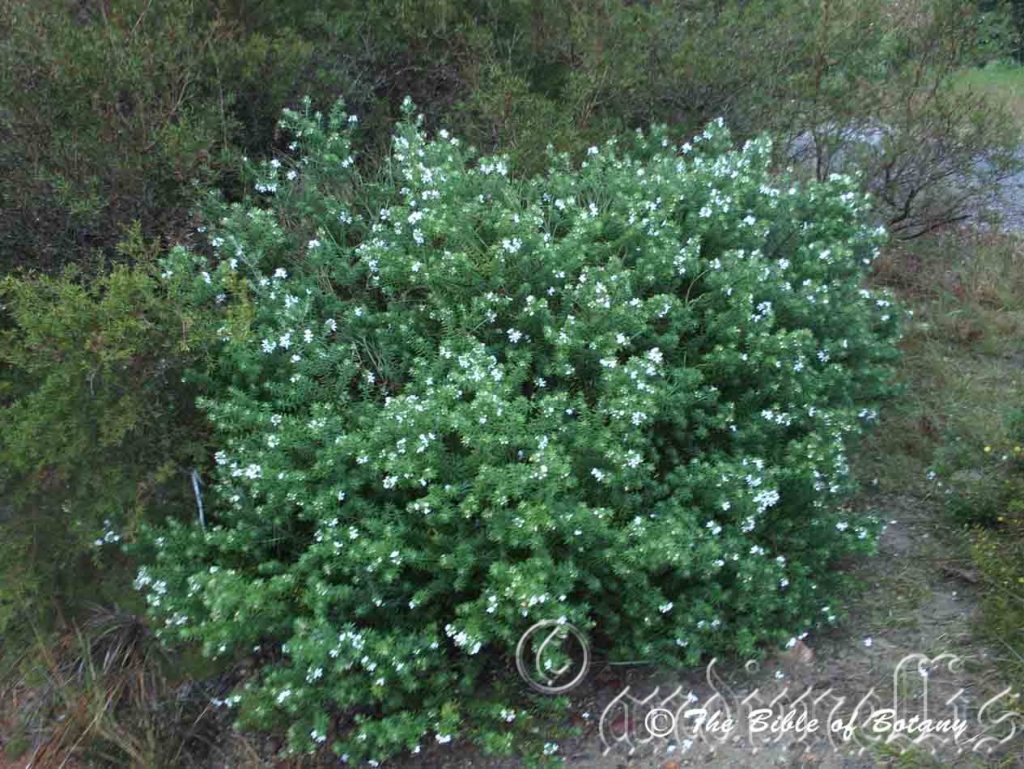
Lake Cathie NSW
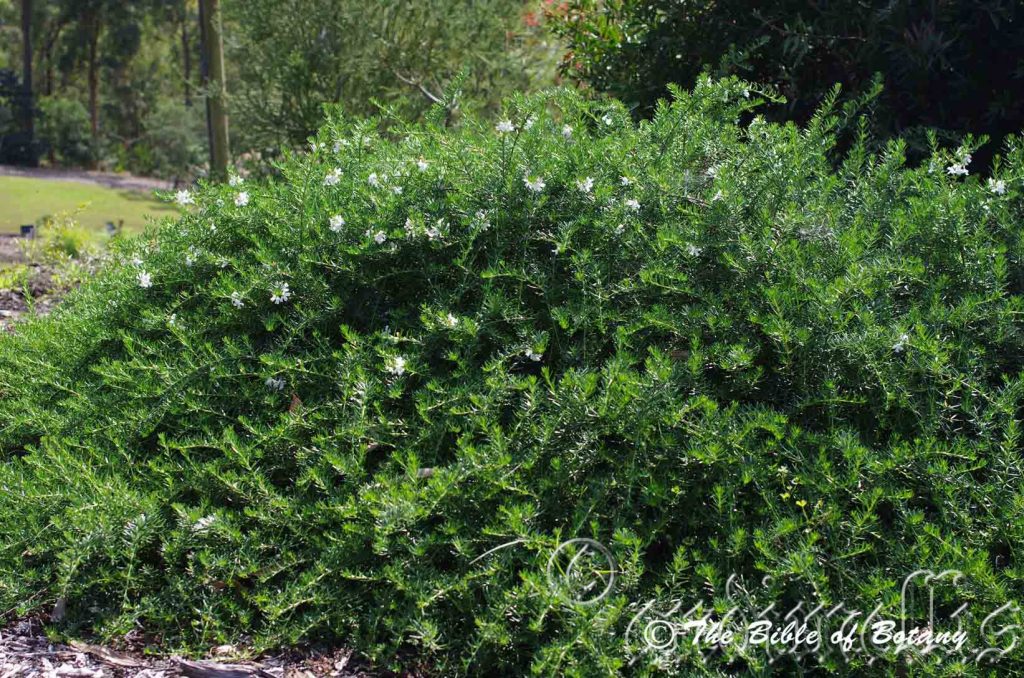
Mount Cootha Botanic Gardens Qld.
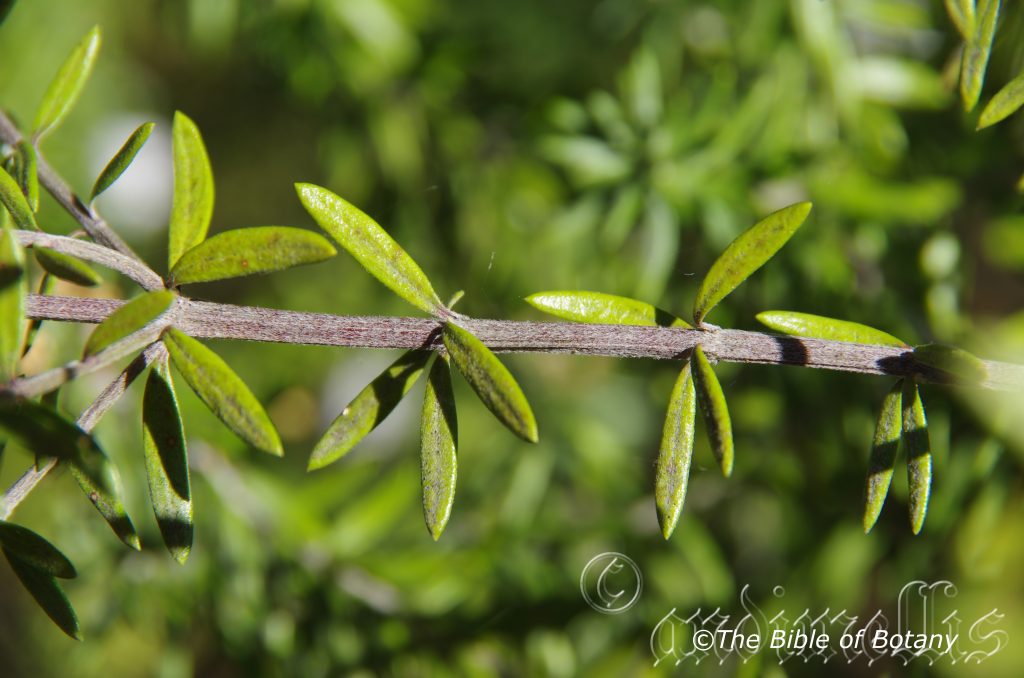
Rosser Gardens Gold Coast Qld.

Mount Cootha Botanic Gardens Qld.
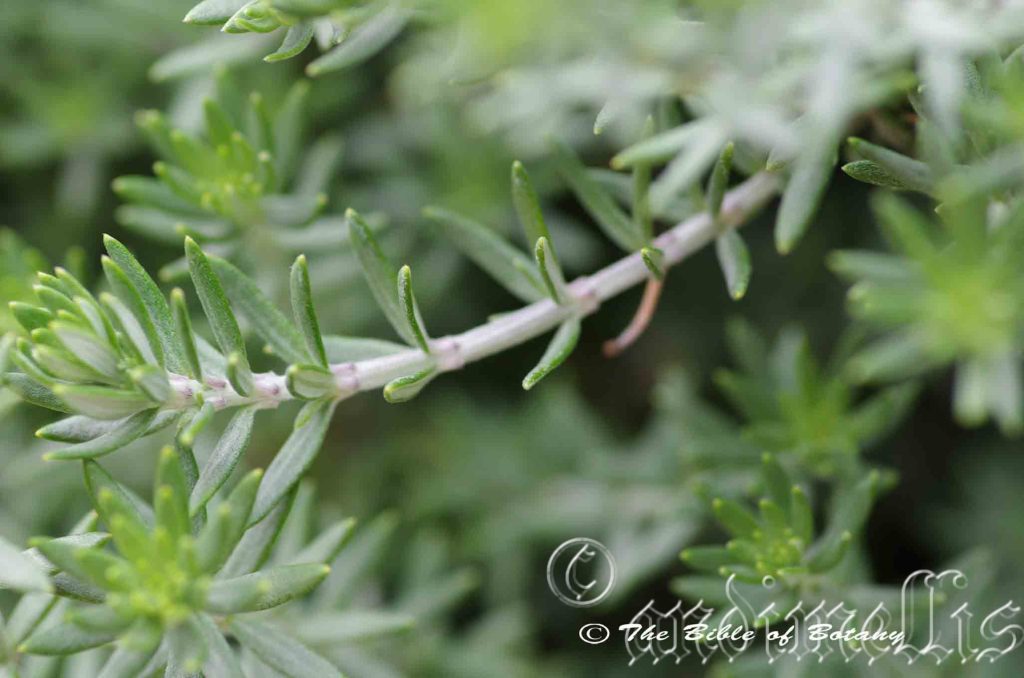
Mount Cootha Botanic Gardens Qld.

Mount Cootha Botanic Gardens Qld.
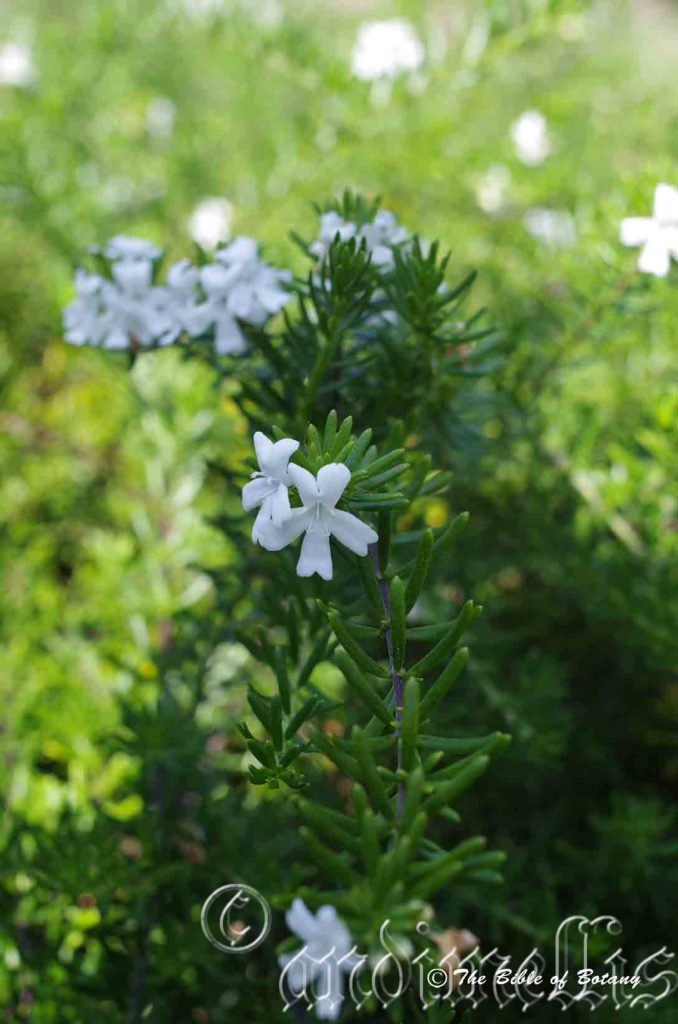
Mount Cootha Botanic Gardens Qld.

Rosser Gardens Gold Coast Qld.
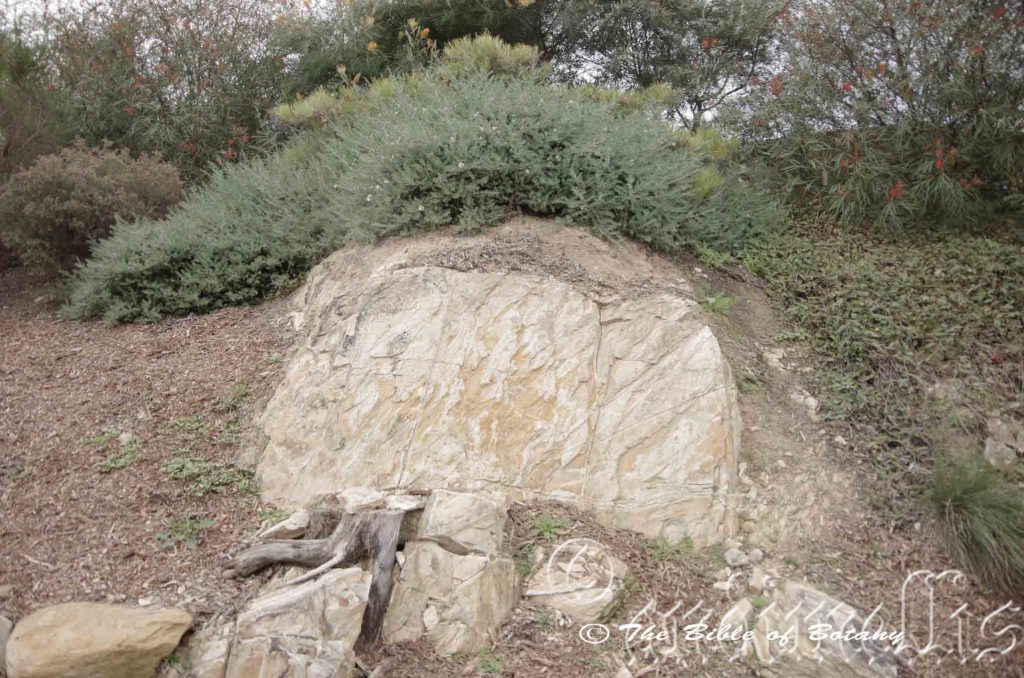
Rosser Gardens Gold Coast Qld.
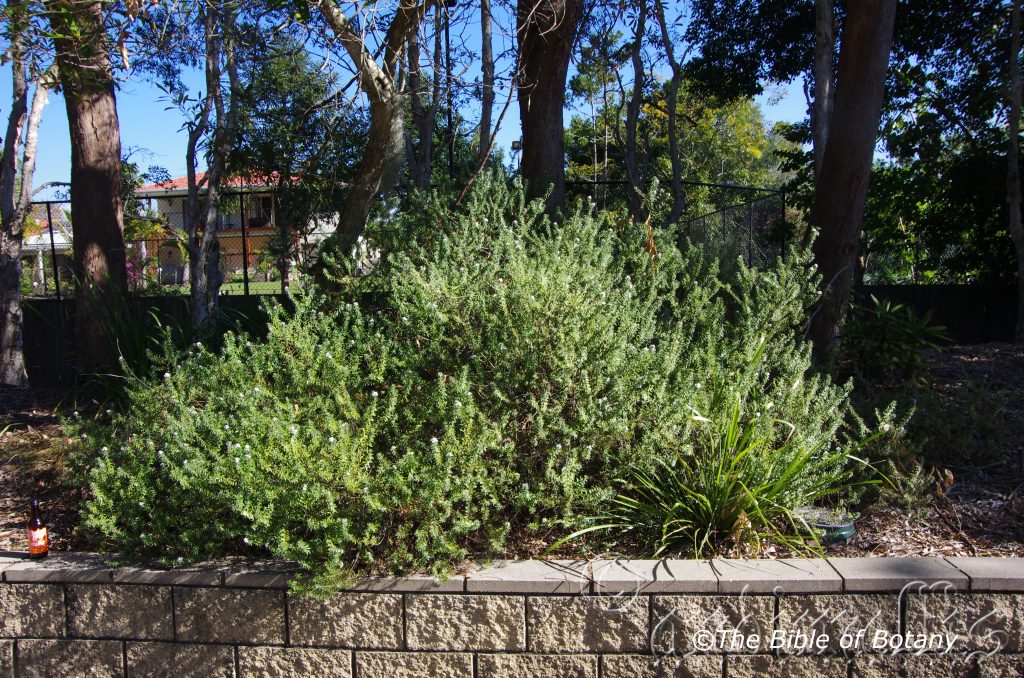
Rosser Gardens Gold Coast Qld.
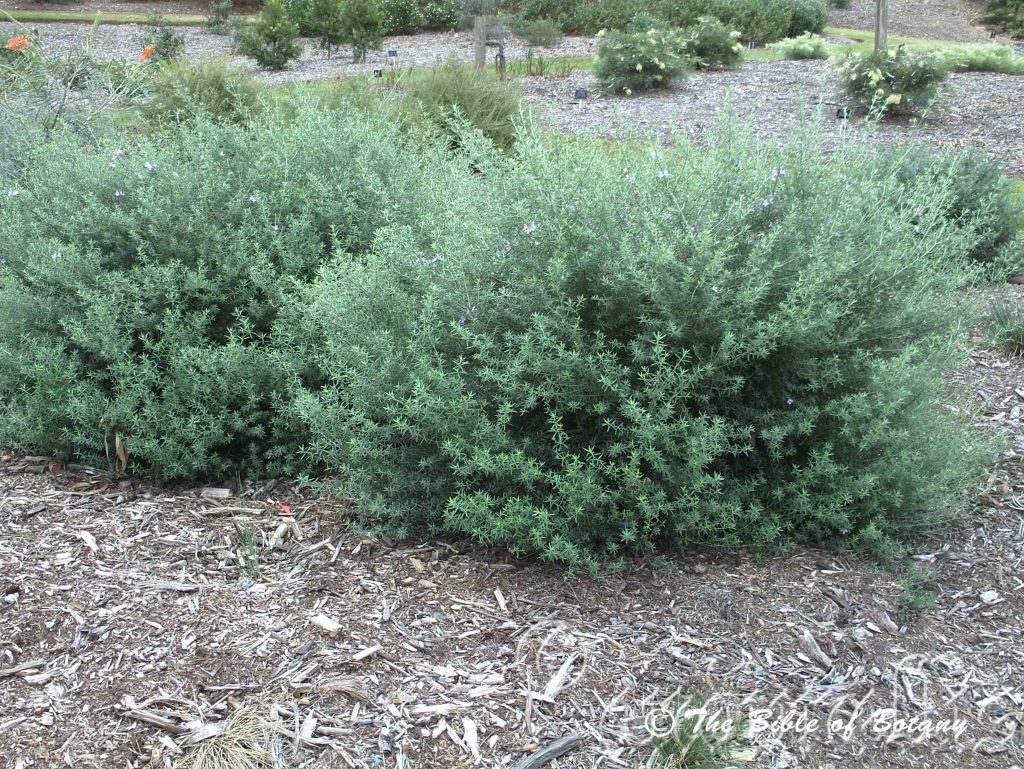
Coffs Harbour NSW
Westringia fruiticosa
Classification:
Unranked: Eudicots
Class: Asterids
Order: Lamiales
Family: Lamiaceae
Subfamily: Prostantheroideae
Genus: Is named in honour of Johan Westring; 1753-1833, who was a Swedish botanist who specialized in Lichens.
Specie: From Frutic?sum, which is Latin for shrubby or bushy. It refers to shrubs, which are very bushy.
Sub specie:
Common Name: Coastal Westringia or Native Rosemary.
Distribution:
Westringia fruiticosa is found south from Red Rocks north east of Kempsey to Eden in coastal eastern New South Wales.
https://avh.ala.org.au/occurrences/search?taxa=Westringia+fruiticosa#tab_mapView
Habitat:
Aspect / Climate:
Westringia fruiticosa prefers full sun to dappled shade. It grows close to the coast in littoral Rainforests, open Eucalyptus forests on back dune heaths and lower frontal dunes. The altitude ranges from 3 meters ASL to 600 meters ASL.
The temperatures range from minus 3 degrees in August to 36 degrees in January.
The rainfall ranges from lows of 700mm to 1600mm average per annum.
Soil Requirements:
Westringia fruiticosa prefers coarse sands, fine sands, sandy loams, peaty sands or light silts. The soils are usually derived from sandstones, accumulated peaty beach sands or alluvial estuarial deposits. The soils pH. ranges from 4.5pH to 7.5pH. It does not tolerate water logged soils. Non saline soils to very saline soils are tolerated.
Height & Spread:
Wild Plants: 1m to 1.8m by 1.5m to 2.2m.
Characteristics:
Westringia fruiticosa grows as a small to medium shrub with slender, erect to slightly arching, pale grey to pale grey-brown, slightly scabrous stems. The younger stems are dull to semi glossy deep grey purple-green to grey-green. The branchlets are covered in white to pale grey antrorse hairs.
The lanceolate to linear leaves are in whorls of 3 to 5.They measure 10mm to 30mm in length by 2mm to 5mm in width. The base is slightly oblique and cuneate while the apex is acute. The discolourous laminas are grey-green to sea-green, and sparsely covered in white to pale grey antrorse hairs on the upper lamina while the lower lamina is paler and moderately to densely covered in white to pale grey antrorse hairs. The leaf margins are entire, decurve to revolute while the margins are flat. The mid veins are slightly prominent on the lower laminas. The petioles purple-green are covered in white to pale grey antrorse hairs and measures 0mm to 1mm in length.
The inflorescences are born singularly from the leaf axils. The flowers are sessile. The bracteoles measure 1.5mm to 2mm in length. The grey-green calyx tubes are densely covered in white antrorse to pannate hairs and measure 3mm to 3.5mm in length. The 5 or 6 triangular, grey-green calyx lobes are erect and measure 2mm to 3.2mm in length by 0.8mm to 1.5mm in width. The white corollas are usually sparsely covered in pink to purplish or ochre-fawn dots or blotches internally and may extend onto the basal section of the lobes or at times maybe all white. The corolla tube measures 10mm to 13mm in length. The 4 lobes are sparsely covered in white retrorse hairs externally become denser deep inside the corolla. The lobes measure 7.5mm to 10mm in length. The upper lobe is the longest and divides further close to the apex.
The 2 upper exserted fertile stamens are adjacent to the lobes and attached to the corolla while the fertile while the lower 2 are sterile. It is covered in white retrorse hairs near the base. The free sections measure 2.5mm to 3.5mm in length. The filaments are white while the anthers are pale fawn and measure 1mm in length.
The white style is located between the two upper stamens and is covered in white retrorse hairs near the base. The stigma is white and glabrous while the lime green to grey-green ovary is covered in white retrorse hairs. The pistil measures 12mm to 16mm in length. The flowers appear throughout the year with a peak from September through to early December.
The fruits are globose to urceolate capsules. The capsules are covered in white retrorse hairs and measure 5mm to 8mm in length by 3mm to 5mm in diameter. The grey-green capsules turn grey when ripe. The calyx lobes are persistent while the calyx surrounds the ripe fruit. The small black seeds are hard.
Wildlife:
Westringia fruiticosa’s do not appear to have any predators. Small butterflies and native bees are attracted to the flowers when little else is around.
Cultivation:
Westringia fruiticosa is a magnificent small to medium shrub that should be grown in association with other dune and semi-arid plants. This is another Westringea you could be called Mr. Versatility as it is so versatile. In cultivation it will grow from 1.2 meters to 1.8 meters in height by 1.5 meters to 2 meters in diameter when grown in the open.
There are several smaller compact forms available in nurseries as well as forms with variegated and tricoloured foliages. These variegated forms are slower in growth and are more compact.
It grows exceptionally well on lighter soils where deep leaf litter keeps the soil cool and moisture at an even level. If these requirements are met it can cope with temperatures as low as minus 2 degrees and up to 40 degrees. It is moderately drought resistant once established but once its threshold is reached will turn up its toes very quickly. This is also the case in areas where the soil remains wet for prolonged periods.
It is ideal for along driveways, English style gardens, bush gardens, heath gardens and large rockeries. Add to the above, if it is given an adequate supply of water on well drained, sunny locations and a little native fertilizer on a regular basis the plants will respond with good flowering throughout the year.
Westringia fruiticosa would make outstanding contribution to a drier heath garden. Here it can be used as the taller growing plant scattered throughout the heath scene. When you design a flat heath garden which Westringia fruiticosa is well suited don’t use contours to display the plants as heath lands are almost always flat or have a slight rise. Plants must be planted close together and be short so you can see over the tallest ones with the exception of one or two plants at the most. These will be feature plants. The idea is to achieve a feeling of expansive flatness. This can be achieved with using the Westringia fruiticosa’s green linear leaves and having them contrasting with finer pale green or soft grey to glaucous coloured foliages. Use a lot of procumbent plants like Carpobrotus edulis, Hibertia procumbens or Hibbertia linearis or if the garden is further inland try some of the smaller Verticordia specie. Mix them with other smaller shrubs so none of them dominate the scene but blend in to give a mosaic of foliage colours that you oversee. Here I immediately think of Actinotis helianthi or Grevillea thelemanniana for two great contrasting foliage plants with different growth habits.
The shrubs can be tip pruned or heavily pruned to any shape once established which makes them excellent plants for topiary work.
The shrubs can be tip pruned or heavily pruned to any shape once established and require some pruning to maintain dense habit.
It makes a very good hedge row and screens.
Propagation:
Seeds: Seeds of Westringia fruiticosa can be removed easily from the fruits.
Sow freshly treated seeds directly into a seed raising mix, keeping them moist not wet. Do not over water as the seeds will rot off before germination takes place. Place the trays in a cool shaded area with 50mm shade cloth in the bush house. When the seedlings are 20 to 25 mm tall, prick them out and plant them into 50mm native tubes using a good organic mix.
As the seedlings roots reach the bottom of the tubes plant them out into their permanent position. Do not delay.
Cuttings: Fortunately Westringia fruiticosa cuttings strike relatively easy and must be used where the hybrid with W. eremicola or variegated forms are desired. Use 100mm to 150mm long tip cuttings or lateral shoots from the present season’s growth. Take them in warmer months of the year. Remove half the leaves from the bottom section being careful not to tear the bark.
1 Prepare the cutting mix by adding two thirds sharp clean river sand, one third peat or one third perlite. These ingredients must be sterilized,
2 Select good material from non diseased plants,
3 Select semi green stems for cuttings,
4 Place the cutting on a flat, hard surface, and make a clean cut down one side of the cutting at the base for 10mm with a sharp sterile knife or razor blade. – This scarification of the node will increase the chances of roots emerging from this spot. Now remove all but one or two the leaves, leaving the apex leaves intact. If the leaves are very large in proportion to the stem, cut off the apical halves.
5 Fill a saucer with water, and place a little medium strength rooting hormone into another container like a milk bottle top. Dip the node end of the cutting into the water and then into the rooting hormone. Tap off any excess hormone,
6 Use a small dipple stick or old pencil to poke a hole into the soilless potting mix. Ensure the hole is slightly larger than the stem diameter and be careful not to wipe the rooting hormone off the cuttings base. Place 2 to 4 cuttings in each of the 50mm native tubes,
7 I like to place the tubes in bucket with holes drilled in the bottom to allow excess water to drain out. A plastic bag that fits over the bucket is ideal to help maintain temperature and moisture. Place in a semi shaded, warm position like under 50mm shade cloth.
8 When the cuttings have struck, open the bag to allow air circulation for a few days to a week,
9 Once hardened off remove the cuttings from the bag and allow to further hardening for a few more days to a week,
10 Transplant into a good potting mix to grow on.
Fertilize using seaweed, fish emulsion or organic chicken pellets soaked in water on an alternate basis. Fertilize every two months until the plants are established then twice annually in early September or March to maintain health, vitality and better flowering.
Further Comments from Readers:
“Hi reader, it seems you use The Bible of Botany a lot. That’s great as we have great pleasure in bringing it to you! It’s a little awkward for us to ask, but our first aim is to purchase land approximately 1,600 hectares to link several parcels of N.P. into one at The Pinnacles NSW Australia, but we need your help. We’re not salespeople. We’re amateur botanists who have dedicated over 30 years to saving the environment in a practical way. We depend on donations to reach our goal. If you donate just $5, the price of your coffee this Sunday, We can help to keep the planet alive in a real way and continue to bring you regular updates and features on Australian plants all in one Botanical Bible. Any support is greatly appreciated. Thank you.”
In the spirit of reconciliation we acknowledge the Bundjalung, Gumbaynggirr and Yaegl and all aboriginal nations throughout Australia and their connections to land, sea and community. We pay our respect to their Elders past, present and future for the pleasures we have gained.
Westringia glabra
Classification:
Unranked: Eudicots
Class: Asterids
Order: Lamiales
Family: Lamiaceae
Subfamily: Prostantheroideae
Genus: Is named in honour of Johan Westring; 1753-1833, who was a Swedish botanist who specialized in Lichens.
Specie: From Glabra, which is Latin for glabrous or smooth. It refers to structures or organs, which have no hairs or scales thus are smooth and glabrous.
Sub specie:
Common Name: Violet Westringia.
Distribution:
Westringia glabra is found in several disjunct populations south from the Sunshine coast in south east Queensland to Melbourne then further west on the Grampians in southern Victoria.
https://avh.ala.org.au/occurrences/search?taxa=Westringia+glabra#tab_mapView
Habitat Aspect Climate:
Westringia glabra prefer dappled shade to full sun. It grows in dry open woodlands or moist open Eucalyptus woodlands. The altitude ranges from 40 meters ASL to 1100 meters ASL.
The temperatures range from minus 2 degrees in August to 38 degrees in February.
The rainfall ranges from lows of 500mm to 1600mm average per annum.
Soil Requirements:
Westringia glabra prefers skeletal, coarse sands, fine sands, sandy loams or light fatty clays. The soils are usually derived from granites. The soils pH. ranges from 4.5pH to 5.5pH. It does not tolerate water logged soils. Non saline soils to moderately saline soils are tolerated.
Height & Spread:
Wild Plants: 0.5m to 1m by 0.6m to 1m.
Characteristics:
Westringia glabra grows as a medium open shrub with mid olive-green to mid green stems. The stems are glabrous to sparsely covered in white hirsute hairs.
The lanceolate to narrow elliptic leaves are in whorls of 3.The leaves measure 12mm to 20mm in length by 3mm to 4mm in width. The mid olive-green to mid green petiole is glabrous or sparsely to moderately covered in white in hirsute hairs. The petioles measure 1mm to 2mm in length. The bases taper to the petiole while the apexes are broad acute. The discolourous laminas are mid grey-green to mid green, and glabrous to sparsely covered in white to pale grey hirsute hairs. The laminas are flat or recurve upwards slightly near the margins and decurve downwards near the apex. The margins are entire. The mid vein is slightly prominent on the lower lamina.
The inflorescences are born singularly from the leaf axils. The mid grey-green to mid green bracteoles measure 1.5mm to 2mm in length. The flowers are sessile.
The grey-green to mid green calyx tube and lobes are usually sparsely or rarely densely covered in short, white hirsute hairs externally and are glabrous internally. The calyx tube measures 3mm to 3.5mm in length. The 5 linear lobe’s apexes are narrow acuminate. The lobes measure 3mm to 4mm in length by 1mm to 1.5mm in width. The pale mauve to pale purple, with fine maroon dotted internally. The corolla tubes measure 2mm to 2.6mm in length. The corolla is covered in short, white pulverulent hairs externally and longer hairs internally within the throat.
The upper deeply emarginate lobes are often further divided into shallow obtuse emarginate measures 5mm to 6mm in length by 2mm to 3mm in width.
The 2 oblong to narrow spathulate-oblong lateral lobes apexes are broad truncate with obtuse edges. The margins are slightly crisped. The lateral lobes measure 6mm to 7.5mm in length by 2.5mm to 3.6mm in width.
The lower lobe is oblong-spathulate with a broad emarginate apex and slightly crisped. The lobe measures 7mm to 8mm in length by 5mm to 6.6mm in width.
The 2 upper exserted stamens are fertile while the lower 2 are sterile.
The white filaments have a spot on the basal half near the middle and are covered in white hirsute hairs on the basal half. The filaments measure 4.5mm to 5mm in length. The white dorsifixed, linear anthers measure 1mm in diameter.
The white style is located between the two upper stamens and is covered in white retrorse hairs near the base. The stigma is white and glabrous while the ovary is lime green to grey-green. The pistil measures 5mm to 6mm in length. The flowers appear throughout the year with a peak from September through to December.
Westringia glabra’s fruits are globose to urceolate capsules. The capsules are sparsely covered in soft, white pulverulent hairs and measure 1.5mm to 2mm in length by 2.3mm to 2.5mm in diameter. The mid green capsules turn grey when ripe. The calyx and calyx lobes are persistent while the calyx surrounds the ripe fruit. The small black seeds are hard.
Wildlife:
Westringia glabra’s flowers support many small butterflies, native bees and pollen flies.
Cultivation:
Westringia glabra is a magnificent small to medium shrub that can be grown in association with other dry sclerophyll and semi-arid plants. In fact it could be called Mr. Versatility as it is so versatile. In cultivation it will grows from 1 meter to 2.2 meters in height by 1 meter to 2 meters in diameter when grown in the open.
There are many new varieties on the market with this species allowing the gardener to select from a wide range of flower colours from mauve, pastel pink to deep pink, purple to deep violet or deep violet-blue.
It grows exceptionally well on lighter soils to medium clays where deep leaf litter keeps the soil cool and moisture at an even level. If these requirements are met they can cope with temperatures as low as minus 3 degrees and up to 40 degrees. It is moderately drought resistant once established but once their thresh hold is reached will turn up their toes very quickly. This is also the case in areas where the soil remains wet for prolonged periods.
It is ideal for along driveways, English style gardens, bush gardens, heath gardens and large rockeries. Add to the above, if it is given an adequate supply of water on well drained, sunny locations and a little native fertilizer on a regular basis the plants will respond with good flowering throughout the year.
Westringia glabra would make outstanding contribution to a drier heath garden. Here they can be used as the taller growing plant scattered throughout the heath scene. When you design a flat heath garden which Westringia glabra is well suited don’t use contours to display the plants as heath lands are almost always flat or have a slight rise. Plants must be planted close together and be short so you can see over the tallest ones with the exception of one or two plants at the most. These will be feature plants. The idea is to achieve a feeling of expansive flatness. This can be achieved with using the Westringia glabra’s green linear leaves and having them contrasting with finer pale green or soft grey to glaucous coloured foliages. Use a lot of procumbent or small shrubs like Crowea exalta, Hibbertia procumbens, Oleria canescens or Phebalium squamulosum or if the garden is further inland try some of the smaller Verticordia specie or even Willdampier Formosa. Mix them with other smaller shrubs so none of them dominate the scene but blend in to give a mosaic of foliage colours that you oversee. Here I immediately think of Actinotis helianthi or Grevillea thelemanniana for two great contrasting foliage plants with different growth habits.
The shrubs can be tip pruned or heavily pruned to any shape once established which makes them excellent plants for topiary work.
It makes a very good hedge row and screen.
Propagation:
Seeds: The seeds of Westringia glabra can be removed easily from the fruits.
Sow the fresh seeds directly into a seed raising mix, keeping them moist not wet. Do not over water as the seeds will rot off before germination takes place. Place the trays in a cool shaded area with 50mm shade cloth in the bush house. When the seedlings are 20 to 25 mm tall, prick them out and plant them into 50mm native tubes using a good organic mix.
As the seedlings roots reach the bottom of the tubes plant them out into their permanent position. Do not delay.
Cuttings: Fortunately Westringia glabra cuttings strike relatively easy and must be used where the hybrid with W. eremicola or variegated forms are desired. Use 100mm to 150mm long tip cuttings or lateral shoots from the present season’s growth. Take them in warmer months of the year. Remove half the leaves from the bottom section being careful not to tear the bark.
1 Prepare the cutting mix by adding two thirds sharp clean river sand, one third peat or one third perlite. These ingredients must be sterilized,
2 Select good material from non diseased plants,
3 Select semi green stems for cuttings,
4 Place the cutting on a flat, hard surface, and make a clean cut down one side of the cutting at the base for 10mm with a sharp sterile knife or razor blade. – This scarification of the node will increase the chances of roots emerging from this spot. Now remove all but one or two the leaves, leaving the apex leaves intact. If the leaves are very large in proportion to the stem, cut off the apical halves.
5 Fill a saucer with water, and place a little medium strength rooting hormone into another container like a milk bottle top. Dip the node end of the cutting into the water and then into the rooting hormone. Tap off any excess hormone,
6 Use a small dipple stick or old pencil to poke a hole into the soilless potting mix. Ensure the hole is slightly larger than the stem diameter and be careful not to wipe the rooting hormone off the cuttings base. Place 2 to 4 cuttings in each of the 50mm native tubes,
7 I like to place the tubes in bucket with holes drilled in the bottom to allow excess water to drain out. A plastic bag that fits over the bucket is ideal to help maintain temperature and moisture. Place in a semi shaded, warm position like under 50mm shade cloth.
8 When the cuttings have struck, open the bag to allow air circulation for a few days to a week,
9 Once hardened off remove the cuttings from the bag and allow to further hardening for a few more days to a week,
10 Transplant into a good potting mix to grow on.
Fertilize using seaweed, fish emulsion or organic chicken pellets soaked in water on an alternate basis. Fertilize every two months until the plants are established then twice annually in early September or March to maintain health, vitality and better flowering.
Further Comments from Readers:
“Hi reader, it seems you use The Bible of Botany a lot. That’s great as we have great pleasure in bringing it to you! It’s a little awkward for us to ask, but our first aim is to purchase land approximately 1,600 hectares to link several parcels of N.P. into one at The Pinnacles NSW Australia, but we need your help. We’re not salespeople. We’re amateur botanists who have dedicated over 30 years to saving the environment in a practical way. We depend on donations to reach our goal. If you donate just $5, the price of your coffee this Sunday, We can help to keep the planet alive in a real way and continue to bring you regular updates and features on Australian plants all in one Botanical Bible. Any support is greatly appreciated. Thank you.”
In the spirit of reconciliation we acknowledge the Bundjalung, Gumbaynggirr and Yaegl and all aboriginal nations throughout Australia and their connections to land, sea and community. We pay our respect to their Elders past, present and future for the pleasures we have gained.
Westringia longifolia
Classification:
Unranked: Eudicots
Class: Asterids
Order: Lamiales
Family: Lamiaceae
Subfamily: Prostantheroideae
Genus: Is named in honour of Johan Westring; 1753-1833, who was a Swedish botanist who specialized in Lichens.
Specie: From Longitia/Longus, which is Latin for long in length and Folium, which is Latin for foliage. It refers to leaves, which are long and strap like or are much longer than other species in the genus.
Sub specie:
Common Name: Long Leaf Westringia.
Distribution:
Westringia longifolia is found in several disjunct populations south from Ipswich west and St. George in southern Queensland to Warialda south of the border and along the Condamine River in southern Queensland. It is then found south from the Blue Mountains to Mittagong on the coast in central New South Wales.
https://avh.ala.org.au/occurrences/search?taxa=Westringia+longifolia#tab_mapView
Habitat Aspect Climate:
Westringia longifolia prefer dappled shade to full sun. It grows in open woodlands along drainage lines on ridges or valleys. It is found on the Western Slopes, on and east of the Great Dividing Range to the coast. The altitude ranges from 20 meters ASL to 600 meters ASL.
The temperatures range from minus 4 degrees in August to 36 degrees in January.
The rainfall ranges from lows of 400mm to 1600mm average per annum.
Soil Requirements:
Westringia longifolia prefer coarse sands, fine sands or sandy loams. The soils are derived from sandstones. It is often found on skeletal soils over sandstone bedrock. The soils pH. ranges from 5pH to 7pH. It does not tolerate water logged soils. Non saline soils to moderately saline soils are tolerated.
Height & Spread:
Wild Plants: 1m to 3m by 1m to 2.5m.
Characteristics:
The stems of Westringia longifolia are short, thin, erect to slightly arching, pale grey to pale grey-brown and slightly scabrous. The younger stems are dull to semi glossy deep grey, blue-green to grey-green. The branchlets are covered in very fine farinaceous lumps.
The linear leaves are in whorls of 3.They measure 12mm to 35mm in length by 1mm to 2.2mm in width. The base is cuneate and bends 45 to 85 degrees at the petiole while the apex is obtuse with a sharp apiculate tip and is strongly recurved to strongly decurve very close to the apex. The concolourous laminas are grey-green to blue-green, are glabrous to sparsely covered in white puberulent hairs and fine farinaceous lumps while the lower lamina is moderately covered in white hirtellous hairs and fine farinaceous lumps. The leaf margins are entire, flat or twisting. The mid veins are slightly prominent on the lower laminas. The petioles purple-green are covered in fine farinaceous lumps and measures 1mm to 1.7mm in length.
The inflorescences are born singularly from the leaf axils. The flowers are sessile. The triangular bracteoles measure 1 mm to 2mm in length.
The olive-green with maroon marked calyx tubes are covered in fine farinaceous lumps and are glabrous to moderately covered in white puberulent hairs externally and glabrous internally. The calyx tubes measure 2.5mm to 3.5mm in length. The 5 linear, erect lobes have acute apexes, olive-green and measure 1.6mm to 2.8mm in length by 0.9mm to 1.2mm in width.
The white to pale mauve corollas are sparsely covered in pink to purplish or fawn dots internally and may extend onto the basal section of the lower lobe. The corolla tube measures 8mm to 10mm in length. The 4 lobes are sparsely covered in white puberulent hairs externally and white pilose hairs internally but not on the apex half of the lobes. The lateral and upper lobes divide into 2 smaller lobes close to the apex measure 9mm to 12mm in length. The spathulate lower lobe is the longest and measures 15mm to 20mm in length.
The 2 upper, exserted fertile stamens are adjacent to the lobes and are attached to the corolla while the lower 2 are sterile.
. It is glabrous. The free sections measure 2mm to 3mm in length on the longer stamens while the anthers extend beyond the corolla tube on the shorter stamens. The filaments are white while the anthers are pale fawn and measure 1mm in length.
The white style is located between the two upper stamens and is covered in white retrorse hairs near the base. The stigma is white and glabrous while the lime green to grey-green ovary is covered in white retrorse hairs. The pistil measures 12mm to 16mm in length. Westringia longifolia s flowers appear throughout the year with a peak from September through to early December.
The fruits of Westringia longifolia are globose to urceolate capsules. The capsules are covered in white retrorse hairs and measure 0.8mm to 1.5mm in length by 0.8mm to 1.5mm in diameter. The grey-green capsules turn grey when ripe. The calyx lobes are persistent while the calyx surrounds the ripe fruit. The small black seeds are hard.
Wildlife:
Westringia fruiticosa’s does not appear to have any predators. Small butterflies and native bees are attracted to the flowers when little else is around.
Cultivation:
Westringia longifolia is a magnificent small to medium shrub that should be grown in association with other forest plants in semi shade or full sun. In fact it could be called Mr. Versatility as it is so versatile. In cultivation they will grow from 1.2 meters to 2.2 meters in height by 1.5 meters to 2.5 meters in diameter when grown in the open.
It grows exceptionally well on lighter soils where deep leaf litter keeps the soil cool and moisture at an even level. If these requirements are met they can cope with temperatures as low as minus 2 degrees and up to 40 degrees. It is moderately drought resistant once established but once their thresh hold is reached will turn up their toes very quickly. This is also the case in areas where the soil remains wet for prolonged periods.
It is ideal for along driveways, English style gardens, bush gardens, heath gardens and large rockeries. Add to the above, if it is given an adequate supply of water on well drained, sunny locations and a little native fertilizer on a regular basis the plants will respond with good flowering throughout the year.
Westringia longifolia would make outstanding contribution to a drier heath garden. Here they can be used as the taller growing plant scattered throughout the heath scene. When you design a flat heath garden which Westringia longifolia is well suited don’t use contours to display the plants as heath lands are almost always flat or have a slight rise. Plants must be planted close together and be short so you can see over the tallest ones with the exception of one or two plants at the most. These will be feature plants. The idea is to achieve a feeling of expansive flatness. This can be achieved with using the Westringia longifolia’s green linear leaves and having them contrasting with finer pale green or soft grey to glaucous coloured foliages. Use a lot of procumbent plants like Carpobrotus edulis, Hibertia procumbens or Hibbertia linearis or if the garden is further inland try some of the smaller Verticordia species. Mix them with other smaller shrubs so none of them dominate the scene but blend in to give a mosaic of foliage colours that you oversee. Here I immediately think of Actinotis helianthi or Grevillea thelemanniana for two great contrasting foliage plants with different growth habits.
The shrubs can be tip pruned or heavily pruned to any shape once established and require some pruning to maintain dense habit.
It makes very good hedge rows and screens.
Propagation:
Seeds: Seeds of Westringia longifolia can be removed easily from the fruits.
Sow freshly treated seeds directly into a seed raising mix, keeping them moist not wet. Do not over water as the seeds will rot off before germination takes place. Place the trays in a cool shaded area with 50mm shade cloth in the bush house. When the seedlings are 20 to 25 mm tall, prick them out and plant them into 50mm native tubes using a good organic mix.
As the seedlings roots reach the bottom of the tubes plant them out into their permanent position. Do not delay.
Cuttings: Fortunately Westringia longifolia cuttings strike relatively easy. Use 100mm to 150mm long semi hardwood to hardwood cuttings from the present season’s growth. Take them in warmer months of the year. Remove half the leaves from the bottom section being careful not to tear the bark.
1 Prepare the cutting mix by adding two thirds sharp clean river sand, one third peat or one third perlite. These ingredients must be sterilized,
2 Select good material from non diseased plants,
3 Select semi green stems for cuttings,
4 Place the cutting on a flat, hard surface, and make a clean cut down one side of the cutting at the base for 10mm with a sharp sterile knife or razor blade. – This scarification of the node will increase the chances of roots emerging from this spot. Now remove all but one or two the leaves, leaving the apex leaves intact. If the leaves are very large in proportion to the stem, cut off the apical halves.
5 Fill a saucer with water, and place a little medium strength rooting hormone into another container like a milk bottle top. Dip the node end of the cutting into the water and then into the rooting hormone. Tap off any excess hormone,
6 Use a small dipple stick or old pencil to poke a hole into the soilless potting mix. Ensure the hole is slightly larger than the stem diameter and be careful not to wipe the rooting hormone off the cuttings base. Place 2 to 4 cuttings in each of the 50mm native tubes,
7 I like to place the tubes in bucket with holes drilled in the bottom to allow excess water to drain out. A plastic bag that fits over the bucket is ideal to help maintain temperature and moisture. Place in a semi shaded, warm position like under 50mm shade cloth.
8 When the cuttings have struck, open the bag to allow air circulation for a few days to a week,
9 Once hardened off remove the cuttings from the bag and allow to further hardening for a few more days to a week,
10 Transplant into a good potting mix to grow on.
Fertilize using seaweed, fish emulsion or organic chicken pellets soaked in water on an alternate basis. Fertilize every two months until the plants are established then twice annually in early September or March to maintain health, vitality and better flowering.
Further Comments from Readers:
“Hi reader, it seems you use The Bible of Botany a lot. That’s great as we have great pleasure in bringing it to you! It’s a little awkward for us to ask, but our first aim is to purchase land approximately 1,600 hectares to link several parcels of N.P. into one at The Pinnacles NSW Australia, but we need your help. We’re not salespeople. We’re amateur botanists who have dedicated over 30 years to saving the environment in a practical way. We depend on donations to reach our goal. If you donate just $5, the price of your coffee this Sunday, We can help to keep the planet alive in a real way and continue to bring you regular updates and features on Australian plants all in one Botanical Bible. Any support is greatly appreciated. Thank you.”
In the spirit of reconciliation we acknowledge the Bundjalung, Gumbaynggirr and Yaegl and all aboriginal nations throughout Australia and their connections to land, sea and community. We pay our respect to their Elders past, present and future for the pleasures we have gained.
Westringia sericea
Classification:
Unranked: Eudicots
Class: Asterids
Order: Lamiales
Family: Lamiaceae
Subfamily: Prostantheroideae
Genus: Is named in honour of Johan Westring; 1753-1833, who was a Swedish botanist who specialized in Lichens.
Specie: From Sêres, which is Ancient Greek or S?ricum, which is Old Latin for silky and derived from the Ancient Chinese word Si/Ser ? or the modern script for Si/Ser ? for silk. Sêres also has the meaning from the Ancient Greek for the land of the Chinese referring to China as the land of silk. It refers to structures or organs, which are covered in soft, fine, silky hairs.
Sub specie:
Common Name:
Distribution:
Westringia sericea is found south from Mount Grevillea in south east Queensland, the Cangai State Forest to Frog Hollow west of Grafton and near Eden in southern New South Wales. It is found on the Great Dividing Range.
https://avh.ala.org.au/occurrences/search?taxa=Westringia+sericea#tab_mapView
Habitat Aspect Climate:
Westringia sericea prefers dappled shade to full sun. It grows in dry woodlands or dry sclerophyll forests on rocky slopes and ridges. The altitude ranges from 40 meters ASL to 1100 meters ASL.
The temperatures range from minus 1 degree in August to 38 degrees in February.
The rainfall ranges from lows of 900mm to 1130mm average per annum.
Soil Requirements:
Westringia sericea prefers skeletal, fine sandy loams to medium clays. The soils are usually derived from hard sandstones, shale or brown basalts. The soils pH. ranges from 5pH to 6pH. It does not tolerate water logged soils. Non saline soils to moderately saline soils are tolerated.
Height & Spread:
Wild Plants: 0.5m to 2m by 1.5m to 2m.
Characteristics:
Westringia sericea grows as a medium open shrub with mid grey-green to mid green stems. The stems are densely covered in white sericeous hairs.
The lanceolate leaves of Westringia sericea are in whorls of 3.The leaves measure 20mm to 30mm in length by 1.5mm to 4mm in width. The mid grey-green petiole is glabrous to moderately covered in white in sericeous hairs. The petioles measure 1mm to 2mm in length. The bases taper to the petiole while the apexes are acute often with a spinulosa tip. The discolourous laminas are mid grey-green to mid green, and glabrous to sparsely covered in white to pale grey sericeous hairs on the upper laminas while the lower laminas are paler and densely covered in white to pale grey sericeous hairs. The laminas are strongly revolute at the margins and decurve downwards near the apex. The margins are entire. The mid vein is prominent on the lower lamina and clearly visible on the upper lamina.
The inflorescences are born singularly from the leaf axils. The mid grey-green to mid green bracteoles measure 1mm to 1.2mm in length. The flowers are sessile.
The green to green tinged deep maroon calyx tube and lobes are usually sparsely covered in white sericeous hairs externally and are glabrous internally. The calyx tube measures 3mm to 3.5mm in length. The 5 linear lobe’s apexes are narrow acuminate and measure 2.5mm to 3.5mm in length by 1mm to 1.5mm in width. The corolla is pastel mauve to lavender with orange to brownish dots internally. The corolla tubes measure 4mm to 5mm in length. The corolla is covered in short, white sericeous hairs externally and longer hairs internally within the throat and are glabrous on the apical half.
The upper deeply, narrow emarginate lobe measures 7mm to 9mm in length by 5mm to 7mm in width.
The 2 oblong to broad oblong lateral lobes apexes are broad truncate with obtuse edges. The lateral lobes measure 7mm to 8.5mm in length by 5mm to 7mm in width.
The lower lobe is oblong with a broad emarginate apex and slightly crisped margins. The lobe measures 8mm to 10mm in length by 7mm to 9mm in width.
The 2 upper exserted stamens are fertile while the lower 2 are sterile. The white filaments measure 4.5mm to 5.5mm in length. The white dorsifixed, linear anthers measure 0.7mm to 0.8mm in length.
The white style is located between the two upper stamens and is glabrous. The stigma is white and glabrous while the ovary is lime green to pale green. The pistil measures 4.5mm to 5.5mm in length. The flowers appear from September through to November.
Westringia sericea’s fruits are globose to urceolate capsules. The capsules are sparsely covered in soft, white pulverulent hairs and measure 1.8mm to 2.4mm in length by 2mm to 2.2mm in diameter. The mid green capsules turn brown when ripe. The calyx and calyx lobes are persistent while the calyx surrounds the ripe fruit. The small black seeds are hard.
Wildlife:
Westringia sericea’s do not appear to have any predators. Small butterflies and native bees are attracted to the flowers when little else is around.
Cultivation:
Westringia sericea is a magnificent small to medium shrub that should be grown in association with other dune and semi-arid plants. In cultivation it grows from 1.5 meters to 1.8 meters in height by 1.5 meters to 2 meters in diameter when grown in the open.
It grows exceptionally well on lighter soils where deep leaf litter keeps the soil cool and moisture at an even level. If these requirements are met they can cope with temperatures as low as minus 2 degrees and up to 40 degrees. It is moderately drought resistant once established but once its threshold is reached will turn up their toes very quickly. This is also the case in areas where the soil remains wet for prolonged periods.
It is ideal for along driveways, English style gardens, bush gardens, heath gardens and large rockeries. Add to the above, if it is given an adequate supply of water on well drained, sunny locations and a little native fertilizer on a regular basis the plants will respond with good flowering throughout the year.
Westringia sericea would make outstanding contribution to a drier heath garden. Here it the heath scene. When you design a flat heath garden which Westringia sericea is well suited don’t use contours to display the plants as heath lands are almost always flat or have a slight rise. Plants must be planted close together and be short so you can see over the tallest ones with the exception of one or two plants at the most. These will be feature plants. The idea is to achieve a feeling of expansive flatness. This can be achieved with using the Westringia sericea’s green linear leaves and having them contrasting with finer pale green or soft grey to glaucous coloured foliages. Use a lot of procumbent or small shrubs like Crowea exalta, Hibbertia procumbens, Oleria canescens or Phebalium squamulosum or if the garden is further inland try some of the smaller Verticordia specie or even Willdampier Formosa. Mix them with other smaller shrubs so none of them dominate the scene but blend in to give a mosaic of foliage colours that you oversee. Here I immediately think of Actinotis helianthi or Grevillea thelemanniana for two great contrasting foliage plants with different growth habits.
The shrubs can be tip pruned or heavily pruned to any shape once established which makes them excellent plants for topiary work.
The shrubs can be tip pruned or heavily pruned to any shape once established and require some pruning to maintain dense habit.
It makes a very good hedge row and screens.
Propagation:
Seeds: The seeds of Westringia sericea can be removed easily from the ripe fruits.
Sow fresh seeds directly into a seed raising mix, keeping them moist not wet. Do not over water as the seeds will rot off before germination takes place. Place the trays in a cool shaded area with 50mm shade cloth in the bush house. When the seedlings are 20 to 25 mm tall, prick them out and plant them into 50mm native tubes using a good organic mix.
As the seedlings roots reach the bottom of the tubes plant them out into their permanent position.
Cuttings: Fortunately Westringia sericea cuttings strike relatively easy. Use 100mm to 150mm long semi hardwood cuttings from the present season’s growth. Take them in warmer months of the year. Remove half the leaves from the bottom section being careful not to tear the bark.
1 Prepare the cutting mix by adding two thirds sharp clean river sand, one third peat or one third perlite. These ingredients must be sterilized,
2 Select good material from non diseased plants,
3 Select semi green stems for cuttings,
4 Place the cutting on a flat, hard surface, and make a clean cut down one side of the cutting at the base for 10mm with a sharp sterile knife or razor blade. – This scarification of the node will increase the chances of roots emerging from this spot. Now remove all but one or two the leaves, leaving the apex leaves intact. If the leaves are very large in proportion to the stem, cut off the apical halves.
5 Fill a saucer with water, and place a little medium strength rooting hormone into another container like a milk bottle top. Dip the node end of the cutting into the water and then into the rooting hormone. Tap off any excess hormone,
6 Use a small dipple stick or old pencil to poke a hole into the soilless potting mix. Ensure the hole is slightly larger than the stem diameter and be careful not to wipe the rooting hormone off the cuttings base. Place 2 to 4 cuttings in each of the 50mm native tubes,
7 I like to place the tubes in bucket with holes drilled in the bottom to allow excess water to drain out. A plastic bag that fits over the bucket is ideal to help maintain temperature and moisture. Place in a semi shaded, warm position like under 50mm shade cloth.
8 When the cuttings have struck, open the bag to allow air circulation for a few days to a week,
9 Once hardened off remove the cuttings from the bag and allow to further hardening for a few more days to a week,
10 Transplant into a good potting mix to grow on.
Fertilize using seaweed, fish emulsion or organic chicken pellets soaked in water on an alternate basis. Fertilize every two months until the plants are established then twice annually in early September or March to maintain health, vitality and better flowering.
Further Comments from Readers:
“Hi reader, it seems you use The Bible of Botany a lot. That’s great as we have great pleasure in bringing it to you! It’s a little awkward for us to ask, but our first aim is to purchase land approximately 1,600 hectares to link several parcels of N.P. into one at The Pinnacles NSW Australia, but we need your help. We’re not salespeople. We’re amateur botanists who have dedicated over 30 years to saving the environment in a practical way. We depend on donations to reach our goal. If you donate just $5, the price of your coffee this Sunday, We can help to keep the planet alive in a real way and continue to bring you regular updates and features on Australian plants all in one Botanical Bible. Any support is greatly appreciated. Thank you.”
In the spirit of reconciliation we acknowledge the Bundjalung, Gumbaynggirr and Yaegl and all aboriginal nations throughout Australia and their connections to land, sea and community. We pay our respect to their Elders past, present and future for the pleasures we have gained.
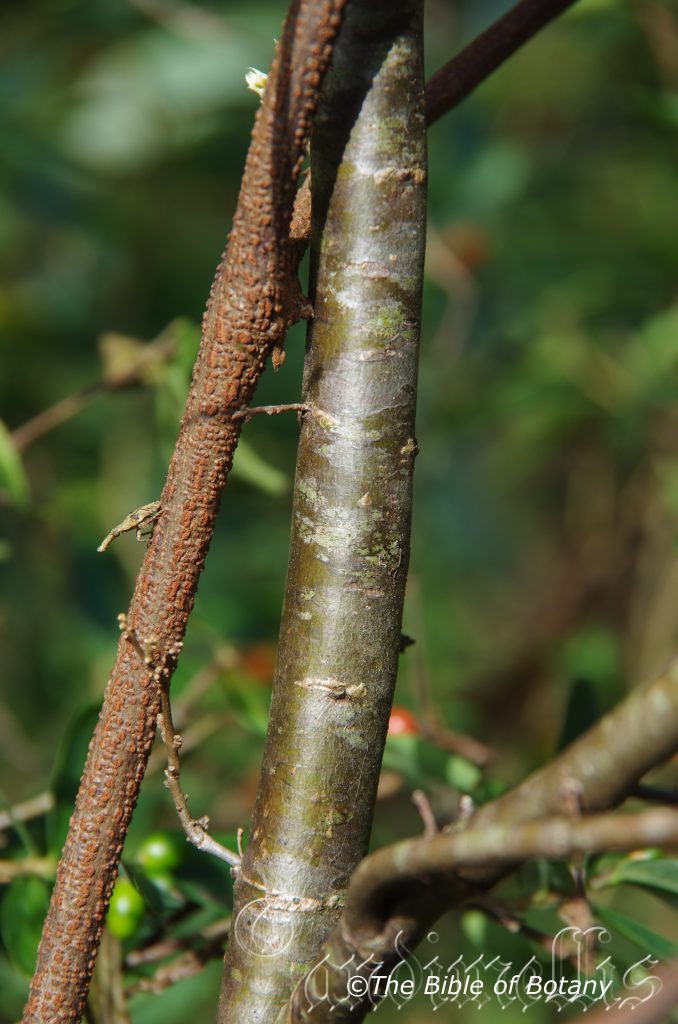
Rosser Gardens Gold Coast Qld.

Rosser Gardens Gold Coast Qld.
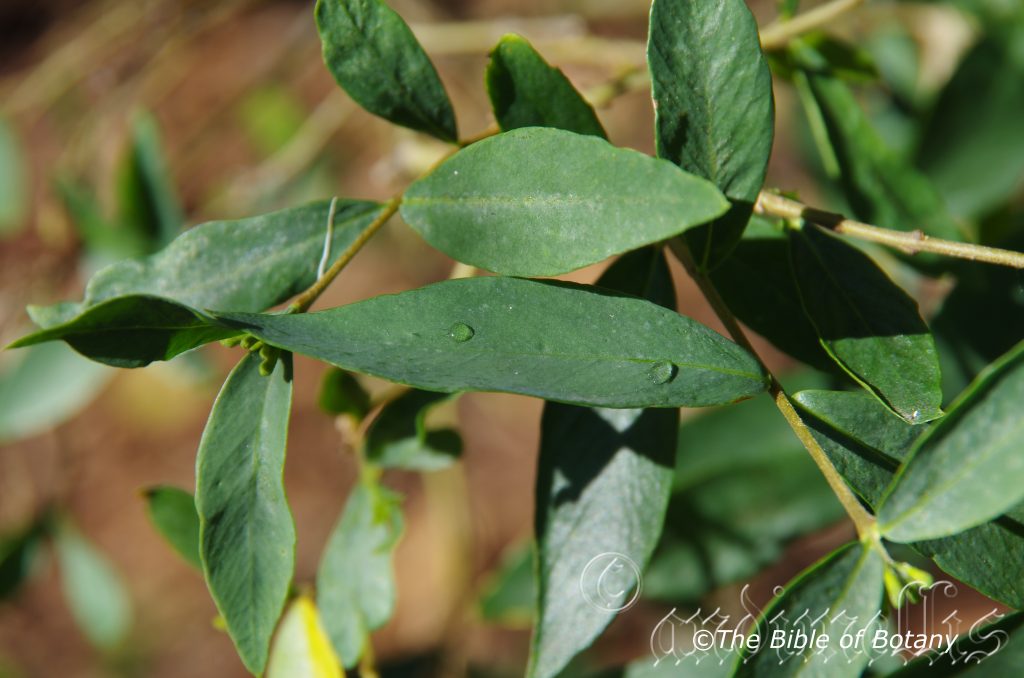
Rosser Gardens Gold Coast Qld.

Rosser Gardens Gold Coast Qld.
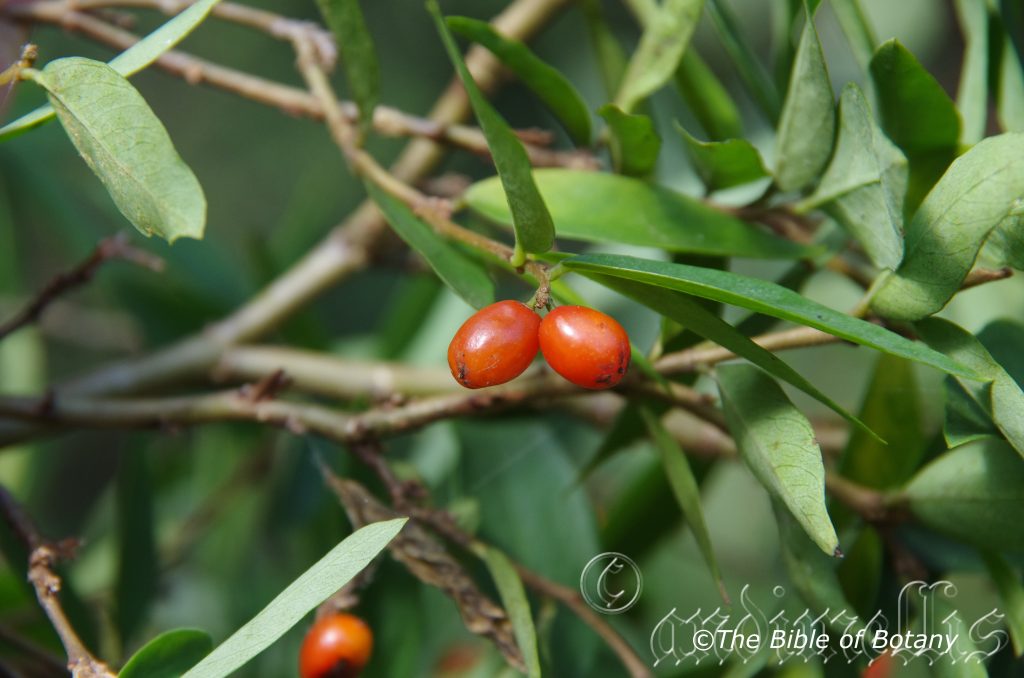
Rosser Gardens Gold Coast Qld.
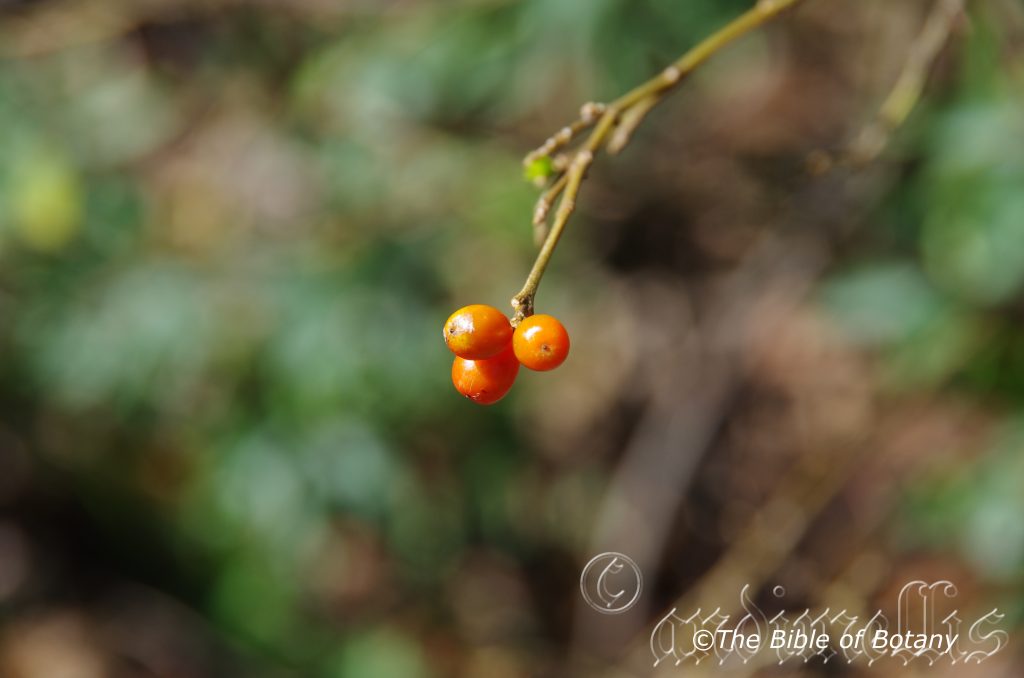
Rosser Gardens Gold Coast Qld.
Wikstroemia indica
Classification:
Unranked: Eudicots
Unranked: Rosids
Order: Malvales
Family: Thymelaeaceae
Subfamily: Thymelaeoideae
Genus: Is named in honour of John Wilkstrom; 1789-1856, who was a Swedish botanist.
Specie: From India, which is Latinized for India. It refers to plants, which were first discovered from.
Sub specie:
Common Name:
Distribution:
Wikstroemia indica is found In the Northern Territory from Marchinbar Island, Echo Island across to Nhulunbuy and south to Peterjohn Lake
In the east it is found south from the Torres Straight Islands in far north Queensland to the Illawarra district in central coastal New South Wales and off coast islands.
https://avh.ala.org.au/occurrences/search?taxa=Wikstroemia+indica#tab_mapView
Habitat Aspect Climate:
Wikstroemia indica prefers light dappled shade to full sun. It grows in and adjacent to well-developed rainforests, littoral rainforests, wet Eucalyptus forests, and monsoonal rainforests or moist open woodlands. The altitude ranges from 5 meters ASL to 900 meters ASL.
The temperatures range from minus 2 degrees in August to 36 degrees in January.
The rainfall ranges from lows of 850mm to 3200mm average per annum.
Soil Requirements:
Wikstroemia indica prefers sandy loams to medium clays. The soils are usually derived from better quality sandstones, brown basalts, black basalts, metamorphic rocks, granites or shale. The soils pH ranges from 5pH to 6.5pH. It is not tolerant of water logged soils however soil moisture is maintained throughout the year. Non saline soils to moderately saline soils are tolerated.
Height & Spread:
Wild Plants: 1m to 3m by 0.7m to 1.5m.
Characteristics:
Wikstroemia indica grows as a medium erect shrub with slender, pale brown, glabrous stems. The stems are olive-green to olive-brown with only the new growing shoots being pale blue-green. The growing shoots are sparsely covered in white caducous hirsute hairs.
The opposite, ovate to elliptical leaves measure 20mm to 80mm in length by 10mm to 26mm in width. The base is broad cuneate to narrowly cuneate while the apex is acute to broadly acute or rounded acuminate. The discolourous laminas are deep green, semi glossy and glabrous on the upper lamina while the lower lamina is glaucous and dull. The new leaves are bright green and glabrous to sparsely covered in white caduceus, hirsute hairs. The leaf margins are entire, flat or slightly recurve from the mid vein to the margins. The mid vein and main laterals are slightly prominent on the lower laminas. The pale blue-green petiole measures 1mm to 3mm in length.
The inflorescences are born on a short raceme from the terminals. There are 3 to 10 individual flowers on a raceme. The pale blue-green peduncles, rachises and pedicels are glabrous to very sparsely covered in white canescent hairs. The peduncle measures 2.5mm to 3mm in length while the rachis measures 3.5mm to 4.5mm and the pedicels measure 1mm to 2mm. The pale blue-green to pale yellow-green calyx are glabrous and measure 2.2mm to 2.5mm in length. The 4 minute calyx lobes are triangular. The pastel yellow-green, creamy yellow-green or at times white corollas measure 5mm to 7.5mm in length by 2.8mm to 3.4mm in diameter just below the lobes. The orbicular to broadly oblong, divaricate lobes have an obtuse to obtuse-acute apex and measure 3mm to 3.5mm in length.
The flowers are perfect or at times male. The 8 dimorphic stamens are inserted, glabrous and free for their entire length. 4 longer stamens measure 6mm to 7mm in length while the 4 shorter stamens measure 3mm to 4mm in length. The filiform filaments are pale yellow-green or at times white while the anthers are pale yellow to deep orange. The oblong anthers measure 0.6mm to 1.2mm in length.
The pale yellow-green or at times white style and capitate globular stigma are glabrous while the ovary is pale green. The pistil measures 4.5mm to 6mm in length. Wikstroemia indica’s flowers appear throughout the year with a peak from September through to early December.
The fruits of Wikstroemia indica are ellipsoidal berries. The berries are glabrous, covered in white film and measure 5mm to 8mm in length by 4mm to 7mm in diameter. The lime-green berries turn orange-red to scarlet-red when ripe. The corolla and corolla lobes are persistent at the base of the ripe fruit while the style is persistent until the fruits are almost ripe. The brown seeds are flattened ellipsoidal and woody.
Wildlife:
Wikstroemia indica does not appear to have any predators despite the fruits hanging on the bushes for a long time.
The ripe berries are much sought after food source of the Brown Cuckoo-dove, Macropygia amboinensis.
The crushed fruits and seeds contain HCN or hydrocyanic acid which is quite toxic and should not be eaten despite looking rather attractive. The odour is very distinct however; most people cannot detect the dry green almond smell.It is extremely bitter so swallowing them would be near impossible.
The plants have a dark colour resin embedded in the heartwood known as agarwood. Because of its unique aroma, agarwood oil is a highly prized fragrant compound and much sought after in the perfume industry. It has a woody somewhat sandalwood aroma with a dash of floral scent added.
Cultivation:
Wikstroemia indica is a magnificent small compact shrub in cultivation. It should be grown in association with other rainforest specie as an understory plant or at the edge of a rainforest. In cultivation it grows from 0.8 meters to 1.5 meters in height by 0.8 meters to 1.5 meters in diameter when grown in the open.
It grows exceptionally well on lighter soils where deep leaf litter keeps the soil cool and moisture at an even level. If these requirements are met they can cope with temperatures as low as minus 5 degrees and up to 36 degrees. It is moderately drought resistant.
Add to the above, if it is given an adequate supply of water and a little native fertilizer on a regular basis the plants should respond with good flowering and fruit over a long period.
As it is toxic it is best to plant them back from the path if small children play in the garden. The shrubs are good foundation plants for starting a rain forest understory where there is plenty of available light especially if the gardens are close to permanent water that ensures good capillary action. The semi glossy to glossy pale blue-green leaves are very attractive. The leaves also lend themselves perfectly to being planted on the southern side of a house, in bush houses or shaded courtyards. Mass plantings can be achieved with by planting it at 1 meter to 1.2 meter centers.
Wikstroemia indica would make outstanding contribution to a moist semi shaded heath garden provided they have room to grow to their full potential. Here they can be used as the taller growing plant scattered throughout the scene. When you design a flat heath garden which Wikstroemia indica is well suited don’t use contours to display the plants as heath lands are almost always flat or have a slight rise. Plants must be planted close together and be short so you can see over the tallest ones with the exception of one or two plants at the most. These will be feature plants. The idea is to achieve a feeling of expansive flatness. This can be achieved with using the Wikstroemia indica’s pastel blue-green elliptical to ovate leaves and having them contrasting with broader deep green or lime green foliages. Use a lot of dwarf rainforest plants like the many Cordyline specie or Clerodendrum floribundum, Clerodendrum tomentosa, Prostanthera are all good if pruned to keep them in check or Viola hederacea for a fast growing ground cover. Mix them with other smaller shrubs so none of them dominate the scene but blend in to give a mosaic of foliage colours that you oversee.
Another fantastic method would be to meander them back form one corner to the far diagonal. Plant the background up with one Clerodendrum specie or similar medium shrub in the corner with Cordyline petiolaris and Cordyline cannifolia for the vertical affect and red and green contrasting foliages or Rhododendron viriosum for the winter to spring colour. The fore ground can be planted with various ferns with deep green foliages mixed Viola hederacea for texture. Even a single Linospadix monostachya in the front corner amongst the ferns would become a focal point and break what could become a little boring with just the ferns and Viola specie mixed together.
Propagation:
Seeds: Seeds of Wikstroemia indica can be removed easily from the fruits.
Sow freshly treated seeds directly into a seed raising mix, keeping them moist not wet. Do not over water as the seeds will rot off before germination takes place. Place the trays in a cool shaded area with 50mm shade cloth in the bush house.
When the seedlings are 20mm to 25mm tall, prick them out and plant them into 50mm native tubes using a good organic mix.
As the seedlings roots reach the bottom of the tubes plant them out into their permanent position. Do not delay.
Fertilize using Seaweed, fish emulsion or organic chicken pellets soaked in water and apply the liquid on an alternate basis. Fertilize every 2 months until the plants are well established then on an annual basis in September or March to maintain better health, vitality and flowering.
Further Comments from Readers:
“Hi reader, it seems you use The Bible of Botany a lot. That’s great as we have great pleasure in bringing it to you! It’s a little awkward for us to ask, but our first aim is to purchase land approximately 1,600 hectares to link several parcels of N.P. into one at The Pinnacles NSW Australia, but we need your help. We’re not salespeople. We’re amateur botanists who have dedicated over 30 years to saving the environment in a practical way. We depend on donations to reach our goal. If you donate just $5, the price of your coffee this Sunday, We can help to keep the planet alive in a real way and continue to bring you regular updates and features on Australian plants all in one Botanical Bible. Any support is greatly appreciated. Thank you.”
In the spirit of reconciliation we acknowledge the Bundjalung, Gumbaynggirr and Yaegl and all aboriginal nations throughout Australia and their connections to land, sea and community. We pay our respect to their Elders past, present and future for the pleasures we have gained.

Lismore Botanic Gardens NSW
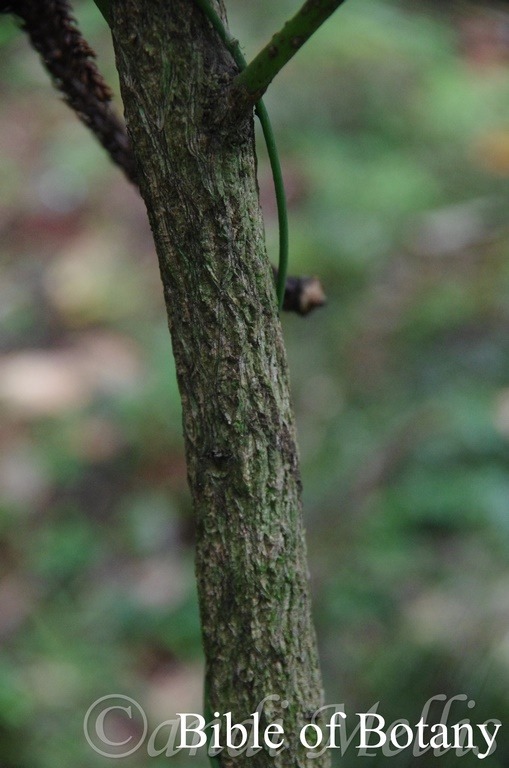
Lismore Botanic Gardens NSW

Lismore Botanic Gardens NSW
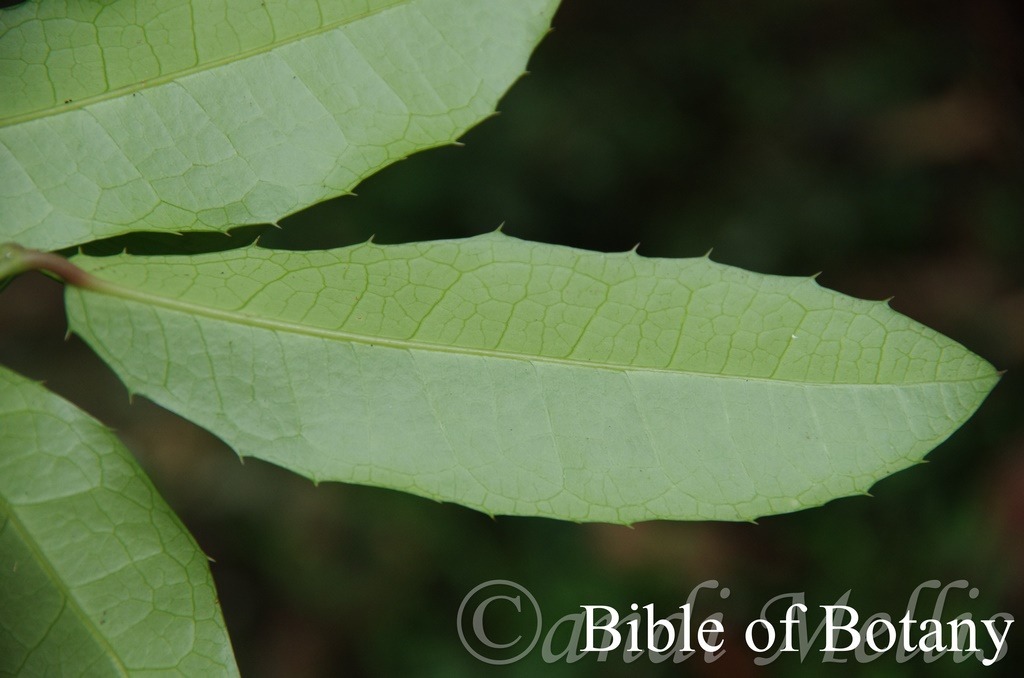
Lismore Botanic Gardens NSW
Wilkiea austroqueenslandica
Classification:
Unranked: Magnoliids
Order: Laurales
Family: Monomiaceae
Tribe: Mollinedieae
Genus: Maybe named in honour of Doctor D. E. Wilkie; 1829-1884, who was a German botanist and plant collector.
Specie: From Terra Australis, which is Latin for land of the south and Queenslandica, which is Latinized for Queensland. It refers to plants, which were first discovered from Queensland in the land down under.
Sub specie:
Common Name: Smooth Wilkiea.
Distribution:
Wilkiea austroqueenslandica is restricted to a small area south from the Macpherson Ranges National Park in southern Queensland to Mount Warning National Park in coastal northern New South Wales.
https://avh.ala.org.au/occurrences/search?taxa=Wilkiea+austroqueenslandica#tab_mapView
Habitat Aspect Climate:
Wilkiea austroqueenslandica prefers dense shade to full sun. It grows adjacent to and in openings in well-developed moist subtropical rainforests. The altitude ranges from 150 meters ASL to 1000 meters ASL.
The temperatures range from 2 degrees in August to 36 degrees in January.
The rainfall ranges from lows of 1050mm to 2000mm average per annum.
Soil Requirements:
Wilkiea austroqueenslandica prefers better quality light sandy clays to medium clays. The soils are usually derived from black basalts. The soils pH. ranges from 5pH to 6pH. It does not tolerate water logged soils. Non saline soils to moderately saline soils are tolerated.
Height & Spread:
Wild Plants: 5m to 10m by 3m to 5m.
Characteristics:
There are two forms and these hybridise in intermediate zones. I have marked these 2 forms in red (Mountain form) and blue (Coastal form) treating them as 2 distinct variables or at least sub species as I believe there are too many differences too include them as a single species.
The trunk or main stems of Wilkiea austroqueenslandica are tall, straight, pinkish-brown, finely furrowed and corky. The trunks are often flanged near the base. The branchlets are pale brown and glabrous and turn green with purplish sheens where the leaves occur. The branchlets are sparsely covered in small, lighter coloured lenticels.
The coastal form is densely covered in very fine white lenticels.
The alternate to almost opposite leaves, appear in groups of three along the branchlets. The oblong-elliptical to narrowly oblong-elliptical leaves of measure 60mm to 200mm in length by 20mm to 70mm in width. The petiole measures 10mm to 20mm in length. The bases are cuneate while the apexes are acute on the mountainous form.
A separate coastal form growing in coastal littoral rainforests have a rounded base and obtuse apex.
The discolourous laminas are deep grass-green to sea-green, semi glossy and glabrous on the upper lamina while the lower lamina is paler and dull. The laminas are thicker on the coastal form.
The leaf margins are entire to having a few small rigid teeth. The laminas recurve from the mid vein to near the margins where it is decurve to revolute and decurve near the apex on the mountain form.
The coastal form’s laminas are convex between the lateral veins and the main vein and the margins. The leaves decurve from near the petiole through to the apex.
The mid vein is prominent while the lateral veins are slightly prominent on the lower laminas while the mid vein is distinctly visible from the upper laminas and the lateral veins are faintly visible.
The inflorescences are monoecious or dioecious and are born on panicles from the leaf axils on the mountain form. The purplish peduncles, rachises and pedicels are densely covered in white pulverulent hairs. The peduncles measure 8mm to 12mm in length while the rachises measure 16mm to 24mm in length and the pedicels measure 10mm to 14mm in length.
The inflorescences of Wilkiea austroqueenslandica are born on cauliforously panicles on the coastal form. The purplish peduncles, rachises and pedicels are densely covered in white pulverulent hairs. The peduncles measure 8mm to 12mm in length while the rachises measure 40mm to 44mm in length and the pedicels measure 8mm to 10mm in length. The fruiting receptacles and the connecting half of the pedicel are creamy yellow and covered in white pulverulent hairs.
The 8 stamens are free for their entire length.
The female fruiting receptacles and carpels are covered in white pulverulent hairs and measure 6mm to 8mm in diameter.
Wilkiea austroqueenslandica flowers from September through to early December.
The fruits of the mountain form of Wilkiea austroqueenslandica are globose drupes. The pale yellow drupes turn black when ripe. They measure 8mm to 12mm in length by 8mm to 12mm in diameter. The carpels split to reveal a yellow tuberculated disc with one or more large black seeds.
The fruits of the coastal form of Wilkiea austroqueenslandica are globose drupes. The pale yellow drupes turn black when ripe. They measure 8mm to 13mm in length by 10mm to 15mm in diameter. The carpels reveal a yellow tuberculated disc with one or more large black seeds.
Wildlife:
Wilkiea austroqueenslandica does not appear to have any predators despite the fruits hanging on the trees for a long time.
The beautiful little Regent Skipper, Euschemon rafflesia butterflies’ larvae feed on the leaves but cause superficial damage.
Cultivation:
Wilkiea austroqueenslandica is a magnificent small tree that should be grown in association with other rainforest specie. It is ideal at the edge of a rain forest or deep in the center of the small rainforest garden. It also makes a very good shade tree in parks, along nature strips or small to large gardens but remember it is relatively slow in growth. In cultivation it will grow from 6 meters to 8 meters in height by 4 meters to 5 meters in diameter when grown in the open.
It is slow growing even on good quality basalt soils where deep leaf litter keeps the soil cool and moisture at an even level. If these requirements are met it can cope with temperatures as low as minus 5 degrees and up to 36 degrees. It is moderately drought resistant once established.
Add to the above, if it is given an adequate supply of water and a little native fertilizer on a regular basis the plants should respond with good flowering and fruit over a long period.
Wilkiea austroqueenslandica is a small slow growing tree which makes it ideal for court yard plantings or foyers in large offices. It would also be ideal as an indoor specimen. In the courtyard it is a beautiful tree. The branches can be encouraged to accept several species of smaller hardier ferns and orchids which is rare to see in Australia but very common in Asia at air ports and office foyers.
This tree could be used as a bonsai plant as I have seen some trees in the forest that have grown in some very difficult conditions take on some weird shapes.
Propagation:
Seeds: The seeds of Wilkiea austroqueenslandica can be removed easily from the fruits. Remove pulp and wash under warm water.
Sow fresh seeds immediately following treatment. Sow the seeds directly onto a seed raising mix, and barely cover the seeds. Keep them moist not wet. Do not over water as the seeds will rot off before germination takes place. Place the trays in a warm shaded area with 50mm shade cloth in the bush house. When the seedlings are 40mm to 50mm tall, prick them out and plant them into 50mm native tubes using a good organic mix.
As the seedlings roots reach the bottom of the tubes plant them out into their permanent position. Do not delay.
Fertilize using Seaweed, fish emulsion or organic chicken pellets soaked in water and apply the liquid on an alternate basis. Fertilize every 2 months until the plants are well established then on an annual basis in September or March to maintain better health, vitality and flowering.
Further Comments from Readers:
“Hi reader, it seems you use The Bible of Botany a lot. That’s great as we have great pleasure in bringing it to you! It’s a little awkward for us to ask, but our first aim is to purchase land approximately 1,600 hectares to link several parcels of N.P. into one at The Pinnacles NSW Australia, but we need your help. We’re not salespeople. We’re amateur botanists who have dedicated over 30 years to saving the environment in a practical way. We depend on donations to reach our goal. If you donate just $5, the price of your coffee this Sunday, We can help to keep the planet alive in a real way and continue to bring you regular updates and features on Australian plants all in one Botanical Bible. Any support is greatly appreciated. Thank you.”
In the spirit of reconciliation we acknowledge the Bundjalung, Gumbaynggirr and Yaegl and all aboriginal nations throughout Australia and their connections to land, sea and community. We pay our respect to their Elders past, present and future for the pleasures we have gained.
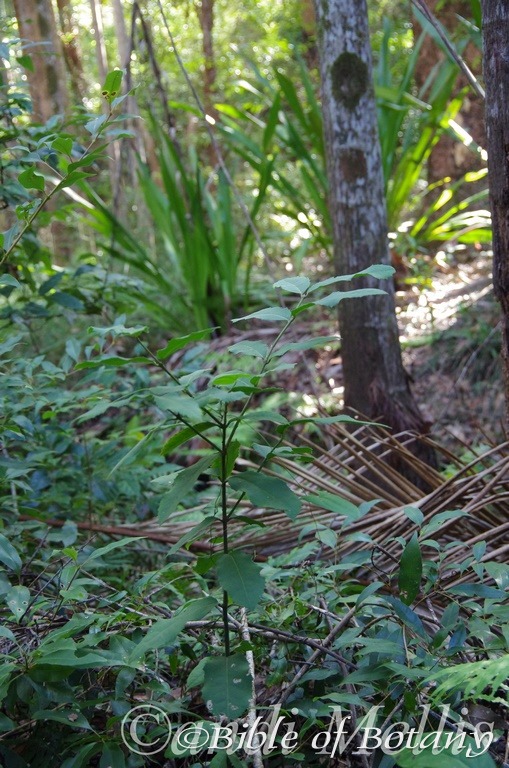
Pigeon Gully Yuraygir National Park NSW

Pigeon Gully Yuraygir National Park NSW
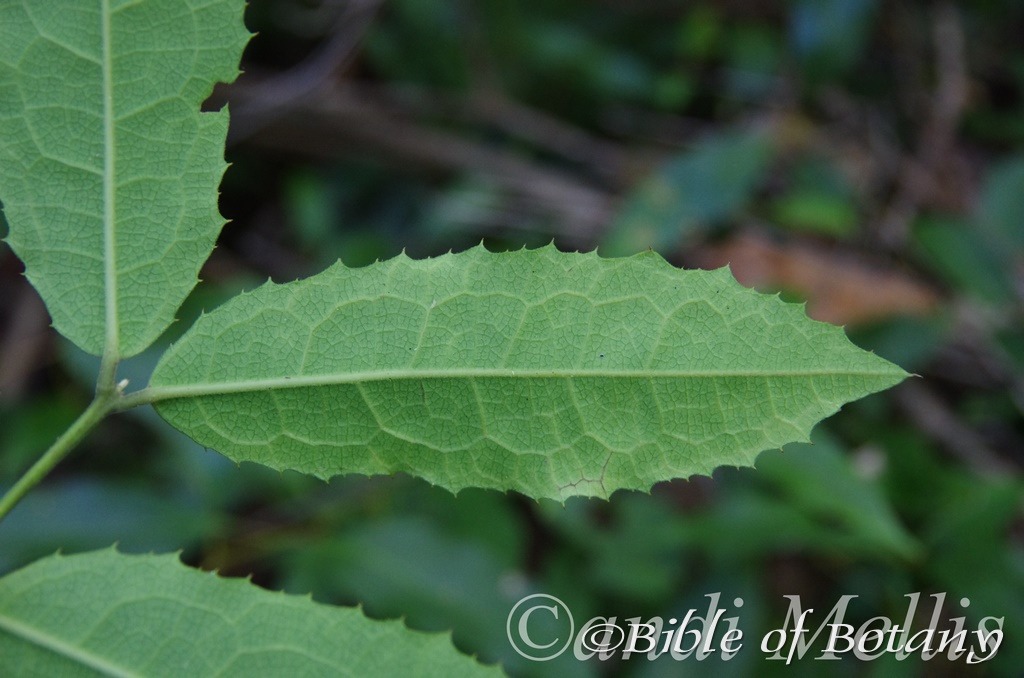
Pigeon Gully Yuraygir National Park NSW
Wilkiea huegeliana
Classification:
Unranked: Magnoliids
Order: Laurales
Family: Monomiaceae
Tribe: Mollinedieae
Genus: Most probably named in honour of Doctor D. E. Wilkie; 1829-1884, who was a German botanist and plant collector.
Specie: Is named in honour of Baron Karl von Hugel; 1795-1870, who was a German traveller, plant collector, botanist and patron of botany.
Sub specie:
Common Name: Veiny Wilkiea or Veiny Leaf Wilkiea.
Distribution:
Wilkiea huegeliana is found south from Fraser Island in southern Queensland to Beecroft Peninsular in southern coastal New South Wales. It is found further north from near Proserpine to north of Cairns. It is mainly found on and east of the Great Dividing Range.
https://avh.ala.org.au/occurrences/search?taxa=Wilkiea+huegeliana#tab_mapView
Habitat Aspect Climate:
Wilkiea huegeliana prefers dense shade to full sun. It grows adjacent to and in openings in well developed, moist and dry rainforests, littoral rainforests, wet Eucalyptus forests or moist open woodlands. The altitude ranges from 10 meters ASL to 950 meters ASL.
The temperatures range from minus 2 degrees in August to 36 degrees in January.
The rainfall ranges from lows of 850mm to 3000mm average per annum.
Soil Requirements:
Wilkiea huegeliana prefers better quality sandy loams to light clays. The soils are derived from decomposed sandstones, brown basalts, black basalts, metamorphic rocks or shale. The soils pH. ranges from 5pH to 6.5pH. It does not tolerate water logged soils. Non saline soils to moderately saline soils are tolerated.
Height & Spread:
Wild Plants: 6m to 8m by 3m to 4m.
Characteristics:
The trunk of Wilkiea huegeliana is tall, straight, grey-brown, and glabrous on young trees with older trees being covered in thin scales. The trunk is irregularly shaped near the base but does not form true a buttress. The branchlets are pale grey and only becoming green or yellow-green near the apex where the leaves occur. The terminal buds are covered in pale grey hirtellous hairs.
The alternate, narrowly oblong to narrowly oblong-elliptical leaves measure 60mm to 150mm in length by 10mm to 50mm in width. The petiole measures 6mm to 10mm in length. The bases are broadly cuneate to rounded while the apexes are bluntly acuminate. The discolourous laminas are deep sea-green, semi glossy and glabrous to very sparsely covered in white to grey hirtellous hairs on the upper lamina while the lower lamina is paler, dull and moderately covered in white hirtellous hairs. The leaf margins are entire or more often sparsely to moderately covered in fine, rigid, irregularly positioned teeth. The laminas are flat to slightly recurve from the mid vein to the margins. The lamina is slightly convex between the main lateral veins, the mid vein and the intramarginal veins which are positioned about a third of the distance from the margin. The mid vein is strongly prominent on both laminas while the main laterals and reticulated veins are prominent on the lower laminas. The lateral veins and reticulated veins are clearly visible from the upper laminas.
The inflorescences of are dioecious and are born singularly or a few in loose clusters from the leaf axils. The pale yellow to yellow-green peduncles, rachises and pedicels are glabrous to sparsely covered in white hirtellous hairs. The peduncles measure 4mm to 8mm in length while the rachises measure 17mm to 21mm in length and the pedicels measure 1mm to 3mm in length. The pale creamy yellow corollas measure 2mm to 3mm in diameter.
The 8 inserted stamens are free for their entire length.
The female flowers are receptacles and carpels that are covered in white hirsute hairs. Wilkiea huegeliana’s flowers appear from December through to early February.
The fruits of Wilkiea huegeliana are drupes. The drupes are glabrous and measure 20mm to 30mm in length by 22mm to 52mm in diameter. The green capsules turn pale creamy yellow when ripe. The resinous to rugose, glossy, black seeds are pointed ellipsoidal and woody. The fruit ripen from July to December.
Wildlife:
Wilkiea huegeliana’s do not appear to have any predators and hang on the bushes for a long time.
The beautiful little Regent Skipper, Euschemon rafflesia butterflies’ larvae feed on the leaves.
Cultivation:
Wilkiea huegeliana is a magnificent small tree that should be grown in association with other rainforest specie. It is ideal at the edge of a rain forest or deep in the center of the small rainforest garden. It also makes a good shade tree in parks, along nature strips, or small to medium gardens but remember it is relatively slow in growth. In cultivation they will grow from 5 meters to 7 meters in height by 4 meters to 5 meters in diameter when grown in the open.
It is slow growing even on good quality basalt soils where deep leaf litter keeps the soil cool and moisture at an even level. If these requirements are met they can cope with temperatures as low as minus 5 degrees and up to 36 degrees. It is moderately drought resistant once established.
Add to the above, if it is given an adequate supply of water and a little native fertilizer on a regular basis the plants should respond with good flowering and fruit over a long period.
Wilkiea huegeliana is a small slow growing tree which makes it ideal for court yard plantings or foyers in large offices. They would also be ideal as an indoor specimen. In the courtyard it is a beautiful tree. The branches can be encouraged to accept several species of smaller hardier ferns and orchids which is rare to see in Australia but very common in Asia at air ports and office foyers.
This tree could be used as a bonsai plant as I have seen some trees in the forest that have grown in some very difficult conditions take on some weird shapes.
Propagation:
Seeds: Seeds of Wilkiea huegeliana can be removed easily from the fruits. Wash the freshly harvested seeds in warm water and let stand for 4 to 6 hours.
Sow freshly treated seeds directly into a seed raising mix, keeping them moist not wet. Do not over water as the seeds will rot off before germination takes place. Place the trays in a cool shaded area with 50mm shade cloth in the bush house. When the seedlings are 40mm to 50mm tall, prick them out and plant them into 50mm native tubes using a good organic mix.
As the seedlings roots reach the bottom of the tubes plant them out into their permanent position.
Fertilize using Seaweed, fish emulsion or organic chicken pellets soaked in water and apply the liquid on an alternate basis. Fertilize every 2 months until the plants are well established then on an annual basis in September or March to maintain better health, vitality and flowering.
Further Comments from Readers:
“Hi reader, it seems you use The Bible of Botany a lot. That’s great as we have great pleasure in bringing it to you! It’s a little awkward for us to ask, but our first aim is to purchase land approximately 1,600 hectares to link several parcels of N.P. into one at The Pinnacles NSW Australia, but we need your help. We’re not salespeople. We’re amateur botanists who have dedicated over 30 years to saving the environment in a practical way. We depend on donations to reach our goal. If you donate just $5, the price of your coffee this Sunday, We can help to keep the planet alive in a real way and continue to bring you regular updates and features on Australian plants all in one Botanical Bible. Any support is greatly appreciated. Thank you.”
In the spirit of reconciliation we acknowledge the Bundjalung, Gumbaynggirr and Yaegl and all aboriginal nations throughout Australia and their connections to land, sea and community. We pay our respect to their Elders past, present and future for the pleasures we have gained.

Mount Cootha Botanic Gardens Qld.
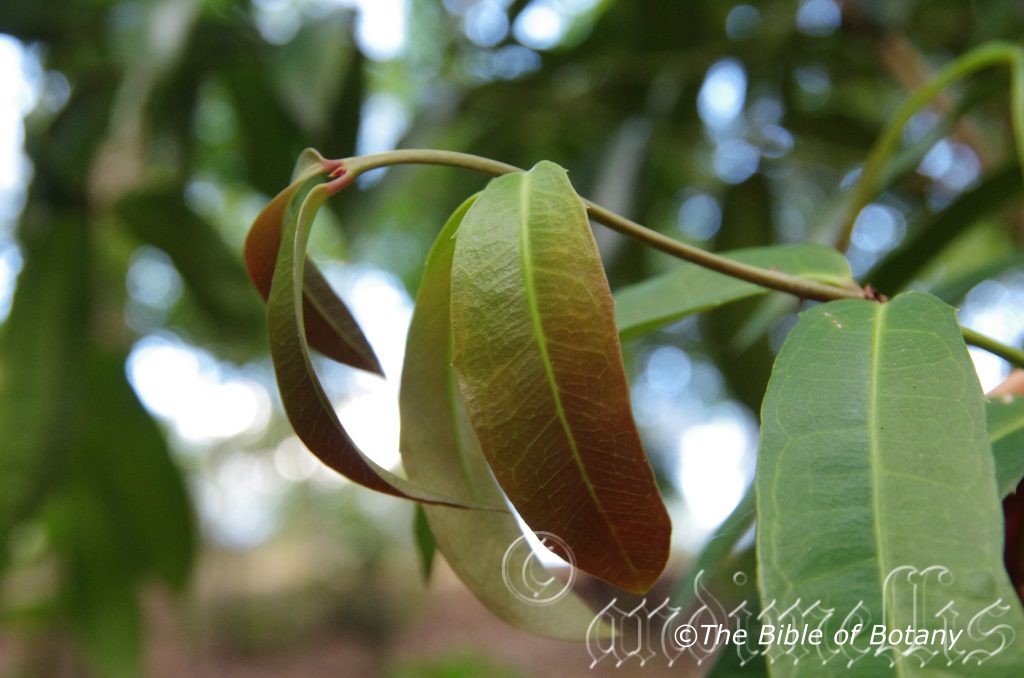
Mount Cootha Botanic Gardens Qld.

Mount Cootha Botanic Gardens Qld.

Mount Cootha Botanic Gardens Qld.
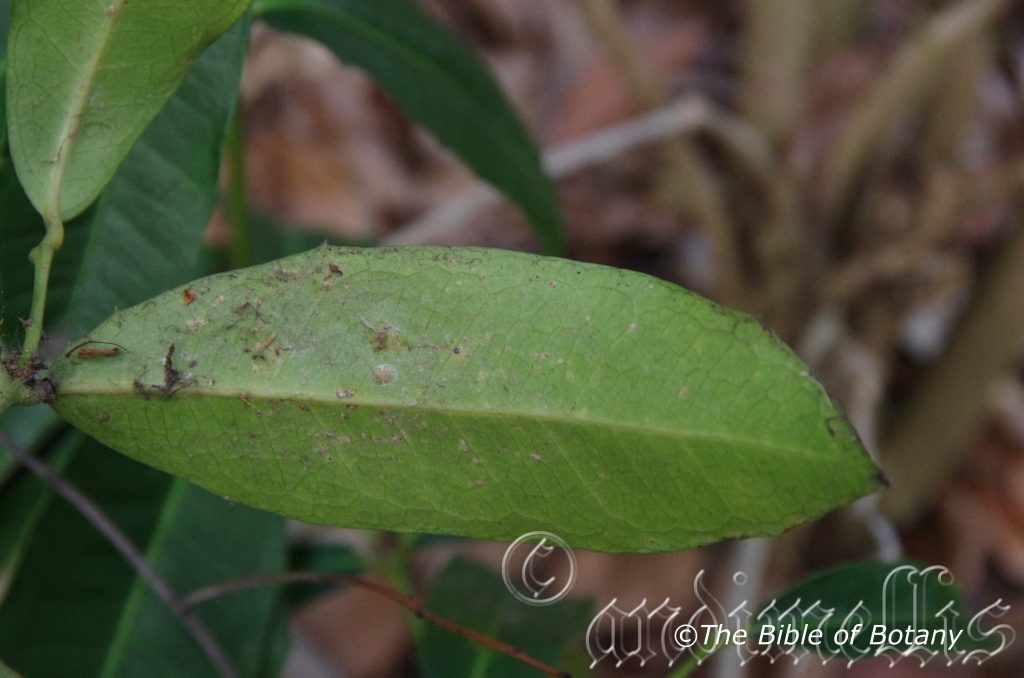
Mount Cootha Botanic Gardens Qld.

Mount Cootha Botanic Gardens Qld.
Wilkiea macrophylla
Classification:
Unranked: Magnoliids
Order: Laurales
Family: Monomiaceae
Tribe: Mollinedieae
Genus: Maybe named in honour of Doctor D. E. Wilkie; 1829-1884, who was a German botanist and plant collector.
Specie: From Makros which is Ancient Greek for large and Phullon/Phýllon, which is Ancient Greek for a leaf. It refers to leaves, which are a lot larger than other species in the genus.
Sub specie:
Common Name: Large Leaf Wilkiea.
Distribution:
Wilkiea macrophylla is found in several disjunct populations south from Black Mountain National Park south of Cooktown in far north eastern Queensland to the Illawarra district in central coastal New South Wales. It is found on and east of the Great Dividing Range to the coast.
https://avh.ala.org.au/occurrences/search?taxa=Wilkiea+macrophylla#tab_mapView
Habitat Aspect Climate:
Wilkiea macrophylla prefers dense shade to full sun. It grows adjacent to and in openings in well developed, moist and dry rainforests, littoral rainforests and wet Eucalyptus forests. The altitude ranges from 5 meters ASL to 600 meters ASL.
The temperatures range from minus 2 degrees in August to 36 degrees in January.
The rainfall ranges from lows of 850mm to 3000mm average per annum.
Soil Requirements:
Wilkiea macrophylla prefers better quality sandy clays to medium clays. The soils are usually derived from decomposed sandstones, brown basalts, black basalts, metamorphic rocks or shale. The soils pH. ranges from 5pH to 6.5pH. It does not tolerate water logged soils. Non saline soils to moderately saline soils are tolerated.
Height & Spread:
Wild Plants: 4m to 16m by 3m to 4m.
Characteristics:
Wilkiea macrophylla grows as a small straight tree with hard, pale grey bark on the trunk. The branches are pale grey and only becoming yellow-green where the leaves occur. The branchlets are glabrous.
The opposite, oblong, oblong-elliptical or oblong-lanceolate leaves of Wilkiea macrophylla measure 80mm to 220mm in length by 30mm to 90mm in width. The petiole measures 1mm to 10mm in length. The bases are broad cuneate to rounded-cuneate while the apexes are acute often with a blunt tooth at the apex. The discolourous laminas are sea-green to deep sea-green, semi glossy to glossy and glabrous on the upper lamina while the lower lamina is paler and dull. The leaf margins are covered in long rigid irregularly spaced teeth. The laminas are flat to slightly recurved from the mid vein to the margins or slightly convex and decurve near the apex. The mid vein is strongly prominent on the lower laminas while the main laterals and reticulated veins are prominent on the lower laminas. The mid vein, lateral veins and reticulated veins are clearly visible from the upper laminas.
The inflorescences of Wilkiea macrophylla are dioecious and are born singularly or a few in loose clusters from the leaf axils. The pale yellow to yellow-green peduncles, rachises and pedicels are glabrous to sparsely covered in white hirtellous hairs. The peduncles measure 2mm to 4mm in length while the rachises measure 15mm to 18mm in length and the pedicels measure 4mm to 6mm in length. The pale creamy yellow corollas measure 2mm to 3mm in diameter.
The 8 inserted stamens are free for their entire length.
The female flowers are receptacles and carpels that are glabrous and measure 3mm to 4mm in diameter. Wilkiea macrophylla’s flowers appear from May through to early December.
The fruits of Wilkiea macrophylla are ovoidal drupes. The 3mm to 8mm drupes are seated on a fleshy receptacle with 12 to 15 carpels. The receptacles and carpels are glabrous and turn pale creamy yellow when ripe. The glossy, black seeds are ovoidal and woody. The fruit ripen from April through to September.
Wildlife:
Wilkiea macrophylla does not appear to have any predators despite the fruits hanging on the trees for a long time.
The beautiful little Regent Skipper, Euschemon rafflesia butterflies’ larvae feed on the leaves.
Cultivation:
Wilkiea macrophylla is a magnificent small tree that could be grown in association with other rainforest specie. It is ideal at the edge of a rain forest or deep in the center of the small rainforest garden. It also makes a good small, shade tree in parks, along nature strips or in small to large gardens but remember it is relatively slow in growth. In cultivation they will grow from 3 meters to 12 meters in height by 4 meters to 8 meters in diameter when grown in the open.
It is slower growing even on good quality basalt soils where deep leaf litter keeps the soil cool and moisture at an even level. If these requirements are met it can cope with temperatures as low as minus 5 degrees and up to 36 degrees. It is moderately drought resistant once established.
Add to the above, if it is given an adequate supply of water and a little native fertilizer on a regular basis the plants should respond with good flowering and fruit over a long period.
Wilkiea macrophylla is a small slow growing tree which makes it ideal for court yard plantings or foyers in large offices. They would also be ideal as an indoor specimen. In the courtyard it is a beautiful tree. The branches can be encouraged to accept several species of smaller hardier ferns and orchids which is rare to see in Australia but very common in Asia at air ports and office foyers.
This tree could be used as a bonsai plant as I have seen the plants used successfully in China as bonsai specimens.
Propagation:
Seeds: Seeds of Wilkiea macrophylla can be removed easily from the fruits.
Sow freshly treated seeds directly into a seed raising mix, keeping them moist not wet. Do not over water as the seeds will rot off before germination takes place. Place the trays in a cool shaded area with 50mm shade cloth in the bush house. When the seedlings are 40mm to 50mm tall, prick them out and plant them into 50mm native tubes using a good organic mix.
As the seedlings roots reach the bottom of the tubes plant them out into their permanent position. Do not delay.
Fertilize using Seaweed, fish emulsion or organic chicken pellets soaked in water and apply the liquid on an alternate basis. Fertilize every 2 months until the plants are well established then on an annual basis in September or March to maintain better health, vitality and flowering.
Further Comments from Readers:
“Hi reader, it seems you use The Bible of Botany a lot. That’s great as we have great pleasure in bringing it to you! It’s a little awkward for us to ask, but our first aim is to purchase land approximately 1,600 hectares to link several parcels of N.P. into one at The Pinnacles NSW Australia, but we need your help. We’re not salespeople. We’re amateur botanists who have dedicated over 30 years to saving the environment in a practical way. We depend on donations to reach our goal. If you donate just $5, the price of your coffee this Sunday, We can help to keep the planet alive in a real way and continue to bring you regular updates and features on Australian plants all in one Botanical Bible. Any support is greatly appreciated. Thank you.”
In the spirit of reconciliation we acknowledge the Bundjalung, Gumbaynggirr and Yaegl and all aboriginal nations throughout Australia and their connections to land, sea and community. We pay our respect to their Elders past, present and future for the pleasures we have gained.
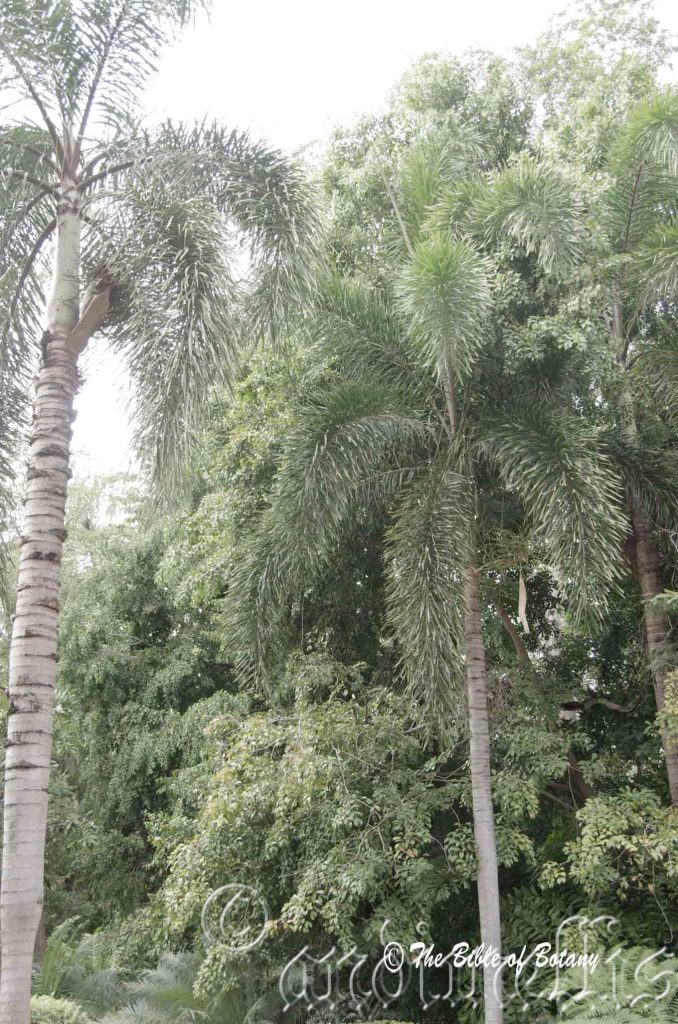
Palmata Gardens Townsville Qld.
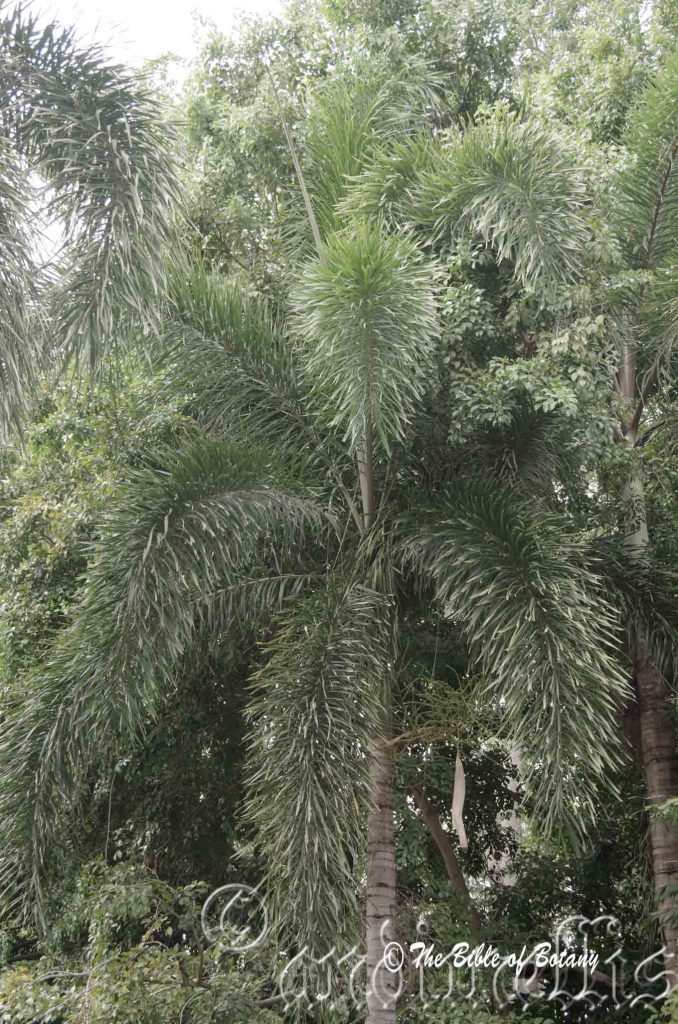
Palmata Gardens Townsville Qld.
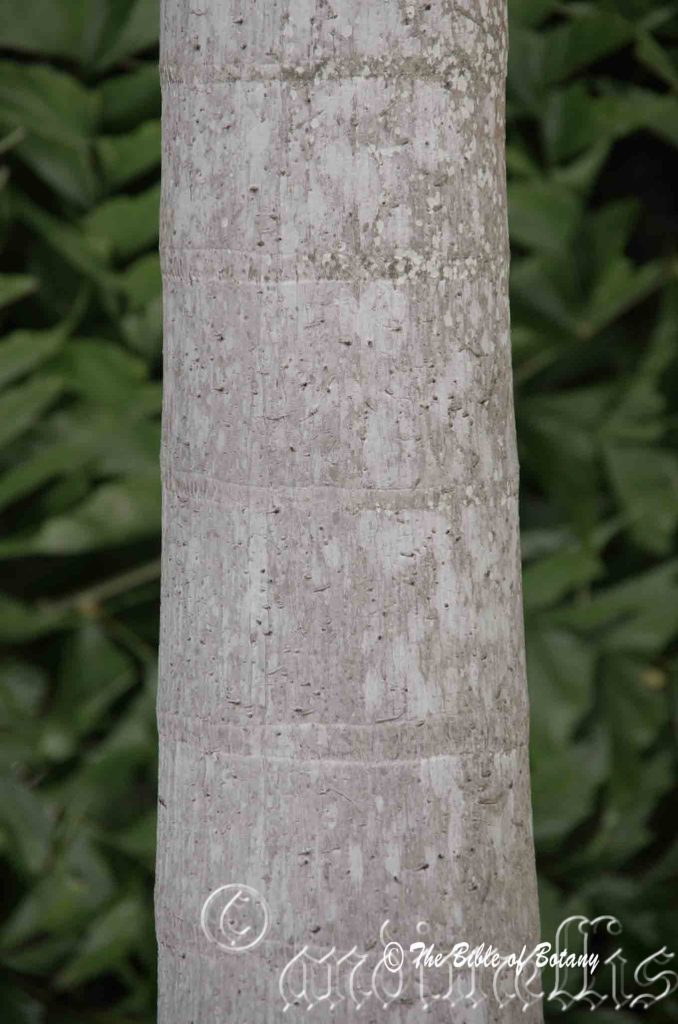
Palmata Gardens Townsville Qld.
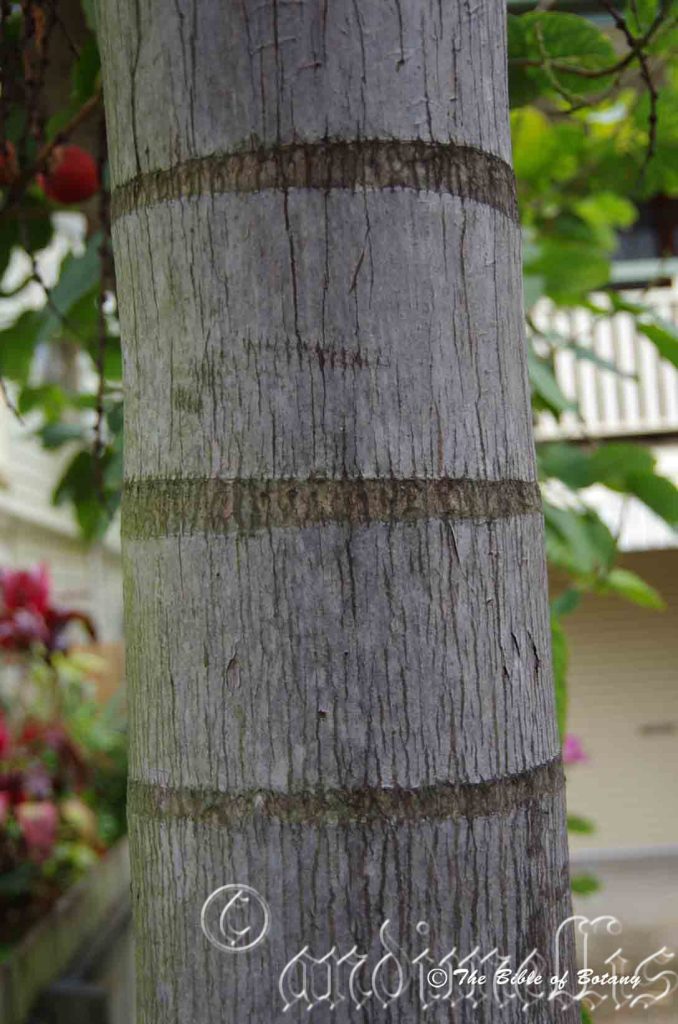
Carina Qld.

Palmata Gardens Townsville Qld.
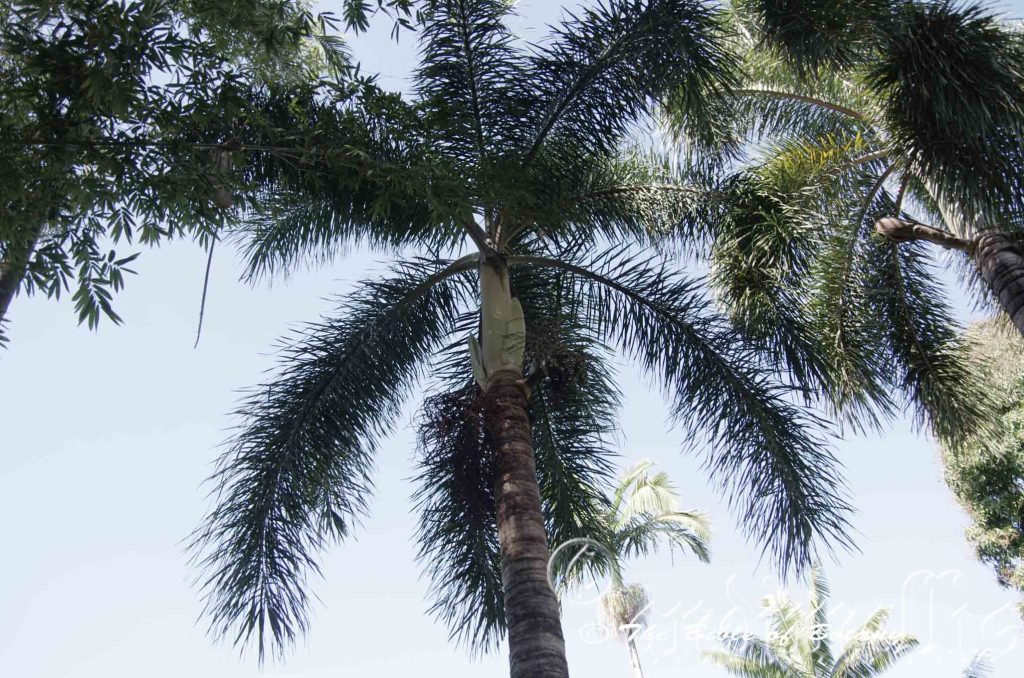
Palmata Gardens Townsville Qld.
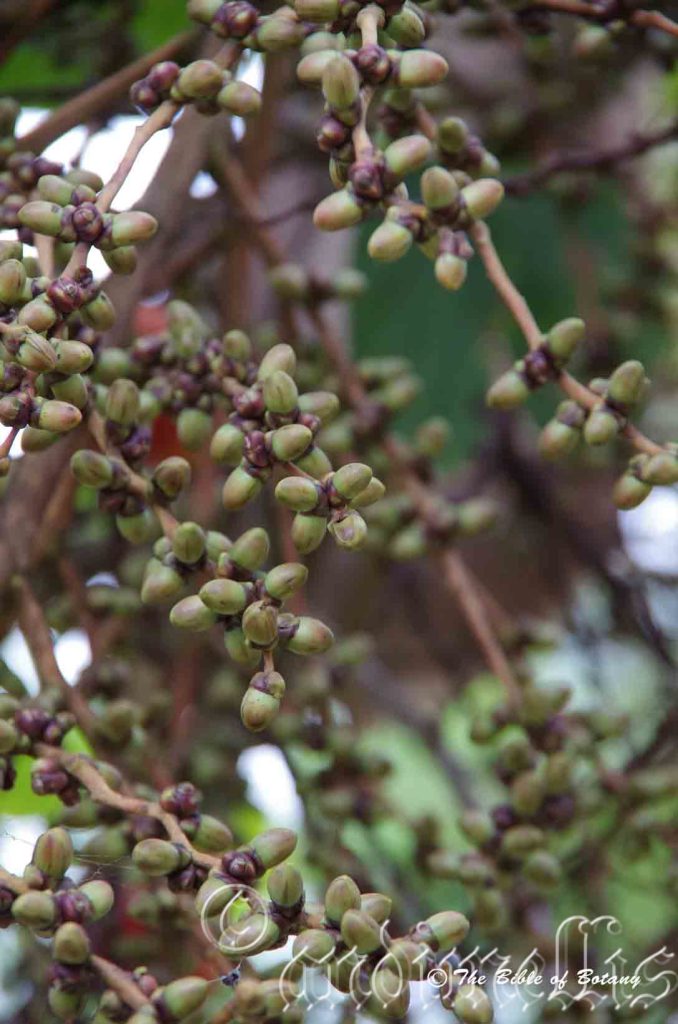
Palmata Gardens Townsville Qld.
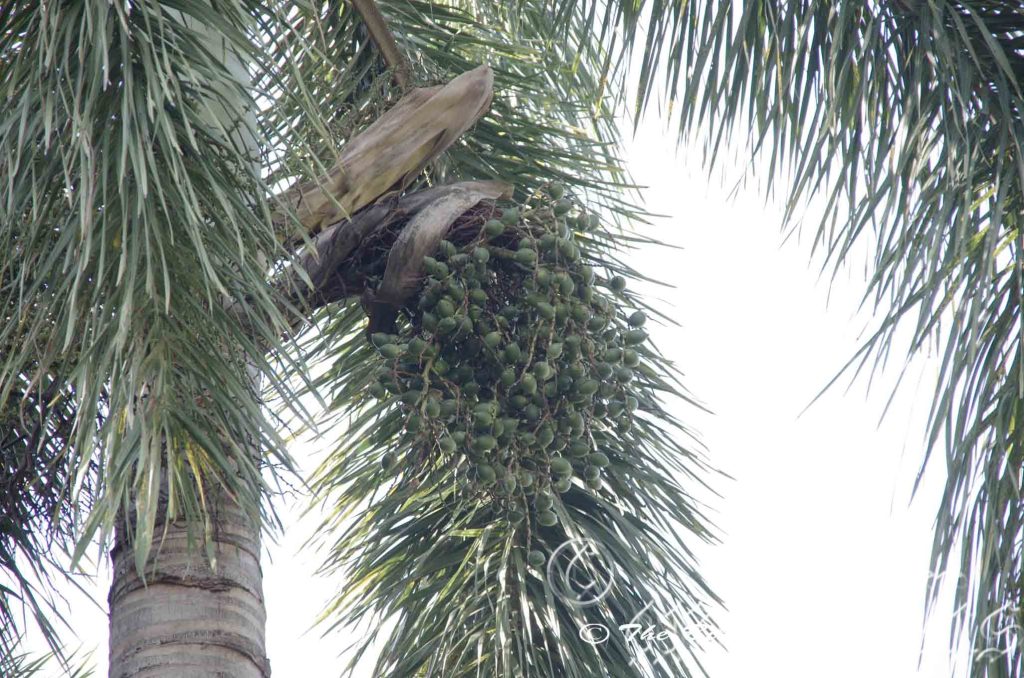
Palmata Gardens Townsville Qld.

Palmata Gardens Townsville Qld.

Palmata Gardens Townsville Qld.

Palmata Gardens Townsville Qld.
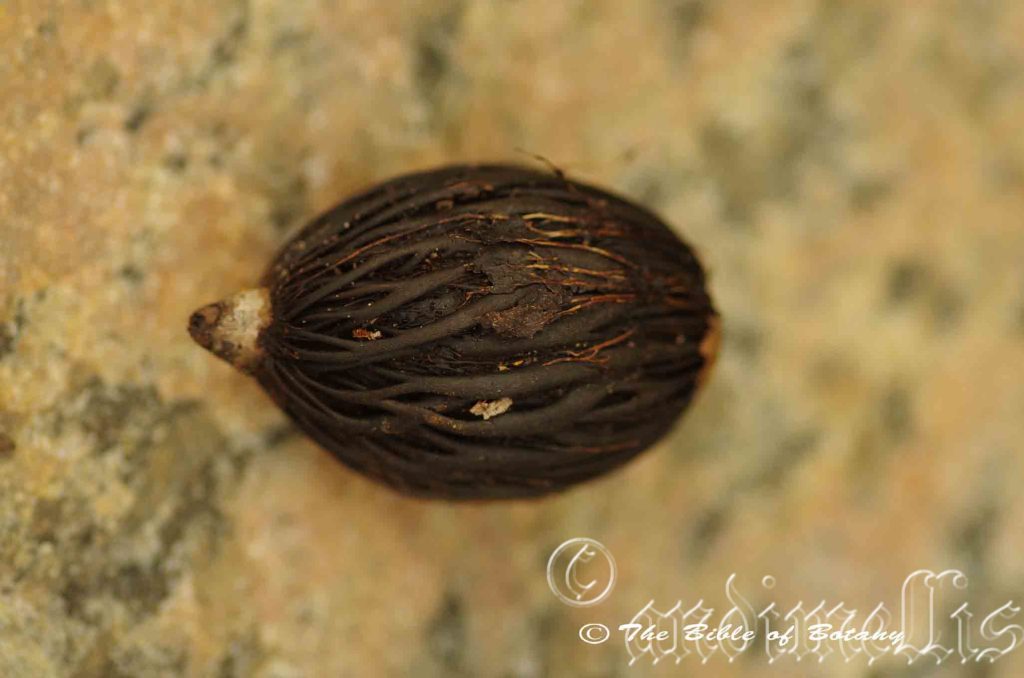
Palmata Gardens Townsville Qld.
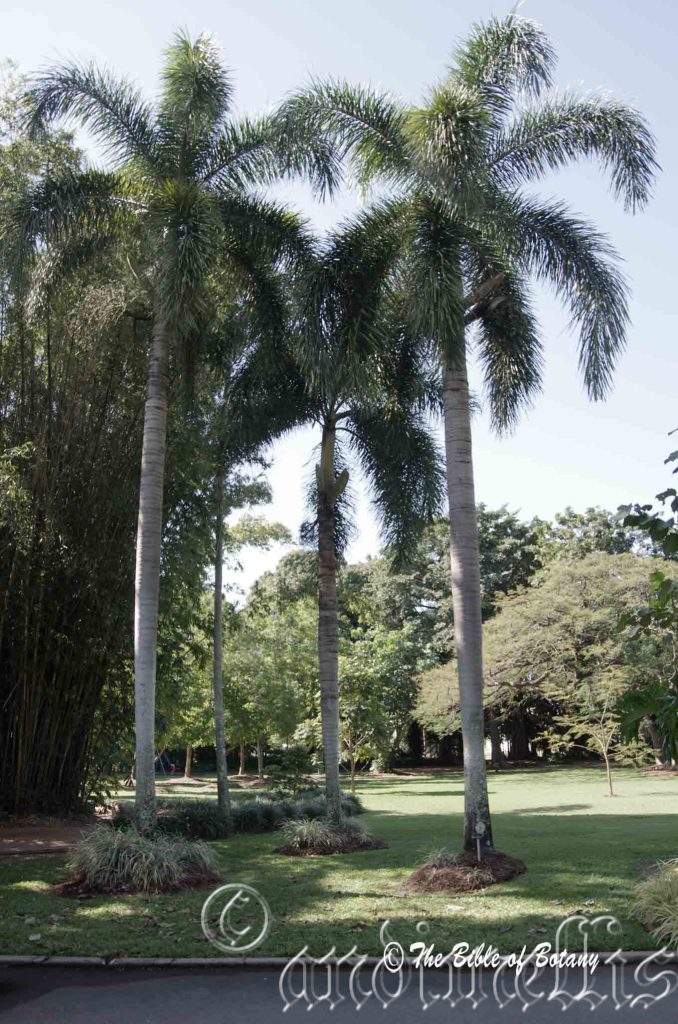
Palmata Gardens Townsville Qld.
Wodyetia bifurcata
Classification:
Unranked: Commelinids
Order: Arecales
Family: Areceae
Subfamily: Areceae
Tribe: Areceae
Genus: Is named in honour of Wodyeti; 1900-1978 who was an Aboriginal bushman who was the last of his line. He had a vast traditional knowledge of the palm’s natural habitat, from Bathurst Bay to the Melville Range in Far North Queensland. It was Wodyeti who bought this spectacular palm to the attention of botanists in 1978 and passed on his intimate knowledge of the plant.
Specie: From Bi/Bis, which is Greek/Latin for two and Furcata, which is Latin for a fork. It usually refers to branches, leaves or fronds, which divide twice into two equal branches throughout, but here it refers to the fibres surrounding the seeds.
Sub specie:
Common Name: Fox Tail Palm.
Distribution:
Wodyetia bifurcata is restricted to a small area in Cape Melville National Park on Cape York peninsular in Queensland.
https://avh.ala.org.au/occurrences/search?taxa=Wodyetia+bifurcata#tab_mapView
Habitat Aspect Climate:
Wodyetia bifurcata prefers medium shade to full sun. It grows adjacent to and in well developed, moist rainforests and vine forests. The altitude ranges from 5 meters ASL to 400 meters ASL.
The temperatures range from 10 degrees in August to 36 degrees in January.
The rainfall ranges from lows of 1100mm to 1600mm average per annum.
Soil Requirements:
Wodyetia bifurcata prefers rocky sandy clays through to gravelly medium clays. The soils are derived from better quality granites. The soils pH. ranges from 5pH to 6.5pH. It does not tolerate water logged soils. Non saline soils to moderately saline soils are tolerated.
Height & Spread:
Wild Plants: 12m to 15m by 4m to 5m.
Characteristics:
Wodyetia bifurcata grows as a tall palm with beautiful slender grey trunk to 12 meters in height. The trunk is pale grey and retains the leaf scars of discarded leaves on the upper part of the trunk.
The arching leaves of Wodyetia bifurcata’s measure 2600mm to 3200mm in length by 1000mm to 1400mm across. It is a self-cleaning palm shedding old leaves soon after they die. The 8 to 12 leaves clasp the trunk in a crown shaft for the upper 1000mm to 1200mm of the trunk. The leaves have a pronounced lateral twist with 90 to 110 pairs of plumose pinnae fully circling the rachises. The pinnae measure 650mm to 700mm in length by 30mm to 50mm in width. The pinnae bases taper to the rachis while the apexes are praemorse. The margins are entire while the midrib is prominent on the lower laminas.
The green petioles and rachises have black scurf along the base and along the petioles. The petioles measure 250mm to 900mm in length while the rachises measure 2300mm to 2400mm in length. It is flattened above and convex below. The discolourous leaves are sea-green on the upper lamina while the lower lamina is silvery-green.
Wodyetia bifurcata’s inflorescence is born in large pendant panicles from below the bottom of the crown shaft. They measure 1000mm to 1120mm in length by 330mm to 400mm in width. The palms are monoecious.
The flowers are born in a 2 to 1 ratio of male to female flowers. The 3 creamy green sepals of the male flowers measure 5mm to 6mm in length. The 3 elliptical petals are creamy green external and cream internally and are concaved. The petals measure 8mm to 10mm in length. The 58 to 72 stamens measure 4mm to 5mm in length while the anthers measure 1.6mm to 2mm in length. The white style and stigma are well developed but ovary is absent. The pistil measures 5mm to 6mm.
The 3 green to green-brown sepals in the female flowers measure 6mm to 7mm in length by 5mm to 7mm in width. The 3 green to green-brown petals measure 9mm to 11mm in length by 6mm to 8mm in width near the base. The trilobed, divaricate stigma measures 5mm in length.
Wodyetia bifurcata’s fruit is an ovoid to globose nut. The nuts measure 50mm to 65mm in length by 27mm to 60mm in diameter. The green nuts turn orange-red to scarlet red on ripening. The brown sepals are persistent on the fruits. The red pericarp sheds to reveal a thick layer of fawn-brown coconut fibres that surround the nut. The nuts measure 32mm in length by 26mm in diameter.
Wildlife:
Wodyetia bifurcata is the host plant for the Yellow Palm Dart butterfly, Cephrenes trichopepla and the Orange Palm Dart butterfly, Cephrenes augiades subspecies aperthias.
Possums and gliders enjoy eating the flowers. The fruits are probably also eaten by various species of Flying foxes.
Cultivation:
Wodyetia bifurcata is a beautiful palm from the far north coast rainforests of Australia and deserves a place in every tropical and sub-tropical garden. It may reach 15 meters by 6 meters in cultivation. It is a relatively fast growing palm so is excellent specie where a quick tropical look is required. The trunk is suitable for stags and other epiphytes especially if the trunks are protected from winds and are shaded during the heat of the day.
Wodyetia bifurcata will grow on most soils especially those that are not pure sand as long as an adequate supply of water is given. It grows in very wet soils provided the water is not stagnant.
It is a good feature plant around pools and ponds as it is self-cleaning but keep them back far enough as when it starts flowering and fruiting it can be quite messy in such situations. Roots do not give any problems when in confined places like courtyards and near pools. This is a great accent plant against hard surfaces like brick walls or where a slow maturing plant is required.
Due to their habit of growth the fox tail palm makes very good indoor subjects or tub plants for patios for many years.
Group plantings of three or four palms spaced at 4 meters will look thick and bushy in about five or six years. Scattered plantings throughout a rain forest garden look much more natural and pleasant to the eye than dense plantings.
Indoors or Potted On:
Sawdust or sand mixes are too well draining unless the sawdust has completely composted down where it exhibits a texture like plastacine to the touch. Moisture can be squeezed out between the fingers yet it remains moist. I find this a great basis to start with.
Mix equal parts of the well decomposed saw dust with the above feel with perlite and vermiculite. To this add two part sharp clean sand and one part compost. Make sure the sand comes from a source that does not have salt.
The Saw dust in this condition creates the moisture retention and holds nutrient in. The perlite and vermiculite make the mix neutral and both have great water holing capacity without shrinkage with age. The sand creates good drainage and is good for good healthy root development.
Indoor plants need good light and ventilation without drying breezes or wind. Again fertilize the plants on a monthly basis with the above formula on a rotation basis.
Propagation:
Seeds: Sow fresh into a seed raising mix and cover with 10mm of mix. Seeds are often slow and erratic to germinate. When the seedlings are at the two to three leaf stages, prick them out and plant them into 75mm native tubes using a good organic mix.
Where mass plantings of Wodyetia bifurcata are required, as a feature; plant them at 3 meters to 4 meters centers. Plantings along a drive way should be planted at 4 meter centers.
Fertilize using Seaweed, fish emulsion or organic chicken pellets soaked in water and apply the liquid on an alternate basis. Fertilize every 2 months until the plants are well established then on an annual basis in September or March to maintain better health, vitality and flowering.
Further Comments from Readers:
“Hi reader, it seems you use The Bible of Botany a lot. That’s great as we have great pleasure in bringing it to you! It’s a little awkward for us to ask, but our first aim is to purchase land approximately 1,600 hectares to link several parcels of N.P. into one at The Pinnacles NSW Australia, but we need your help. We’re not salespeople. We’re amateur botanists who have dedicated over 30 years to saving the environment in a practical way. We depend on donations to reach our goal. If you donate just $5, the price of your coffee this Sunday, We can help to keep the planet alive in a real way and continue to bring you regular updates and features on Australian plants all in one Botanical Bible. Any support is greatly appreciated. Thank you.”
In the spirit of reconciliation we acknowledge the Bundjalung, Gumbaynggirr and Yaegl and all aboriginal nations throughout Australia and their connections to land, sea and community. We pay our respect to their Elders past, present and future for the pleasures we have gained.
Wolffia angusta
Classification:
Unranked: Monocots
Order: Alismatale
Family: Araceae
Subfamily: Lemnoideae
Genus: Is named in honour of the Johanne Friedrick Wolff; 1778-1806, who was a German botanist and physician or Herman Wolff; who was a German veterinary surgeon and botanist.
Specie: From Angusta, which is Latin for narrow. It refers to leaves, which are narrow but not linear.
Sub species:
Common Name: Duck Weed.
Distribution:
Wolffia angusta is very widespread throughout Asia from China to northern Australia and New Guinea. It is found in permanent waterways. In Western Australia it is found south from the Ord River to Broome and on the Swan River to Fremantle.
In the Northern Territory there is an isolated population on Dashwood Creek in the Tanami Desert and in Queensland on the Leichardt River and Lake Moondarra near Mount Isa. I would suspect that it is more widespread in the northern third of the Northern Territory and north western Queensland.
In the east it is found in most the water catchments that flow east from the Atherton Tableland in far north Queensland to Melbourne and most of the larger River systems that hold permanent water flowing west including the Darling, Murrumbidgee and the Murray River to Lake Alexandra in South Australia.
It is also found on the southern flowing Rivers in Victoria and the Thermal Springs near Deloraine in northern Tasmania.
It is also found in a disjunct populations in Malaya, New Guinea and Papua.
https://avh.ala.org.au/occurrences/search?taxa=Wolffia+angusta#tab_mapView
Habitat Aspect Climate:
Wolffia angusta prefers full sun to light dappled shade. It grows along slow flowing creeks, alluvial plains, billabongs backwaters or in most types of permanent fresh water ponds. The altitude ranges from 5 meter ASL to 600 meters ASL.
The temperatures range from 6 degrees in August to 40 degrees in January.
The rainfalls range from lows of 200mm to an average of 3000mm.
Soil Requirements:
Wolffia angusta prefer growing in still or slow moving water that overlies most soil structures and types. The waters pH varies from 6pH through to 7.5pH are preferred. Non saline soils to moderately saline soils are tolerated.
Height & Spread:
Wild Plants: 2mm to 15mm by 1.5m to 10mm.
Characteristics:
Wolffia angusta’s consist of a single leaf or 2 or up to 5 leaves joined in the process of reproducing vegetively. This is especially the case with more than one leaf when reproduction is rapid. The plants have 1 to 11 individual roots that measure 15mm to 35mm in length.
Wolffia angusta’s oval leaves are thick and measure 2mm to 5mm in length by 1.2mm to 2.5mm in width. The discolourous leaves are grass-green and glabrous or covered in fine punctate dots on the upper laminas while the lower laminas are usually deep maroon-red. The margins are entire while the upper laminas are slightly convex to flat.
The daughter leaves remain attached to the parent leaf until they reach maturity.
There is a budding pouches located adjacent to the roots on the upper lamina where the protogynous flowers emerge. The inflorescences of Landoltia punctata are minute spathes almost covering the pouches. The 1 or sometimes 2 stamens and pistil are green and glabrous. It must be noted that the plants rarely flower and no flowering has been recorded in the Australian plants.
Wolffia angusta’s fruits are minute globular capsules. The seeds are minute.
Confusing Genre:
The following genre is rather difficult to distinguish without a microscope to observe the flowering pouches. The characteristics below must be taken as a guide only. Australia can brag though with Wolffia angusta, which is the smallest known flowering plant in the world.
Wolffia angusta’s roots are absent. The lower surface is purplish or green. generally has larger leaves.
Landoltia punctata has 2 to 7 roots. The lower surface is purplish.
Lemna specie’s roots are absent or with a single root. The lower surface is green. Usually in long strings held together but easily broken.
Spirodela polyrhiza has 5 to 18 roots. The lower surface is purplish.
Wildlife:
Wolffia angusta are feasted upon by many fresh water fish and fresh water birds especially the surface filter feeders like ducks.
While the plants are edible and are highly nutritious the water source may contain many toxins.
Cultivation:
At first glance Wolffia angusta may appear to be a floating water weed but in fact has an extremely important role to play in recycling waste matter and preventing nutrient blooms which occur in nature.
The plants make an interesting addition to the outside fish pond or internal glass aquariums where they will remove large quantities of ammonium from the water without affecting the pH or oxygen content. In fact they improve the conditions to allow greater oxygen uptake by the water.
Phytoremediation Wolffia angusta is an all-round phytoremediator meaning that it can take up large amounts of metals from the water. They can be used very successfully in controlling very acid or alkaline water nutrient rich water which is acid due to high levels of nitrate fertilizers leaching from the soil. It is a safer method than using chemicals, is more cost effective, is environmentally friendly, non-disruptive as opposed to physically filtering the water or using chemicals to dissolve the mineral toxicity and pumping water into the polluted water it dilute it to safer levels.
Eutrophication is Greek for eutrophic—healthy, adequate nutrition while hypertrophication relates to the excess of nutrient within the body of water usually caused by factory or mining discharge farm discharge and decaying vegetable and animal matter. Professors Randall Kerstetter, Joachim Messing and Todd Michael research on different duckweeds from the Delaware and Raritan Canal near Rutgers University in the USA showed they were able to extract nitrogen and phosphate pollutants from agricultural and municipal wastewater. Their research concluded in reducing algae growth, coliform bacterial counts and mosquito larvae on ponds, while at the same time concentrated heavy metals, capturing or degrading toxic chemicals, and encourage the growth of other aquatic animals such as frogs, fish and waterfowl. Duckweeds produce biomass faster than any other flowering plant. They can be used as high-protein feed for domestic animals and show great potential as an alternative for biofuel production.
Landoltia punctata like Spirodela polyrhiza sequence could unlock the remarkable potential of rapidly growing aquatic plants for absorbing atmospheric carbon dioxide to help break the present unbalanced spiraling ecosystem carbon cycle we have created.
Culley et al 1981 found that a mixture with various specie 1,378 kilograms of Nitrogen, 347 kilograms of Phosphorous and 441 kilograms of Potassium could remove from 1 hectare of land every 12 months.
Under ideal conditions Nitrogen uptake can reach 1,890 kilograms a year. Landolt and Kandeler 1987 also noted that some specie achieved a biomass of in excess of 75 tons a year per hectare with a protein content of 45mm which would make it an ideal dietary supplement for pigs, livestock, fish and fowls.
Landoltia punctata like Spirodela polyrhiza has tremendous potential to supply the world’s protein needs being up to 45mm protein producing up to $300,000 a hectare at present wholesale prices for human consumption. It is far more environmentally friendly. The biggest drawback is government regulation, lack of support for new agricultural industries. The Chinese are now seriously contemplating their use as alternately protein source. This however would not discourage me one little bit in recommending it as the next crop of the future because of its huge potential, ease of growth and present worldwide prices.
Spirodela polyrhiza are high in vitamin A, amino acids, 25mm to 48mm protein, and 17 to 18mm fiber. Up to 22mm calcium, 15mm magnesium, 0.11mm zinc and 0.14mm sodium by dry weight. Nutrition and Food Research Centre in Freising (Germany) (I believe Landoltia punctata would return similar nutritional values to Spirodela polyrhiza because it has a similar rate of growth and similar nutrient requirements. Window tests we conducted showed identical growth reproduction rates with various soluble nutrients added to the water.)
Propagation:
Seeds: Wolffia angusta is easily grown by allowing the plants to self-bud in water free of water fowl and herbivorous fish until the numbers increase to a satisfactory level.
Fertilizing is generally not required.
Further Comments from Readers:
“Hi reader, it seems you use The Bible of Botany a lot. That’s great as we have great pleasure in bringing it to you! It’s a little awkward for us to ask, but our first aim is to purchase land approximately 1,600 hectares to link several parcels of N.P. into one at The Pinnacles NSW Australia, but we need your help. We’re not salespeople. We’re amateur botanists who have dedicated over 30 years to saving the environment in a practical way. We depend on donations to reach our goal. If you donate just $5, the price of your coffee this Sunday, We can help to keep the planet alive in a real way and continue to bring you regular updates and features on Australian plants all in one Botanical Bible. Any support is greatly appreciated. Thank you.”
In the spirit of reconciliation we acknowledge the Bundjalung, Gumbaynggirr and Yaegl and all aboriginal nations throughout Australia and their connections to land, sea and community. We pay our respect to their Elders past, present and future for the pleasures we have gained.
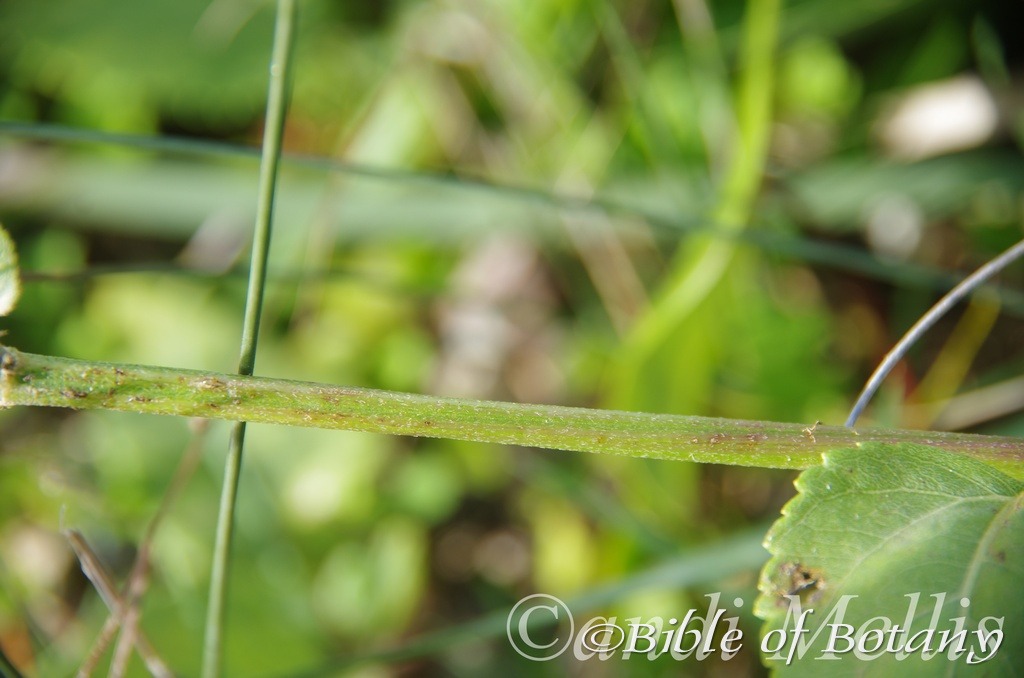
Wollastonia uniflora North Yuraygir National Park NSW
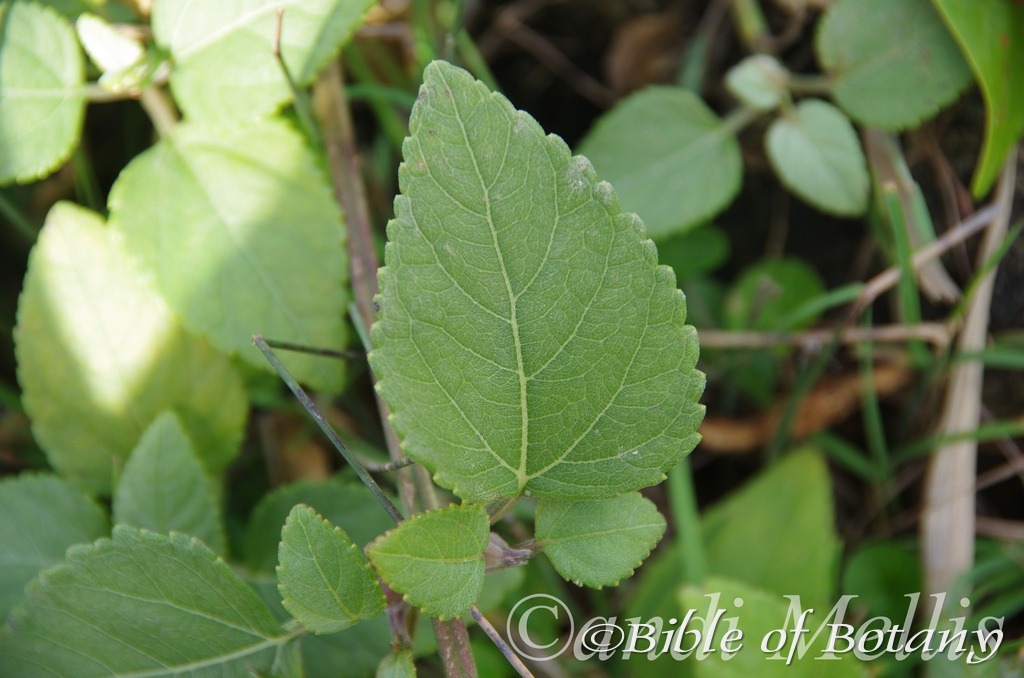
Wollastonia uniflora North Yuraygir National Park NSW
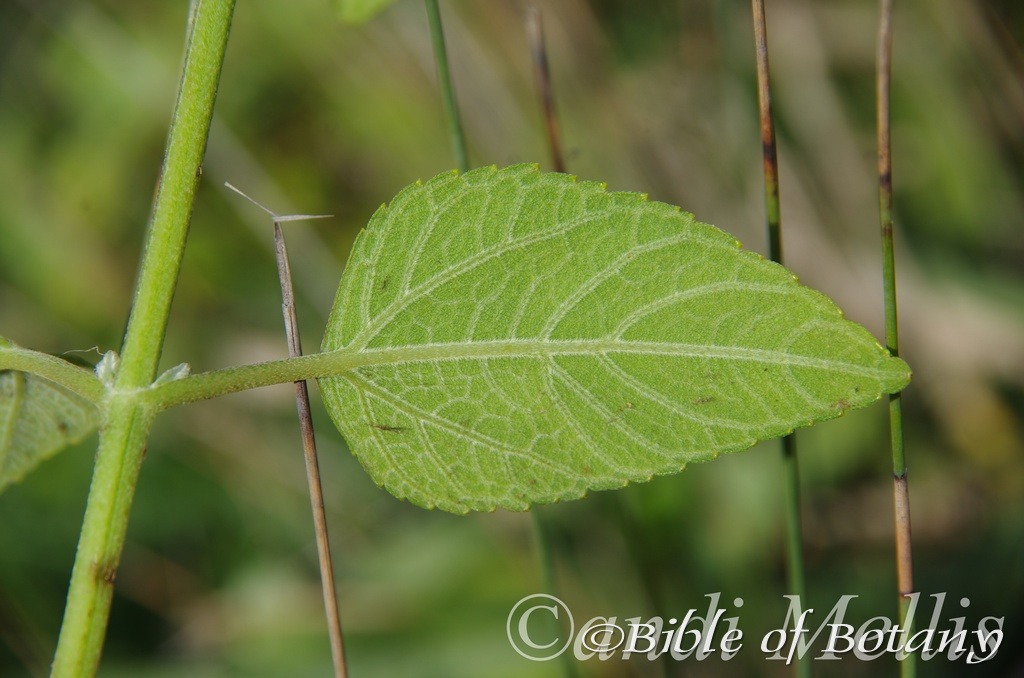
Wollastonia uniflora North Yuraygir National Park NSW
Wollastonia uniflora
Classification:
Unranked: Eudicots
Unranked: Asterids
Order: Asterales
Family: Asteraceae
Subfamily: Asteroideae
Tribe: Heliantheae
Genus: Is named in honour of the William Hyde Wollaston; 1766-1828, who was an English chemist and physicist who discovered palladium and rhodium and worked out the procedure for extracting pLatinum into malleable ingots.
Specie: From Uni, which is Greek/Latin for one and Fl?ris, which is Latin for a flower or Fl?s which is Roman for the Goddess of spring and flowers. It refers to plants, which have a single flower at each leaf node.
Sub species:
Common Name: Hagonoi, Hagonoy, Sea Daisy, Beach Daisy or Sea Ox-eye.
Distribution:
Wollastonia uniflora is found along the coastal dunes from Bathurst Melville Island in north western Northern Territory to the Torres Straight Islands in far north eastern Queensland and south to Narrawalla in central coastal New South Wales.
It is also found on the Bougainville, Cocos Keeling Islands, Christmas Island, Indonesia, Lord Howe Island, New Guinee, Norfolk Island and Papua.
https://avh.ala.org.au/occurrences/search?taxa=Wollastonia+unflora#tab_mapView
Habitat Aspect Climate:
Wollastonia uniflora prefer light dappled shade to full sun. It usually grows in beach forests adjacent to dry heaths, monsoonal forests, and vine thickets, off shore islands on back dunes, frontal dunes or occasionally on mountain heaths. The altitude usually ranges from 5 meters ASL to 20 meters ASL but around Mareeba is found at Mount Carbine and Mareeba it reaches 50 meters ASL.
The temperatures range from 1 degree in August to 40 degrees in January.
The rainfalls range from lows of 800mm to an average of 3200mm.
Soil Requirements:
Wollastonia uniflora prefer to grow on fine sands and course sands. The soils are usually derived from accumulated beach sands, accumulated coral sands or at times decomposed granites. The soils pH. ranges from 4.5pH to 8pH. It does not tolerate water logged soils. Non saline soils to very saline soils are tolerated as are salt laden winds.
Height & Spread:
Wild Plants: 0.2m to 1m by 0.3m to 1m.
Characteristics:
Wollastonia uniflora grows as a large rhizomatous perennial herb with erect or prostrate stems. The four somewhat angulated stems are usually sparsely to moderately covered in white sericeous, appressed hairs.
The opposite leaves are ovate to rhombic and measure 20mm to 60mm in length by 10mm to 40mm in width. The petioles measure 3.5mm to 18mm in length. The bases are broad cuneate, rounded to round-truncate while the apexes are acute to acuminate. The discolourous laminas are mid green to deep green, semi glossy or dull and glabrous on the upper laminas while the lower laminas are paler, dull and glabrous. The laminas are slightly convex between the lateral veins and reticulate veins and recurve slightly upwards from the mid vein to the margins and decurve downwards on the apical half while the margins are regularly toothed and flat or slightly undulating. The mid three veins are strongly prominent while the lateral veins are prominent and the reticulate veins are slightly prominent on the lower lamina and are clearly visible from the upper lamina.
The inflorescences are born in clusters of 3 or at times 2 or 4 from the upper leaf axils. The leafless peduncles measure 5mm to 80mm in length. The heads measure 10mm to 30mm in diameter. The 6 to 12 biseriate involucral bracts are grass-green. The grass-green receptacles are scale like bracts and are usually distinctly veined. The 9 to 19 usually 10 to 12 biseriate ray florets are deep yellow. The yellow petals on the disc florets are tubular with acute lobes.
The brownish stamen is exserted with a yellow basifixed, orbicular anther. The yellow bifid style is divaricate and decurve strongly on the exserted section. The male florets and female florets are approximately equal in number. The flowers appear from December to early March.
The fruits are slightly flattened cylindrical achenes. The achenes measure 2mm to 4mm in length. The pale green, achenes turn pale brown and are covered in finely tuberculate when ripe. The pappus is absent or consist of 1 to 3 caduceous bristles that measure 1mm to 1.5mm in length.
Wildlife:
Wollastonia uniflora’s wildlife is unknown to the author.
Cultivation:
Wollastonia uniflora makes an excellent medium to large rockery or bank stabilizer plant. It always looks green and fresh especially where a little additional moisture is given on sandy soils whether it is grown in part shade or full sun. It is very suitable on dry sandy to sandy loamy soils. It is most suitable for small, medium and large gardens close to the coast in sub-tropical gardens or tropical gardens and would be worthwhile trying in semi-arid zones where adequate water can be guaranteed. As garden subjects it will grow from 0.2 meters to 1.2 meters in height by 1 meter to 1.5 meters in diameter.
It is most suitable for use around swimming pools, courtyards, besides pathways, shady rockeries, along sandy clay banks or along drive ways or adjacent to natural bush gardens. Mass plantings of 5 or more plants; even in small areas, really do the plants justification especially when it is in flower. Larger fish or frog ponds will benefit from Wollastonia uniflora has bright yellow flowers. This can be greatly personified by planting small red, blue or white flowering plants in the foreground or to the sides.
The leaves and flowers can make a good start for a medium to large dry wallum, mangrove or tall heath setting when planted at the edge, in front or in small openings to the rear to break the normal fine deep grey-green foliage of most heath plants. Here they could be planted next to a bench or garden seat to give the feeling that you are being immersed in nature.
If companion plants are sought then the choice of plants to use either side is limited only by size of the area to be landscaped and the size of the other plants as they should be no more than 300mm in height to and stepping up in size as biflora breadth and height making the garden look larger.
Try mix plantings of Wollastonia uniflora with similar size plants with different leaf textures and flower colour and form for brilliance. Leicshenalta formosa, Leicshenalta biloba, Lysimachia japonica, Actinotis helianthi, Leptospermum polygalifolia var. cardwell, Eriostemon myoporoides or the varoius speciecs of Hibbertia are a few that come to mind with vivid colour and foliage textures.
Propagation:
Seeds: Wollastonia uniflora seeds can be sown directly into a seed raising mix. Cover the seeds with 5mm to 10mm of fine weed free mulch and keep moist. Place the tray in a warm sunny position. When the seedlings are 30mm to 50mm tall, prick them out and plant them into 50mm native tubes using a good organic mix.
Once the seedlings reach 100mm to 150mm in height they can be planted out into their permanent position.
Cuttings: Fortunately, Wollastonia uniflora strikes easy from cuttings. Use 100mm to 250mm long semi ripe or hardened cuttings from the present season or previous season’s growth. Take them in warmer months of the year. Remove half the leaves from the bottom section being careful not to tear the bark.
1 Prepare the cutting mix by adding one third sharp clean river sand, one third peat and one third perlite. These ingredients are sterilize,
2 Select good material from non diseased plants,
3 Select semi green stems for cuttings. Look for a stem with two or three nodes,
4 Place the cutting on a flat, hard surface, and make a clean cut down one side of the cutting at the base for 10mm with a sharp sterile knife or razor blade. – This scarification of the node will increase the chances of roots emerging from this spot. Now remove all but one or two the leaves, leaving the apex leaves in tact. If the leaves are very large in proportion to the stem, cut off the apical halves.
5 Fill a saucer with water, and place a little medium strength rooting hormone into another container like a milk bottle top. Dip the node end of the cutting into the water and then into the rooting hormone. Tap off any excess hormone,
6 Use a small dipple stick or old pencil to poke a hole into the soilless potting mix. Ensure the hole is slightly larger than the stem diameter and be careful not to wipe the rooting hormone off the cuttings base, place the cuttings in a pattern ensuring the cuttings are not touching each other,
7 I like to place the pots in Plastic bags to help maintain temperature and moisture. Place in a semi shaded place like under 50mm shade cloth.
8 When the cuttings have struck, open the bag to allow air circulation for a few days to a week,
9 Once hardened off remove the cuttings from the bag and allow to further hardening for a few more days,
10 Transplant into a good potting mix to grow on.
Fertilize using seaweed, fish emulsion or organic chicken pellets soaked in water on an alternate basis. Fertilize every two months until the plants are established then twice annually in early September or March to maintain health, vitality and better flowering.
Further Comments from Readers:
“Hi reader, it seems you use The Bible of Botany a lot. That’s great as we have great pleasure in bringing it to you! It’s a little awkward for us to ask, but our first aim is to purchase land approximately 1,600 hectares to link several parcels of N.P. into one at The Pinnacles NSW Australia, but we need your help. We’re not salespeople. We’re amateur botanists who have dedicated over 30 years to saving the environment in a practical way. We depend on donations to reach our goal. If you donate just $5, the price of your coffee this Sunday, We can help to keep the planet alive in a real way and continue to bring you regular updates and features on Australian plants all in one Botanical Bible. Any support is greatly appreciated. Thank you.”
In the spirit of reconciliation we acknowledge the Bundjalung, Gumbaynggirr and Yaegl and all aboriginal nations throughout Australia and their connections to land, sea and community. We pay our respect to their Elders past, present and future for the pleasures we have gained.

National Botanic Gardens Canberra ACT.
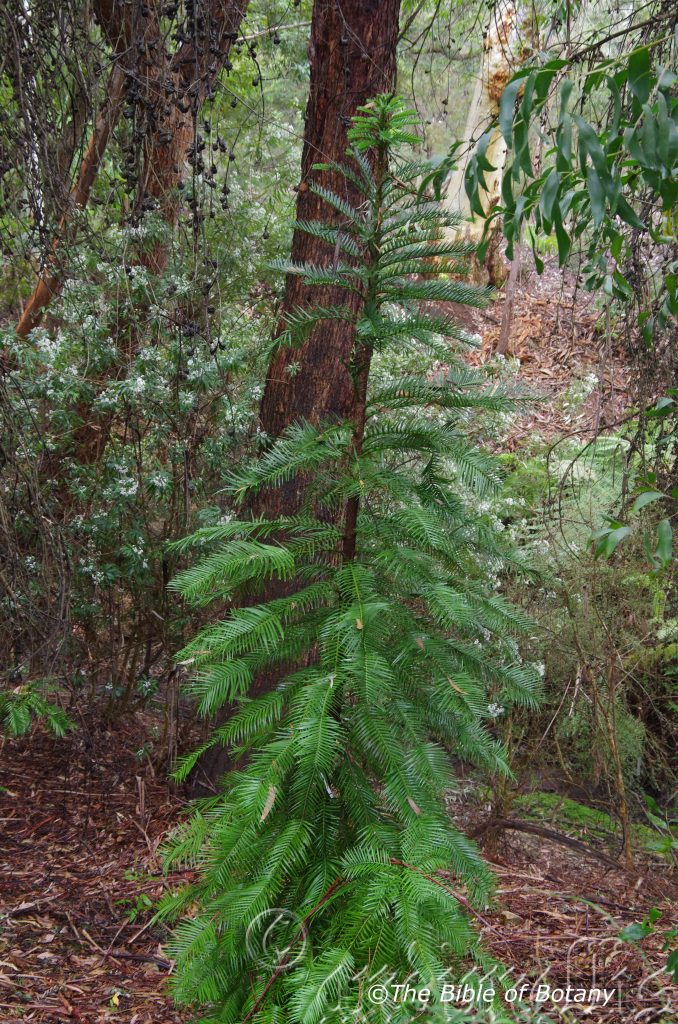
National Botanic Gardens Canberra ACT.

National Botanic Gardens Canberra ACT.
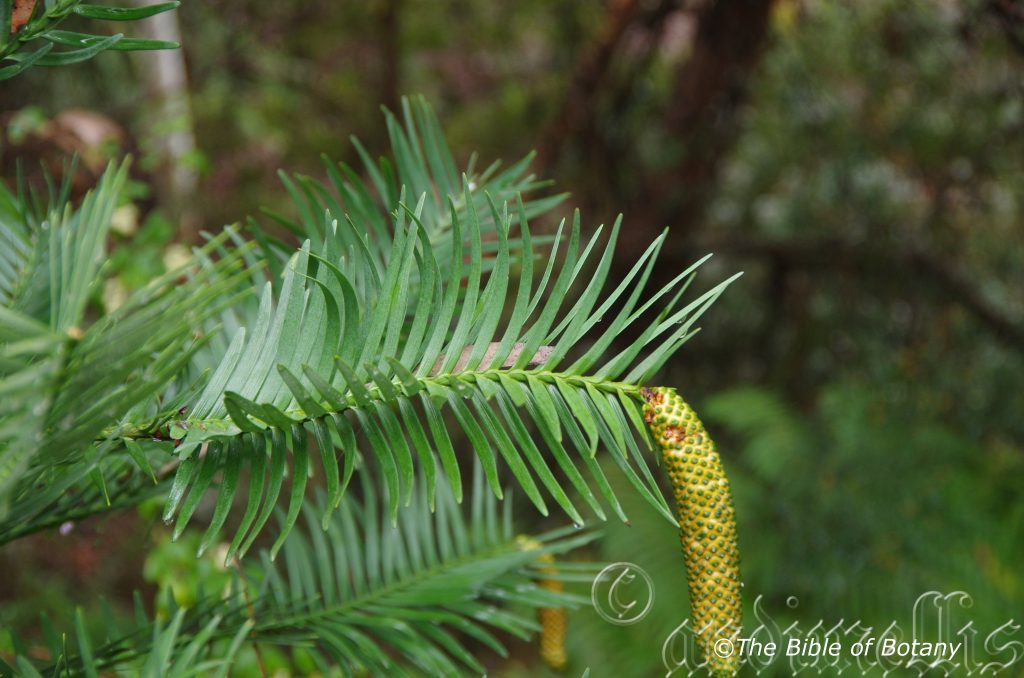
National Botanic Gardens Canberra ACT.
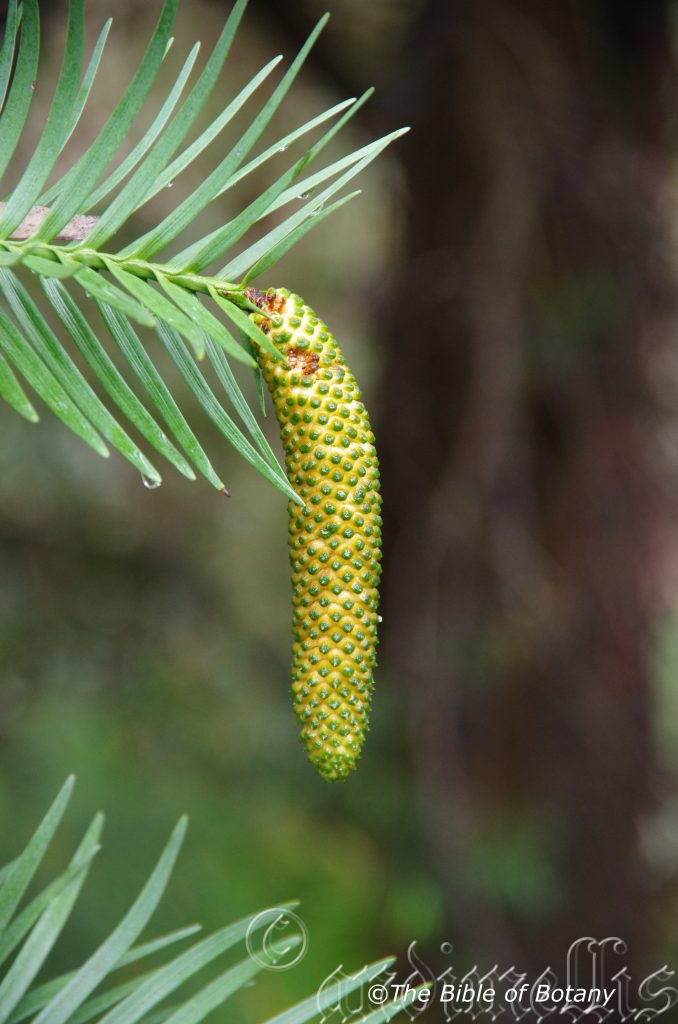
National Botanic Gardens Canberra ACT.
Wollemia nobilis
Classification:
Unranked: Pinophyta
Class: Pinopsida
Order: Pinales
Family: Araucariaceae
Genus: Is named in honour of David Nobil, who is a Ranger at Office of Environment and Heritage and who discovered the plants in 1994.
Specie: Is named in honour of David Nobil, who is a Ranger at Office of Environment and Heritage and who discovered the plants in 1994.
Sub specie:
Common Name: Wollemi Pine.
Distribution:
Wollemia nobilis is restricted to around 100 trees in the Wollemi National Park within the Blue Mountains in central eastern New South Wales.
https://avh.ala.org.au/occurrences/search?taxa=Wollemia+nobilis#tab_mapView
Habitat Aspect Climate:
Wollemia nobilis prefers dense shade to full sun. It grows as an emergent plant above warm temperate coachwood and sassafras rainforest, in a deep sheltered gorge. The altitude ranges from 280 meters ASL to 330 meters ASL.
The temperatures range from 4 degrees in August to 36 degrees in January.
The rainfall ranges from lows of 750mm to 1000mm average per annum.
Soil Requirements:
Wollemia nobilis prefers better quality sandy loams to gravelly light clays. The soils are usually derived from decomposed sandstone. The soils pH. ranges from 5pH to 6pH. It does not tolerate water logged soils. Non saline soils to low saline soils are tolerated.
Height & Spread:
Wild Plants: 25m to 40m by 10m to 12m.
Characteristics:
Wollemia nobilis has a tall, erect, bark densely covered with dark brown nodules or tubercles. The trunks can reach 1 meter in diameter. The branches are rusty-brown to reddish-brown. The leafy stems are deep green and glabrous.
The narrow triangular, sessile leaves on the leading shoots are arranged in 5 to 8 spiral rows and measure 3mm to 10mm in length. The intermediate leaves are linear, are arranged in 4 spiral rows and measure 20mm to 80mm in length by 2mm to 5mm in width. The bases are semi clasping, while the apexes are tapering obtuse or acute. The concolourous or discolourous laminas are deep grass-green, semi glossy to glossy and glabrous on the upper laminas, while the lower laminas are similar or slightly glaucous. The leaf margins are entire while the laminas are flat and curve slightly upwards on the apical half. The parallel veins are barely visible on the upper laminas.
The male long, narrow, cylindrical cones measure 60mm to 110mm in length by 16mm to 20mm in diameter. The yellow cones have green nipple like scales and turn brown before being discarded.
The female globose cones measure 50mm to 80mm in length by 50mm to 80mm in diameter. The cones are covered in long protruding triangular scales. The green cones turn reddish-brown when ripe.
The pale brown seeds measure 4mm to 6mm in diameter including the wing. The cones first appear in September.
Wildlife:
Wollemia nobilis’s do not appear to have any predators.
Cultivation:
Wollemia nobilis is a magnificent large tree that can be grown in association with other dry rainforest species in larger gardens and parks. It is ideal at the edge of a rainforest or deep in the center of the rainforest. In cultivation it will probably grow from 30 meters to 40 meters in height by 8 meters to 14 meters in diameter when grown in the open or taller and narrower if grown closer together as a rainforest tree.
It grows exceptionally well on most sandy soils where deep leaf litter keeps the soil cool and moisture at an even level. If these requirements are met it can cope with temperatures as low as minus 5 degrees and up to 40 degrees. It is moderately drought resistant once established.
Add to the above, if it is given an adequate supply of water and a little native fertilizer on a regular basis the plants should respond with good flowering and fruit over a long period.
Propagation:
Seeds: Seeds of Wollemia nobilis can be removed easily from the ripe ones.
Sow fresh seeds directly into a seed raising mix, keeping them moist not wet. Do not over water as the seeds will rot off before germination takes place. Place the trays in a cool shaded area with 50mm shade cloth in the bush house. When the seedlings are 20mm to 25mm tall, prick them out and plant them into 50mm native tubes using a good organic mix.
As the seedlings roots reach the bottom of the tubes plant them out into their permanent position. Do not delay as some set back will occur until the new roots emerge.
Fertilize using Seaweed, fish emulsion or organic chicken pellets soaked in water and apply the liquid on an alternate basis. Fertilize every 2 months until the plants are well established then on an annual basis in September or March to maintain better health, vitality and flowering.
Further Comments from Readers:
“Hi reader, it seems you use The Bible of Botany a lot. That’s great as we have great pleasure in bringing it to you! It’s a little awkward for us to ask, but our first aim is to purchase land approximately 1,600 hectares to link several parcels of N.P. into one at The Pinnacles NSW Australia, but we need your help. We’re not salespeople. We’re amateur botanists who have dedicated over 30 years to saving the environment in a practical way. We depend on donations to reach our goal. If you donate just $5, the price of your coffee this Sunday, We can help to keep the planet alive in a real way and continue to bring you regular updates and features on Australian plants all in one Botanical Bible. Any support is greatly appreciated. Thank you.”
In the spirit of reconciliation we acknowledge the Bundjalung, Gumbaynggirr and Yaegl and all aboriginal nations throughout Australia and their connections to land, sea and community. We pay our respect to their Elders past, present and future for the pleasures we have gained.
Woollsia pungens
Classification:
Unranked: Eudicots
Class: Asterids
Order: Ericales
Family: Epacridaceae
Subfamily: Styphelioideaeeae
Tribe: Epacrideae
Genus: Is named in honour of the Reverend William Wools; 1814-1893, who was a clergyman and botanist.
Specie: From Pungens, which is Latin for sharp or piercing. It usually refers to leaves, which have a sharp acrid smell or taste.
Sub specie:
Common Name:
Distribution:
Woollsia pungens is found south from Fraser Island in south eastern coastal Queensland to Pigeon Mountain in south eastern New South Wales. It is mainly found on and east of the Great Dividing Range to the coast except for a few isolated populations near Binna Burra, Narrabri and further north near Mackay and Hughendon.
https://avh.ala.org.au/occurrences/search?taxa=Woollsia+pungens#tab_mapView
Habitat Aspect Climate:
Woollsia pungens prefer medium shade to full sun. It grows in dry sclerophyll forest, mountain heaths or coastal heaths on the back dunes. The altitude ranges from 5 meters ASL to 1050 meters ASL.
The temperatures range from minus 3 degrees in August to 39 degrees in February.
The rainfall ranges from lows of 500mm to 2000mm average per annum.
Soil Requirements:
Woollsia pungens prefer coarse sands, fines sands or light fatty clays. The soils are usually derived from better quality sandstones, or accumulated peaty beach sands or rarely granites or basalts. The soils pH. ranges from 4.5pH to 7.5pH. It does not tolerate water logged soils. Non saline soils to moderately saline soils are tolerated.
Height & Spread:
Wild Plants: 0.2m to 2m by 0.5m to 1.2m.
Characteristics:
Woollsia pungens grows as an erect shrub with pale green to mid green stems. The stems are sparsely to moderately covered in bluish-grey pubescent hairs.
The crowded, coriaceous, ovate to subulate leaves are measure 3.5mm to 12mm in length by 1.6mm to 6.5mm in width. The pale green to mid green petiole is sparsely to moderately covered in bluish-grey pubescent hairs and measure 0mm to 1mm in length. The bases are rounded to cordate while the apexes are long acuminate and with a pungent mucronate tip measuring 1mm to 2mm in length. The concolourous laminas are mid grass-green to mid green, dull to semi glossy and glabrous or sparsely covered in pale bluish-grey sericeous hairs especially closer to the mid vein on the upper laminas while the lower laminas are sparsely to moderately covered in pale bluish-grey sericeous hairs. The laminas strongly recurve upwards from the mid vein to the margins especially on the basal half and decurve strongly on the apical half. The margins are entire. The mid vein and 2 to 4 parallel lateral veins are slightly prominent on the lower laminas while the mid vein is visible from the upper laminas.
The inflorescences are born singularly from the leaf axils. The ovate to triangular outer bracts’ apexes are obtuse-acute while the inner bracts are longer and acute. The cream to pale creamy-yellow bracts margins are sparsely covered in white ciliate hairs.
The 5 cream to pale creamy-yellow sepals have acute apexes and measure 8mm to 10mm in length. The white to mid pink or white and mid pink corolla tubes and lobes may appear on the same plant or even on the same branch. The tube measures 7mm to 14mm in length. The obtuse to broad acute apexes have an obtuse or acute mucronate tip. The divaricate, contorted lobes margins are undulated to slightly crisped. The rhombic lobes measure 4mm to 6mm in length by 3.5mm to 5.5mm in width.
The white filaments are inserted and are attached to the style at about the middle. The filaments measure 1.8mm to 2.5mm in length. The anthers are creamy-yellow.
The white or pink to deep red style and stigma are glabrous while the ovary is green. The pistil measures 9mm to 17mm in length. The sweetly scented flowers appear throughout the year with a peak from late October through to November.
The fruits are long, narrow cylindrical capsules. The capsules measure 5mm to 7mm in length by 2.5mm to 3mm in diameter.
Wildlife:
Woollsia pungens’s flowers are sought by many small honey eating butterflies.
Cultivation:
Woollsia pungens is a beautiful small to medium shrub that should be grown in association with other dune and semi-arid plants. It is very good for deterring dogs, cats and unwelcomed visitors to the garden yet supports many small birds with a safe habitat. In cultivation it grows from 1.5 meters to 1.8 meters in height by 1.5 meters to 2 meters in diameter when grown in the open.
It grows exceptionally well on lighter soils where deep leaf litter keeps the soil cool and moisture at an even level. If these requirements are met they can cope with temperatures as low as minus 2 degrees and up to 40 degrees. It is moderately drought resistant once established but once their thresh hold is reached will turn up their toes very quickly. This is also the case in areas where the soil remains wet for prolonged periods.
It is ideal for along driveways, English style gardens, bush gardens, heath gardens and large rockeries. Add to the above, if it is given an adequate supply of water on well drained, sunny locations and a little native fertilizer on a regular basis the plants will respond with good flowering throughout the year.
Woollsia pungens would make outstanding contribution to a drier heath garden. Here they can be used as the taller growing plant scattered throughout the heath scene. When you design a flat heath garden which it is well suited don’t use contours to display the plants as heath lands are almost always flat or have a slight rise. Plants must be planted close together and be short so you can see over the tallest ones with the exception of one or two plants at the most. These will be feature plants. The idea is to achieve a feeling of expansive flatness. This can be achieved with using the green linear leaves and having them contrasting with finer pale green or soft grey to glaucous coloured foliages. Use a lot of procumbent or small shrubs like Crowea exalta, Hibbertia procumbens, Hibbertia asera, Oleria canescens or Phebalium squamulosum or if the garden is further inland try some of the smaller Verticordia specie or even Willdampier Formosa in drier areas inland. Mix them with other smaller shrubs so none of them dominate the scene but blend in to give a mosaic of foliage colours that you oversee. Actinotis helianthi, Grevillea thelemanniana or Hovea australis all have great contrasting foliages with different growth habits.
It would make a reasonably good prickly hedge row when planted close together. For mass plantings plant them at 0.8 meter to 1 meter centers. Another interesting mix would be to interplant it with one of the many species of Westringia. If Westringia are used plant them at 500mm away from the Westringia.
Propagation:
Seeds: The seeds of Woollsia pungens can be removed easily from the capsules by placing in a small paper bag in a warm dry position for about a week. Seed germination is erratic and unreliable.
Sow fresh seeds directly into a seed raising mix, keeping them moist not wet. Do not over water as the seeds will rot off before germination takes place. Place the trays in a cool shaded area with 50mm shade cloth in the bush house.
When the seedlings are 20mm to 25mm tall, prick them out and plant them into 50mm native tubes using a good organic mix.
As the seedlings roots reach the bottom of the tubes plant them out into their permanent position. Do not delay as set back will occur until the new roots emerge.
Cuttings: UnfortunatelyWoollsia pungens cuttings not easy to strike. Use 100mm to 150mm long semi hardwood to hardwood cuttings from the present season’s growth. Take them in warmer months of the year. Remove half the leaves from the bottom section being careful not to tear the bark.
1 Prepare the cutting mix by adding two thirds sharp clean river sand, one third peat or one third perlite. These ingredients must be sterilized,
2 Select good material from non diseased plants,
3 Select semi green stems for cuttings,
4 Place the cutting on a flat, hard surface, and make a clean cut down one side of the cutting at the base for 10mm with a sharp sterile knife or razor blade. – This scarification of the node will increase the chances of roots emerging from this spot. Now remove all but one or two the leaves, leaving the apex leaves intact. If the leaves are very large in proportion to the stem, cut off the apical halves.
5 Fill a saucer with water, and place a little medium strength rooting hormone into another container like a milk bottle top. Dip the node end of the cutting into the water and then into the rooting hormone. Tap off any excess hormone,
6 Use a small dipple stick or old pencil to poke a hole into the soilless potting mix. Ensure the hole is slightly larger than the stem diameter and be careful not to wipe the rooting hormone off the cuttings base. Place 2 to 4 cuttings in each of the 50mm native tubes,
7 I like to place the tubes in bucket with holes drilled in the bottom to allow excess water to drain out. A plastic bag that fits over the bucket is ideal to help maintain temperature and moisture. Place in a semi shaded, warm position like under 50mm shade cloth.
8 When the cuttings have struck, open the bag to allow air circulation for a few days to a week,
9 Once hardened off remove the cuttings from the bag and allow to further hardening for a few more days to a week,
10 Transplant into a good potting mix to grow on.
Fertilize using seaweed, fish emulsion or organic chicken pellets soaked in water on an alternate basis. Fertilize every two months until the plants are established then twice annually in early September or March to maintain health, vitality and better flowering.
Further Comments from Readers:
“Hi reader, it seems you use The Bible of Botany a lot. That’s great as we have great pleasure in bringing it to you! It’s a little awkward for us to ask, but our first aim is to purchase land approximately 1,600 hectares to link several parcels of N.P. into one at The Pinnacles NSW Australia, but we need your help. We’re not salespeople. We’re amateur botanists who have dedicated over 30 years to saving the environment in a practical way. We depend on donations to reach our goal. If you donate just $5, the price of your coffee this Sunday, We can help to keep the planet alive in a real way and continue to bring you regular updates and features on Australian plants all in one Botanical Bible. Any support is greatly appreciated. Thank you.”
In the spirit of reconciliation we acknowledge the Bundjalung, Gumbaynggirr and Yaegl and all aboriginal nations throughout Australia and their connections to land, sea and community. We pay our respect to their Elders past, present and future for the pleasures we have gained.
Wrightia laevis
Classification:
Unranked: Eudicots
Unranked: Asterids
Order: Gentianales
Family: Apocynaceae
Subfamily: Apocynoideae
Tribe: Wrightieae
Genus: Is named in honour of William Wright; 1735-1819, who was a Scottish physician, botanist and explorer, especially around Jamaican, West Indies where he described some 750 plants.
Specie: From Elaphrós/Elakhús, which is Ancient Greek or Levis, which is Latin for swift, light weight, slick or smooth. It refers to structures or organs, which are very smooth or slick.
Sub specie:
Common Name:
Distribution:
Wrightia laevis is restricted to 2 disjunct populations on Cape York Peninsular in far north Queensland from the Iron Range National Park to Coen and Hope Vale to Tully.
it is also located in Cambodia South eastern China, Indonesia, Laos, Malaysia, Myanmar, New Guinee, Papua, Philippines, Thailand and Vietnam.
https://avh.ala.org.au/occurrences/search?taxa=Wrightia+laevis#tab_mapView
Habitat Aspect Climate:
Wrightia laevis prefers dense shade to full sun. It grows adjacent to and in well developed, moist tropical rainforests, dry tropical rainforests, monsoonal vine forests or lowland alluvial rainforests. The altitude ranges from 5 meters ASL to 300 meters ASL.
The temperatures range from 10 degrees in August to 36 degrees in January.
The rainfall ranges from lows of 1000mm to 3200mm average per annum.
Soil Requirements:
Wrightia laevis prefers better quality sandy loams, gravelly light clays or medium clays. The soils are usually derived from decomposed brown basalts, black basalts, granite or sandstone or heavier loams on river flats. The soils pH. ranges from 5pH to 7pH. It does not tolerate water logged soils. Non saline soils to moderately saline soils are tolerated.
Height & Spread:
Wild Plants: 25m to 40m by 10m to 12m.
Characteristics:
The trunk of Wrightia laevis is tall, straight, deep grey, glabrous and slightly flanged on older trees. The branches and branchlets are grey-brown turning brown or red-brown where the leaves occur. The branchlets are glabrous to sparsely covered in lighter coloured lenticels. The bark, twigs and petioles exudes a white exudant when damaged.
The opposite, oblong, to narrow elliptical or rarely ovate leaves measure 70mm to 180mm in length by 30mm to 80mm in width. The petiole measures 5mm to 9mm in length. The bases are cuneate to broadly cuneate while the apexes are acuminate to acuminate-caudate. The concolourous laminas are deep grass-green, semi glossy to glossy and glabrous. The leaf margins are entire while the laminas are flat to slightly recurve from the mid vein to the margins and decurve close to the apex. The mid vein and 10 to 22 lateral veins are slightly prominent on the lower laminas and distinctly visible from the upper laminas.
The inflorescences are born on cymes from the leaf upper axils. The grass-green peduncles, rachises and pedicels are glabrous while the pedicels maybe covered in white puberulent hairs. The peduncles measure 8mm to 11mm in length while the rachises measure 40mm to 50mm in length and the pedicels measure 1mm to 1.5mm in length. The 5 pale green sepals are erect, glabrous externally, covered in small glands internally and covered in white ciliate hairs. The sepals measure 1mm to 1.8mm in length. The pale yellow corolla tubes and lobes are covered in white puberulent hairs. The corollas measure 2mm to 3mm in length while the obovate, lanceolate to spathulate lobes measure 6mm to 13.3mm in length. The 5 alternate petals are divaricate; deeply divide into 3 to 5 linear lobes and measure 5mm to 6.5mm in length.
The 5 creamy yellow filaments are exserted and measure 1mm to 1.5mm in length. The tapering anthers are free and form an inverted conical tube around the style. The creamy yellow anthers measure 5mm to 6mm in length.
The white style and stigma are glabrous while the ovary is green. The pistil measures 4mm to 5mm in length while the ovary measures 1.5mm in length. Wrightia laevis flowers appear from late October through to early February.
The fruits of Wrightia laevis are long, narrow cylindrical follicles. The follicles are glabrous or covered in small white, ovate lenticels and measure 250mm to 350mm in length by 20mm to 30mm in diameter. The follicles have a distinct longitudinal furrow down one side. The green capsules turn grey when ripe. The calyx lobes are persistent on the ripe fruit. The seeds are sub linear and measure 15mm to 20mm in length with 30mm to 40mm silky white hairs from one end. The fruit ripen from December through to March.
Wildlife:
Wrightia laevis’s do not appear to have any predators.
Cultivation:
Wrightia laevis is a magnificent small tree that should be grown in association with other rainforest specie. It is ideal at the edge of a rainforest or deep in the center of the rainforest. It also makes a great park tree offering quick growth, and good shade. In cultivation it will grow from 6 meters to 20 meters in height by 8 meters to 10 meters in diameter when grown in the open or taller and narrower if grown closer together as a rainforest tree.
It grows exceptionally well on most soils where deep leaf litter keeps the soil cool and moisture at an even level. If these requirements are met they can cope with temperatures as low as 5 degrees and up to 36 degrees and should be tried further south probably to Coffs Harbour. It is moderately drought resistant once established.
In southern China it is a favoured tree for planting around malls and avenues because of its unobtrusive root system small leaf drop, dependability on shallow soils within city constraints with the added value of the flowers emitting a pleasant fragrance.
Add to the above, if it is given an adequate supply of water and a little native fertilizer on a regular basis the plants should respond with good flowering and fruit over a long period.
It often reaches its full potential in just 12 to 15 years and flower from the seventh or eighth year from seed.
This tree could be used a s bonsai plant as I have seen some trees in the forest that have grown in some very difficult conditions take on some weird shapes.
Propagation:
Seeds: Seeds of Wrightia laevis can be removed easily from the ripe capsules.
Sow fresh seeds directly into a seed raising mix, keeping them moist not wet. Do not over water as the seeds will rot off before germination takes place. Place the trays in a cool shaded area with 50mm shade cloth in the bush house. When the seedlings are 20mm to 25mm tall, prick them out and plant them into 50mm native tubes using a good organic mix.
As the seedlings roots reach the bottom of the tubes plant them out into their permanent position. Do not delay.
Fertilize using Seaweed, fish emulsion or organic chicken pellets soaked in water and apply the liquid on an alternate basis. Fertilize every 2 months until the plants are well established then on an annual basis in September or March to maintain better health, vitality and flowering.
Further Comments from Readers:
“Hi reader, it seems you use The Bible of Botany a lot. That’s great as we have great pleasure in bringing it to you! It’s a little awkward for us to ask, but our first aim is to purchase land approximately 1,600 hectares to link several parcels of N.P. into one at The Pinnacles NSW Australia, but we need your help. We’re not salespeople. We’re amateur botanists who have dedicated over 30 years to saving the environment in a practical way. We depend on donations to reach our goal. If you donate just $5, the price of your coffee this Sunday, We can help to keep the planet alive in a real way and continue to bring you regular updates and features on Australian plants all in one Botanical Bible. Any support is greatly appreciated. Thank you.”
In the spirit of reconciliation we acknowledge the Bundjalung, Gumbaynggirr and Yaegl and all aboriginal nations throughout Australia and their connections to land, sea and community. We pay our respect to their Elders past, present and future for the pleasures we have gained.
Wrightia pubescens
Classification:
Unranked: Eudicots
Unranked: Asterids
Order: Gentianales
Family: Apocynaceae
Subfamily: Apocynoideae
Tribe: Wrightieae
Genus: Is named in honour of William Wright; 1735-1819, who was a Scottish physician, botanist and explorer, especially around Jamaican, West Indies where he described some 750 plants.
Specie: From P?b?sc?ns, which is Latin for short, very soft hairs. It refers to structures or organs, which are covered in soft, white or pale grey hairs.
Sub specie: Wrightia pubescens subsp. pencillata. From Peniculatum, which is Latin for an artist’s fine paint brush or tuft of fine hairs. It refers to the individual flowers or flower spikes, which have hairs like those found on a fine paint brush.
Sub specie: Wrightia pubescens subsp. pubescens. From P?b?sc?ns, which is Latin for short, very soft hairs. It refers to structures or organs, which are covered in soft, white or pale grey hairs.
Common Name:
Distribution:
Wrightia pubescens subsp. pencillata is found on all the Torres Strait Island south to Blackwood National Park in far north eastern Queensland.
Wrightia pubescens subsp. pubescens is found east from the Sale River in far north west, Western Australia to Warangaiyu Lagoon on Elcho Is in far north eastern Northern Territory. There are several disjunct populations in Far north Queensland on the tip of Cape York Peninsular and just north of the Palmer River.
It also is found in Cambodia, China south east and Central, Hainan, Indonesia, Jawa, Laos, Lesser Sunda Islands, Malaya, Maluku, New Guinea, Papua, Philippines, Sulawesi, Sumatera, Thailand and Vietnam.
https://avh.ala.org.au/occurrences/search?taxa=Wrightia+pubescens#tab_mapView
Habitat Aspect Climate:
Wrightia pubescens prefers light dappled shade to full sun. It grows adjacent to and in moist vine forests or monsoonal rainforests. The altitude ranges from 5 meters ASL to 300 meters ASL for Wrightia pubescens subsp. pubescens and to 600 meters ASL for Wrightia pubescens subsp. pencillata.
The temperatures range from 10 degrees in August to 36 degrees in January.
The rainfall ranges from lows of 900mm to 3000mm average per annum.
Soil Requirements:
Wrightia pubescens prefers sandy loams through to gravelly or sandy medium clays. The soils are usually derived from better quality brown and black basalts, granite and sandstone or accumulated calcareous sands behind the frontal dunes. The soils pH. ranges from 5.5pH to 7pH. It does not tolerate water logged soils. Non saline soils to moderately saline soils are tolerated.
Height & Spread:
Wild Plants: 4m to 14m by 4m to 6m.
Characteristics:
The trunk of Wrightia pubescens is tall, straight, deep grey, glabrous and slightly flanged on older trees. The branches and branchlets are grey-brown turning brown or red-brown where the leaves occur. The branchlets are sparsely covered in white ovoidal lenticels. The bark, twigs and petioles exude copious quantities of white exudant when damaged.
The opposite, oblong, narrowly oblong-elliptical leaves measure 80mm to 150mm in length by 40mm to 65mm in width. The base is broadly cuneate to rounded while the apex is broadly acuminate. The concolourous laminas are deep grass-green, dull and sparsely or at times moderately covered in white to pale grey pubescent hairs. The leaf margins are entire while the laminas are flat to slightly recurve from the mid vein to the margins. The mid vein and 18 to 22 lateral veins are slightly prominent on the lower laminas and faintly visible from the upper laminas.
The inflorescences are born on cymes from the leaf upper axils. The grass-green peduncles, rachises and pedicels are covered in white pulverulent hairs. The peduncles measure 20mm to 30mm in length while the rachises measure 10mm to 20mm in length and the pedicels measure 6mm to 13mm in length. The 5 pale green sepals are erect, ciliate, glabrous to densely covered in pubescent hairs externally and with 1 large ovate gland on the inner surface. The sepals measure 1.2mm to 2.2mm in length.
The white to pale yellow campanulate corolla tubes are restricted at the orifice while the 5 corolla lobes are narrowly obovate to obovate. The corollas are covered in white puberulent hairs. The corollas measure 5mm to 6.5mm in length while the lobes measure 10mm to 20mm in length. The 5 alternate petals are linear lobes and measure 5mm to 7.5mm in length.
The 5 white to creamy yellow filaments are exserted and measure 0.7mm to 0.9mm in length. The tapering anthers are free and form an inverted conical tube around the style. The creamy yellow anthers measure 5.5mm to 6.5mm in length.
The white to pale cream style and stigma are glabrous while the ovary is green. The pistil measures 6.5mm to 7.5mm in length while the ovary measures 1.5mm in length. Wrightia pubescens’ flowers appear from late October through to early February.
Confusing Subspecie Varieties:
Wrightia pubescens subsp. pencillata’s stipules are inconspicuous. The petiole measures 4mm to 8mm in length. The fruits are long, narrow cylindrical follicles. The follicles are glabrous and covered in small white, ovate lenticels and measure 200mm to 350mm in length by 5mm to 7mm in diameter. The follicles have a distinct longitudinal furrow down one side. The green capsules turn grey when ripe. The calyx lobes are persistent on the ripe fruit. The seeds are sub linear and measure 15mm to 20mm in length with 30mm to 40mm silky white hairs from one end.
Wrightia pubescens subsp. pubescens’s stipules are in the form of stiff hispid hairs tightly packed between the petiole and the stem. The petiole measures 4mm to 9mm in length. The fruits are long, narrow cylindrical follicles. The follicles are glabrous and covered in small white, ovate lenticels and measure 200mm to 300mm in length by 5mm to 7mm in diameter. The follicles have a distinct longitudinal furrow down one side. The green capsules turn grey when ripe. The calyx lobes are persistent on the ripe fruit. The seeds are sub linear and measure 10mm to 13mm in length with 30mm to 35mm silky white hairs from one end.
Wildlife:
Wrightia pubescens do not appear to have any predators.
Cultivation:
Wrightia pubescens is a magnificent small tree that should be grown in association with other rainforest specie. It is an ideal at the edge of a dry rainforest garden so that It is ideal at the edge of a rainforest or deep in the center of the rainforest so that the sweetly scented flowers can be appreciated, or deep in the center of a rainforest garden where the scented will linger below the foliage. It also makes a great park trees offering quick growth, and good shade. In cultivation it grows from 6 meters to 10 meters in height by 6 meters to 8 meters in diameter when grown in the open or taller and narrower if grown closer together as a rainforest tree.
It grows exceptionally well on most soils where deep leaf litter keeps the soil cool and moisture at an even level. If these requirements are met they can cope with temperatures as low as 5 degrees and up to 36 degrees and should be tried further south probably to Coffs Harbour. It is moderately drought resistant once established.
In southern China it is a favoured tree for planting around malls and avenues because of its unobtrusive root system small leaf drop, dependability on shallow soils within city constraints with the added value of the flowers emitting a pleasant fragrance.
Add to the above, if it is given an adequate supply of water and a little native fertilizer on a regular basis the plants should respond with good flowering and fruit over a long period.
It often reaches its full potential in just 12 to 15 years and flower from the seventh or eighth year from seed.
This tree could be used as a bonsai plant as I have seen some trees in the forest that have grown in some very difficult conditions take on some weird shapes.
Propagation:
Seeds: The seeds of Wrightia pubescens can be removed easily from the ripe capsules.
Sow fresh seeds directly into a seed raising mix, keeping them moist not wet. Do not over water as the seeds will rot off before germination takes place. Place the trays in a cool shaded area with 50mm shade cloth in the bush house. When the seedlings are 20 to 25 mm tall, prick them out and plant them into 50mm native tubes using a good organic mix.
As the seedlings roots reach the bottom of the tubes plant them out into their permanent position. Do not delay.
Fertilize using Seaweed, fish emulsion or organic chicken pellets soaked in water and apply the liquid on an alternate basis. Fertilize every 2 months until the plants are well established then on an annual basis in September or March to maintain better health, vitality and flowering.
Further Comments from Readers:
“Hi reader, it seems you use The Bible of Botany a lot. That’s great as we have great pleasure in bringing it to you! It’s a little awkward for us to ask, but our first aim is to purchase land approximately 1,600 hectares to link several parcels of N.P. into one at The Pinnacles NSW Australia, but we need your help. We’re not salespeople. We’re amateur botanists who have dedicated over 30 years to saving the environment in a practical way. We depend on donations to reach our goal. If you donate just $5, the price of your coffee this Sunday, We can help to keep the planet alive in a real way and continue to bring you regular updates and features on Australian plants all in one Botanical Bible. Any support is greatly appreciated. Thank you.”
In the spirit of reconciliation we acknowledge the Bundjalung, Gumbaynggirr and Yaegl and all aboriginal nations throughout Australia and their connections to land, sea and community. We pay our respect to their Elders past, present and future for the pleasures we have gained.
Wrightia saligna
Classification:
Unranked: Eudicots
Unranked: Asterids
Order: Gentianales
Family: Apocynaceae
Subfamily: Apocynoideae
Tribe: Wrightieae
Genus: Is named in honour of William Wright; 1735-1819, who was a Scottish physician, botanist and explorer, especially around Jamaican, West Indies where he described some 750 plants.
Specie: From Salix, which is Latin for the weeping willow. It refers to being like the weeping willow.
Sub specie:
Common Name: Weeping Wrightia or Milk Bush.
Distribution:
Wrightia saligna is found in several disjunct populations north of a line from near Broome and the Kimberley Range on the north west coast of Western Australia to Proserpine in far north east Queensland. It may be far more widespread than has been reported. I am fairly sure but cannot be positive that I have seen Wilkiea saligna near Gunpowder back in the mid 1970’s.
https://avh.ala.org.au/occurrences/search?taxa=Wrightia+saligna#tab_mapView
Habitat Aspect Climate:
Wrightia saligna prefers light dappled shade to full sun. It grows in sparse, open woodlands and occasionally monsoonal forests. The altitude ranges from 5 meters ASL to 900 meters ASL.
The temperatures range from 5 degrees in August to 36 degrees in January.
The rainfall ranges from lows of 400mm to 3000mm average per annum.
Soil Requirements:
Wrightia saligna prefers skeletal, sandy loams to medium clays on rocky sites close to the parent rocks. The soils are derived from better quality red or grey sandstones or at times basalts, metamorphic rocks or granites. The soils pH. ranges from 5pH to 7pH. It does not tolerate water logged soils. Non saline soils to moderately saline soils are tolerated.
Height & Spread:
Wild Plants: 2m to 6m by 2m to 6m.
Characteristics:
The trunk off Wrightia saligna is crooked or straight, brown to red-brown, glabrous and or slightly scabrous. The branchlets are red-brown turning deep grass-green well before where the leaves occur. The branchlets are glabrous while the bark, twigs and petioles exudes a white exudant when damaged.
The opposite, narrowly lanceolate to linear falcate leaves measure 70mm to 120mm in length by 4mm to 15mm in width. The base is narrow tapering while the apex is narrow tapering. The concolourous laminas are deep grass-green, dull and glabrous. The leaf margins are entire while the laminas are flat. The mid vein is slightly prominent on the lower laminas while the 24 to 36 lateral veins are faintly visible from the both laminas. The minute stipules are inconspicuous to the naked eye. The petiole measures 1mm to 3mm in length.
The inflorescences are born on cymes from the leaf upper axils. The grass-green peduncles, rachises and pedicels are glabrous to covered in white pubescent hairs. The peduncles measure 8mm to 12mm in length while the rachises measure 8mm to 12mm in length and the pedicels measure 6mm to 12mm in length.
The 5 pale green sepals are erect, sparsely to moderately covered in pubescent hairs externally and are glabrous internally. The sepals measure 1mm to 1.6mm in length. The pale yellow to yellow corolla tubes and lobes are glabrous. The corollas measure 2mm to 3.5mm in length while the oblong lobes apexes are obtuse and measure 4mm to 7mm in length. The 5 alternate petals are erect and form a tube around the anthers. The petals measure 3.5mm to 5mm in length.
The 5 yellow filaments are inserted in the petals and measure 1mm to 1.5mm in length. The tapering anthers are free and form an inverted conical tube around the style. The anthers are covered in puberulent hairs on the back surface. The yellow anthers measure 3.5mm to 4mm in length.
The yellow style and stigma are glabrous while the ovary is green. There is a ring of hirtellous hairs between the apex of the style and the stigma. The pistil measures 2mm to 2.5mm in length while the ovary measures 1.5mm in length. Wrightia saligna’ flowers appear from November through to February or to April in favourable seasons.
The fruits are long, narrow cylindrical follicles which hang vertically down. The follicles are glabrous and sparsely covered in small brown lenticels and measure 100mm to 200mm in length by 6mm to 9mm in diameter. The follicles have a distinct longitudinal furrow down one side. The green capsules turn olive-brown to olive-green when ripe. The calyx lobes are persistent on the ripe fruit. The seeds are linear and measure 10mm to 15mm in length with 20mm to 35mm silky white hairs from one end.
Wildlife:
Wrightia saligna do not appear to have any predators.
Cultivation:
Wrightia saligna is a magnificent small, weeping tree that could be grown in association with other dry rainforest specie or gardens in central Australia with a little added water. It is ideal at the edge of a forest to deep in the center of the rainforest so that the scented flowers can be appreciated. It also make great park trees offering quick growth, and good shade. In cultivation it will grow from 2 meters to 3 meters in height by 3 meters to 4 meters in diameter when grown in the open or taller and narrower if grown closer together as a rainforest tree.
It grows exceptionally well on most soils where deep leaf litter keeps the soil cool and moisture at an even level. If these requirements are met they can cope with temperatures as low as 5 degrees and up to 42 degrees and should be tried further south probably to Coffs Harbour. It is moderately drought resistant once established.
Add to the above, if it is given an adequate supply of water and a little native fertilizer on a regular basis the plants should respond with good flowering and fruit over a long period.
It often reaches its full potential in just 12 to 15 years and flowers from the seventh or eighth year from seed.
This tree could be used as a bonsai plant as I have seen some trees in the forest that have grown in some very difficult conditions take on some weird shapes.
Propagation:
Seeds: Seeds of Wrightia saligna can be removed easily from the ripe capsules.
Sow fresh seeds directly into a seed raising mix, keeping them moist not wet. Do not over water as the seeds will rot off before germination takes place. Place the trays in a cool shaded area with 50mm shade cloth in the bush house. When the seedlings are 20 to 25 mm tall, prick them out and plant them into 50mm native tubes using a good organic mix.
As the seedlings roots reach the bottom of the tubes plant them out into their permanent position. Do not delay.
Fertilize using Seaweed, fish emulsion or organic chicken pellets soaked in water and apply the liquid on an alternate basis. Fertilize every 2 months until the plants are well established then on an annual basis in September or March to maintain better health, vitality and flowering.
Further Comments from Readers:
“Hi reader, it seems you use The Bible of Botany a lot. That’s great as we have great pleasure in bringing it to you! It’s a little awkward for us to ask, but our first aim is to purchase land approximately 1,600 hectares to link several parcels of N.P. into one at The Pinnacles NSW Australia, but we need your help. We’re not salespeople. We’re amateur botanists who have dedicated over 30 years to saving the environment in a practical way. We depend on donations to reach our goal. If you donate just $5, the price of your coffee this Sunday, We can help to keep the planet alive in a real way and continue to bring you regular updates and features on Australian plants all in one Botanical Bible. Any support is greatly appreciated. Thank you.”
In the spirit of reconciliation we acknowledge the Bundjalung, Gumbaynggirr and Yaegl and all aboriginal nations throughout Australia and their connections to land, sea and community. We pay our respect to their Elders past, present and future for the pleasures we have gained.
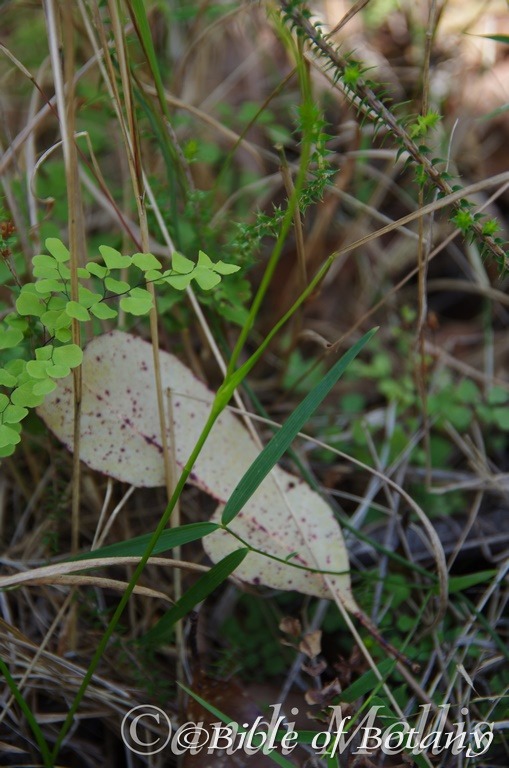
Morgan’s Camp Trail Fortis Creek National Park NSW
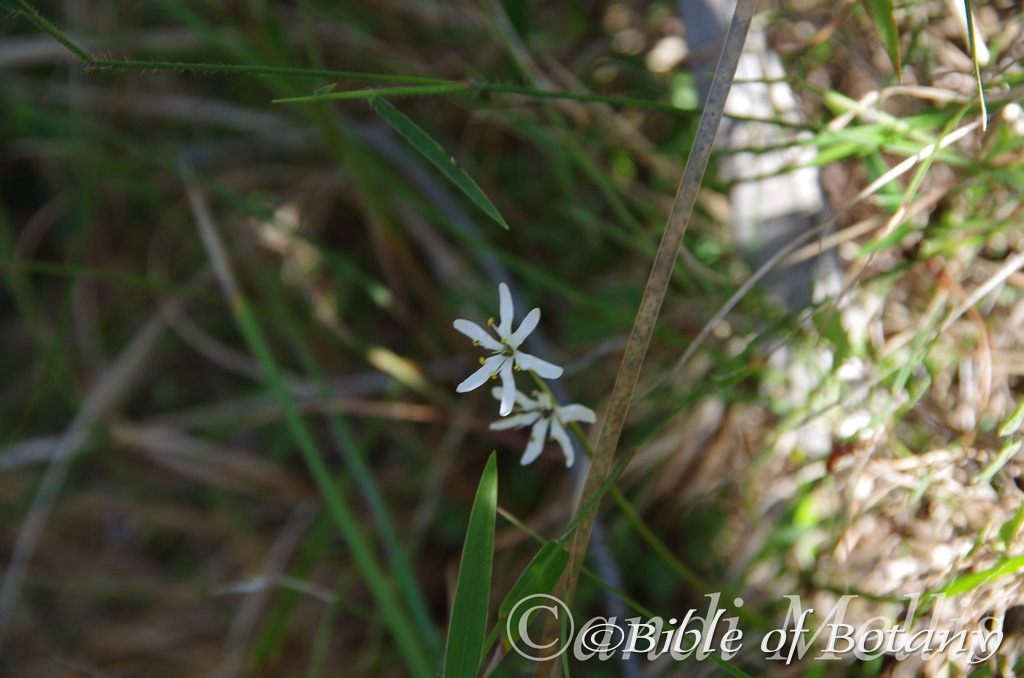
Morgan’s Camp Trail Fortis Creek National Park NSW

Morgan’s Camp Trail Fortis Creek National Park NSW
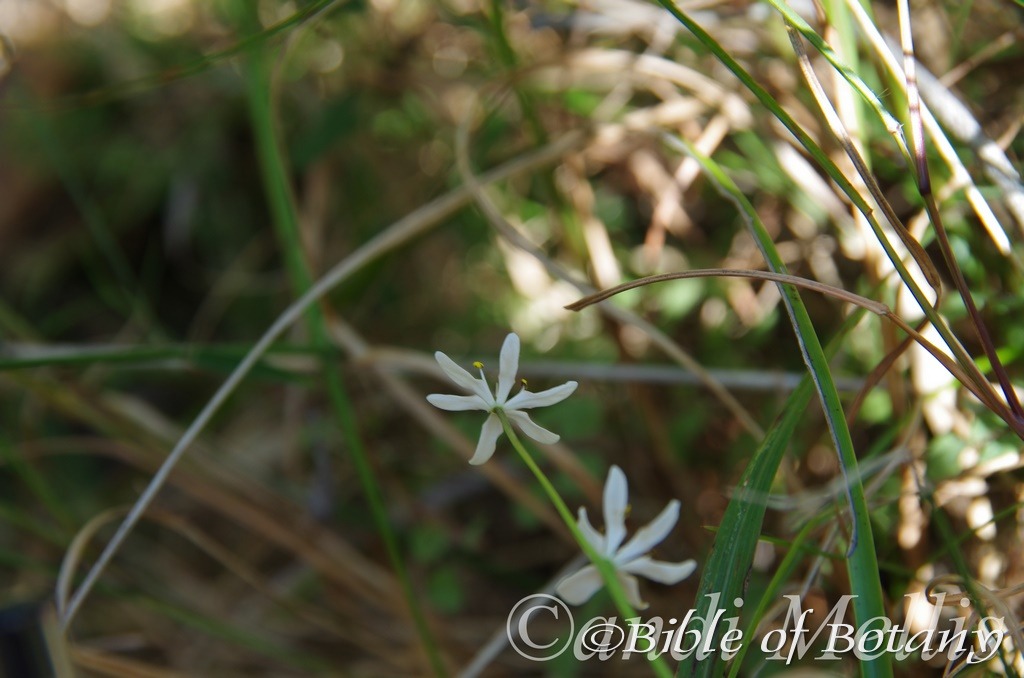
Morgan’s Camp Trail Fortis Creek National Park NSW
Wurmbea biglandulosa
Classification:
Unranked: Monocots
Class:
Order: Liliales
Family: Colchicaceae
Genus: Is named in honour of Friedrich Wilhelm von Wurmb; who was a Batavian merchant and botanist.
Specie: From Bi/Bis, which is Latin for two and Glans, which is Latin for a gland or glands. It refers to plants, which have two distinct types of glands.
Sub specie:
Common Name:
Distribution:
Wurmbea biglandulosa is found east of a line south from the Sunshine Coast in south east Queensland to Tottenham in central New South Wales then south to Mansfield and Tonghi in south eastern coastal Victoria. It is mainly found on the eastern edge of the Western Plains, the Western Slopes, on and east of the Great Dividing Range to the coast.
In South Australia it is found south from Dutchman’s Stern Conservation Park to the Broughton River.
It is also found on Badger Island in Bass Straight.
https://avh.ala.org.au/occurrences/search?taxa=Wurmbea+biglandulosa#tab_mapView
Habitat Aspect Climate:
It prefers light dappled shade to full sun. It grows in moist open forest especially in disturbed grassy places, moist heaths, creek riparian zones or rocky ridges. The altitude ranges from 5 meters ASL to 980 meters ASL.
The temperatures range from minus 5 degrees in August to 36 degrees in January.
The rainfall ranges from lows of 300mm to 2000mm average per annum.
Soil Requirements:
Wurmbea biglandulosa prefers better quality, skeletal, coarse sands, fine sands, sandy loams to light clays or rocky sites close to the parent rocks. The soils are usually derived from decomposed red or grey sandstones or at times black basalts, granites or accumulated beach sands. The soils pH. ranges from 4.5pH to 7pH. It does not tolerate water logged soils. Non saline soils to moderately saline soils are tolerated.
Height & Spread:
Wild Plants: 0.1m to 0.35m by 0.1m to 0.15m.
Characteristics:
It grows as a small tuberous herb. The globose or linear tubers measures 10mm to 16mm in length by 8mm to 11mm in diameter or when linear measures 20mm to 30mm in length by 3mm to 3.5mm in diameter.
The 3 dimorphic disjunct leaves are concolourous. The laminas are deep grass-green, dull and glabrous. The filiform to linear basal leaf bases are caudate and measure 100mm to 180mm in length by 1mm to 2.5mm in width. The apexes are long and tapering.
The filiform to linear middle leaf bases are strongly dilated and measure 80mm to 150mm in length by 1mm to 2.5mm in width and 4mm to 6mm near the base. The apexes are long tapering.
The filiform to linear upper leaf bases are strongly dilated and measure 40mm to 80mm in length by 1mm to 2.5mm in width and 4mm to 6mm near the base. The apexes are acute.
The inflorescences are born on scapes from the tubers. The grass-green scape, rachises and pedicels are glabrous. The scape measures 40mm to 90mm in length while the rachises measure 10mm to 20mm in length and the pedicels measure 3mm to 5mm in length. There are 1 to 6 individual flowers on a scape usually 4 or 5.The flowers are usually all bisexual or at times the lower flowers are bisexual with the upper flowers being male or rarely all the flowers are male.
The 6 white tepals measures 8mm to 10mm in overall length. The 2 nectaries 2 on each tepal are 3mm to 4mm from the base and form a platform on the basal third, decurve at 90 degrees for 1mm to 2mm then bend 90 degrees to again be divaricate to the scape. The upper tepal is slightly raised and is pastel pink or marked pink.
The 6 opposite, white filaments measure 4mm to 6mm in length while the dorsifixed deep maroon anthers measure 1.2mm to 1.8mm in length.
The style is trilobed and deep maroon while the white, filiform stigmas are trifid. The stigmas measure 3mm to 3.5mm in length. The flowers appear from late August to September.
The fruit is a 3 chamber, globose capsule. The capsules are glabrous and measure 4mm to 5.5mm in length by 3.5mm to 5mm in diameter. The capsules turn deep grey when ripe.
Wildlife:
Wurmbea biglandulosa does not appear to have any predators.
Cultivation:
It is a beautiful lilies that should be more widely grown in moist sunny garden situations and rockeries. It is a small lily that can easily be planted in mass to give absolutely fantastic displays, in late winter to early spring once established in mass.
It would make an excellent contribution to a sandy or rocky, terrain rock garden provided there is constant water available or the soil is continuously wet. Here it can be used as the fill in plant, scattered in small groups throughout the rocks or mass planted. When you use it in an area that is strewn with large boulders it is important to have balance. Wurmbea biglandulosa is well suited to such conditions so use contours to display the plants boulder country are almost always rising and falling in contour and have sharp rises. The idea is to achieve a feeling of expansive harshness.
Wurmbea biglandulosa also make outstanding contribution to a moist heath gardens. When you design a flat heath garden where it is well suited don’t use contours to display the plants as heath lands are almost always flat or have a slight rise. Make the path narrow so you have to feel the plants as you walk though the garden bed. This gives an extra dimension which many people forget about when designing heath gardens. Plants must be planted close together and be short so you can see over the tallest ones with the exception of one or two plants at the most. These will be feature plants. The idea is to achieve a feeling of expansive flatness. This can be achieved with using the vertical flower spikes contrasting with finer pale green or deep green coloured foliages. Use a lot of procumbent plants like Carpobrotus edulis, Hibbertia specie except for Hibbertia scandens as it is too vigorous or Melaleuca pearsonii. Mix them with other smaller shrubs so none of them dominate the scene but blend in to give a mosaic of foliage colours that you oversee. Be careful not to overcrowd the scene as Wurmbea umbellata will ultimately succumb to the competition.
Propagation:
Seeds: Sow the seeds in early autumn in the north or in early spring in the south into a seed raising mix covering them with 5mm of mix. Sow the seeds sparingly as about 80mm of seeds will be fertile and will germinate this is normal. Keep the seed trays moist, in an airy space that receives plenty of sunlight as seedlings as they do not like dark conditions. 30mm shade cloth is ideal for starting the seedlings.
When the seedlings are 20mm to 40mm in height, prick them out and plant them into 50mm native tubes using a good seed raising mix.
Once the seedlings reach 100mm in height plant them out into their permanent position. Mass plantings can be achieved by planting them at 100mm centers.
Fertilize using Seaweed, fish emulsion or organic chicken pellets soaked in water and apply the liquid on an alternate basis. Fertilize every month until the plants are well established then on a monthly basis from early August prior the new shoots appearing through to the buds being fully developed.
This is essential as the plants have already started the process of blooming by the time the first shoots are seen so to maintain health, vitality and better flowering for the following season it is best to start early.
Further Comments from Readers:
“Hi reader, it seems you use The Bible of Botany a lot. That’s great as we have great pleasure in bringing it to you! It’s a little awkward for us to ask, but our first aim is to purchase land approximately 1,600 hectares to link several parcels of N.P. into one at The Pinnacles NSW Australia, but we need your help. We’re not salespeople. We’re amateur botanists who have dedicated over 30 years to saving the environment in a practical way. We depend on donations to reach our goal. If you donate just $5, the price of your coffee this Sunday, We can help to keep the planet alive in a real way and continue to bring you regular updates and features on Australian plants all in one Botanical Bible. Any support is greatly appreciated. Thank you.”
In the spirit of reconciliation we acknowledge the Bundjalung, Gumbaynggirr and Yaegl and all aboriginal nations throughout Australia and their connections to land, sea and community. We pay our respect to their Elders past, present and future for the pleasures we have gained.